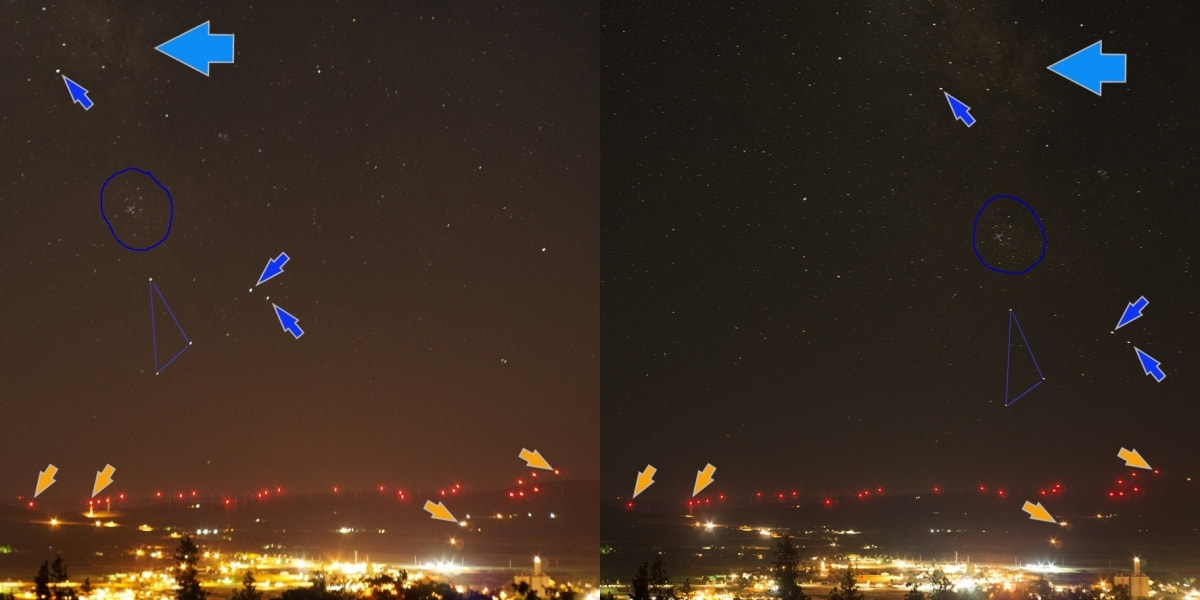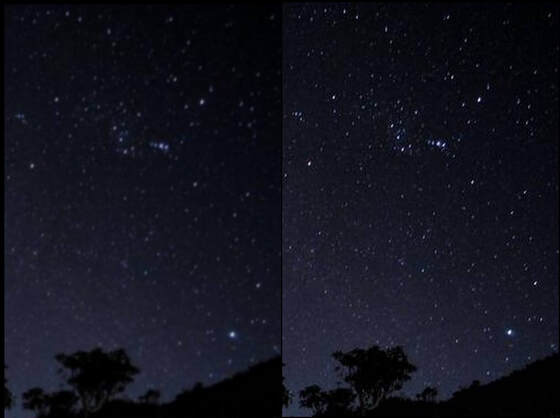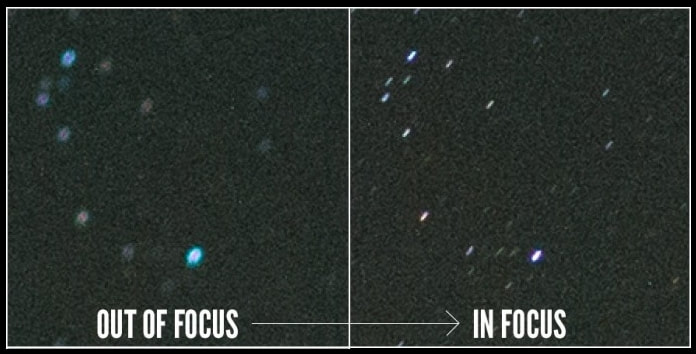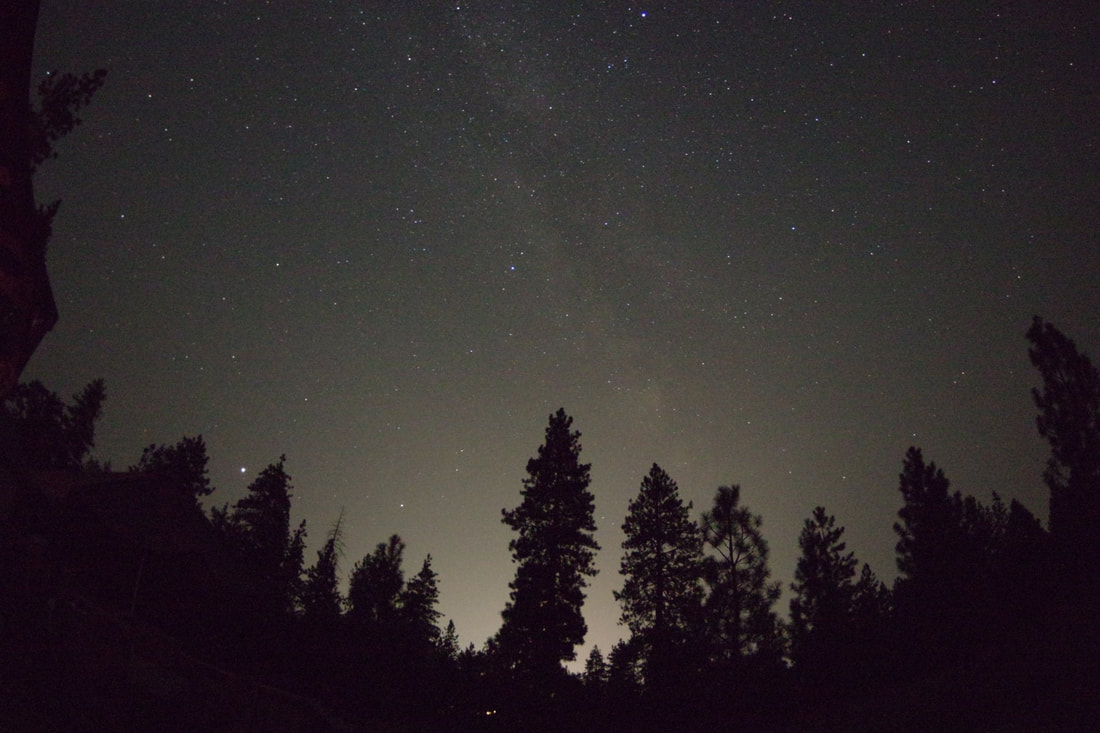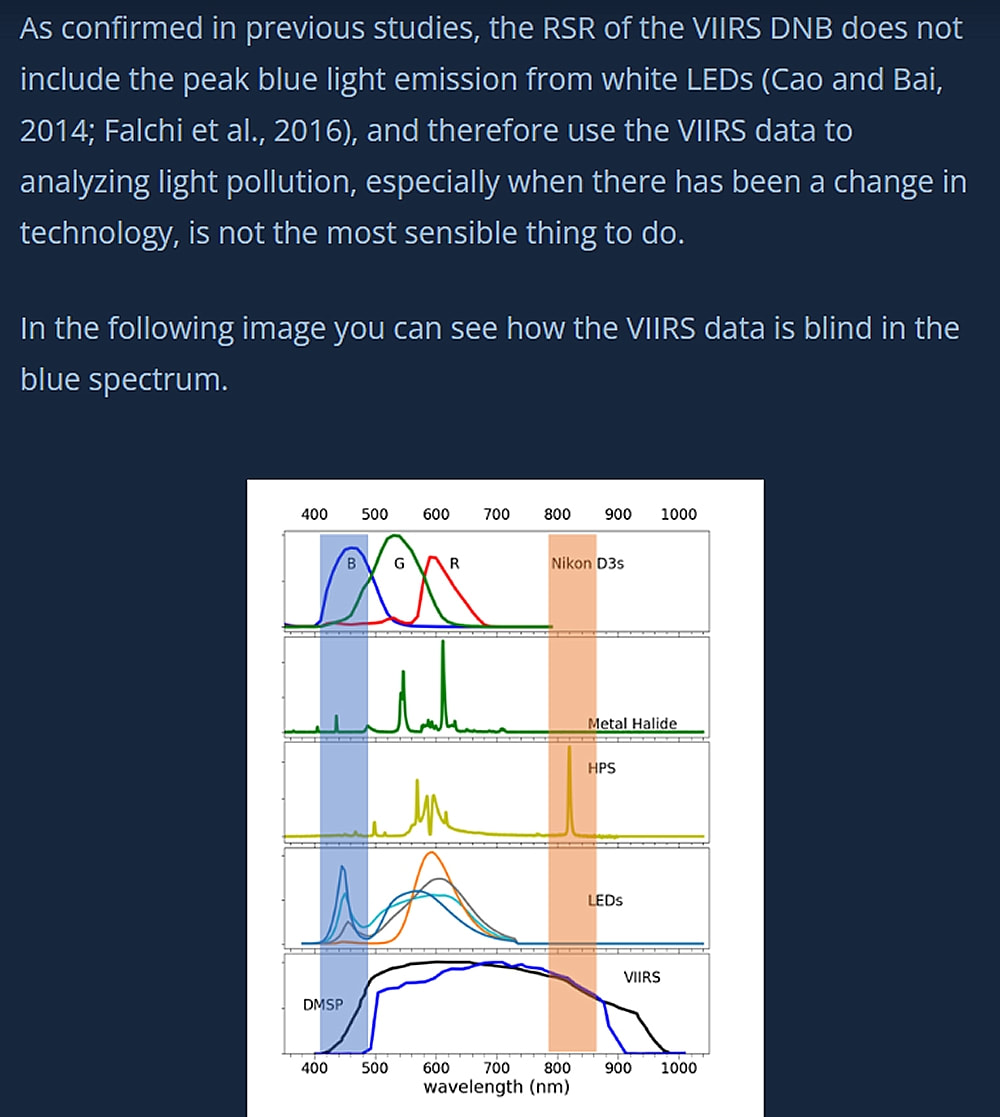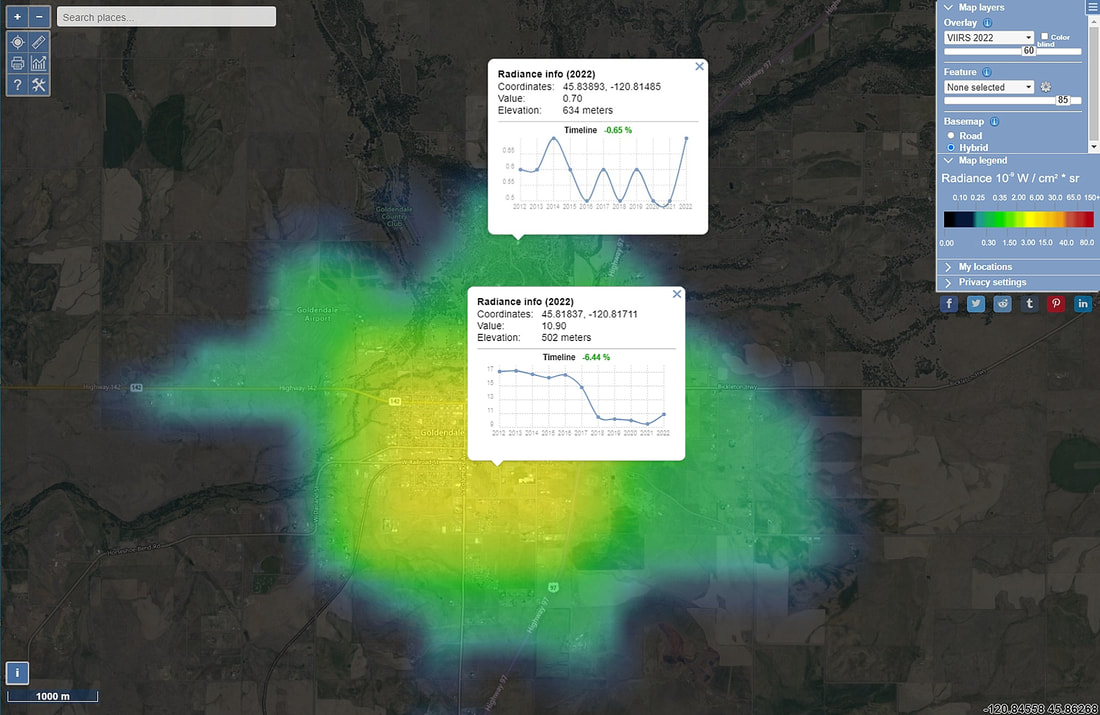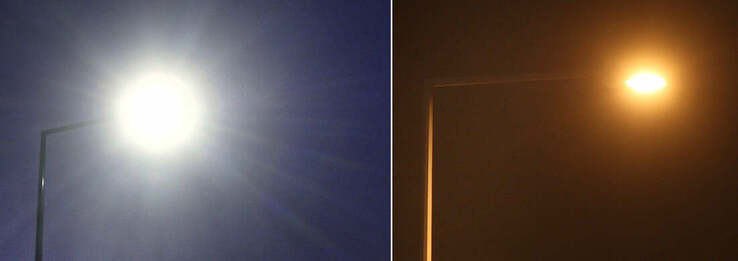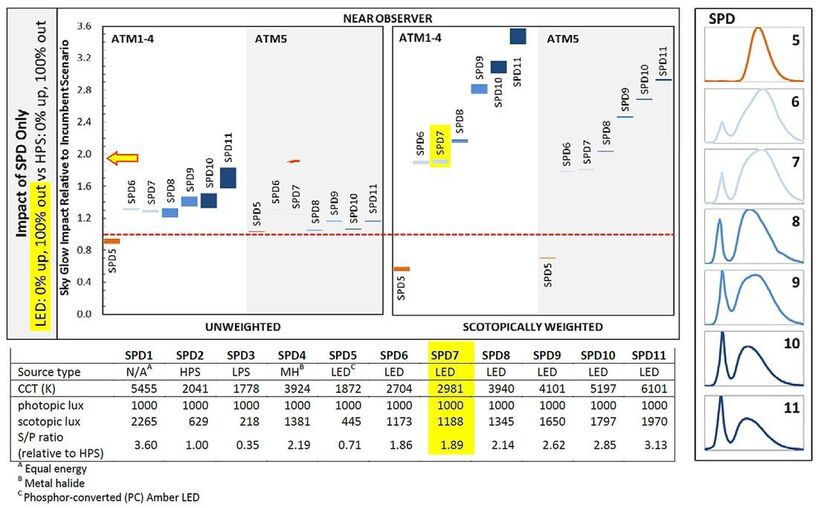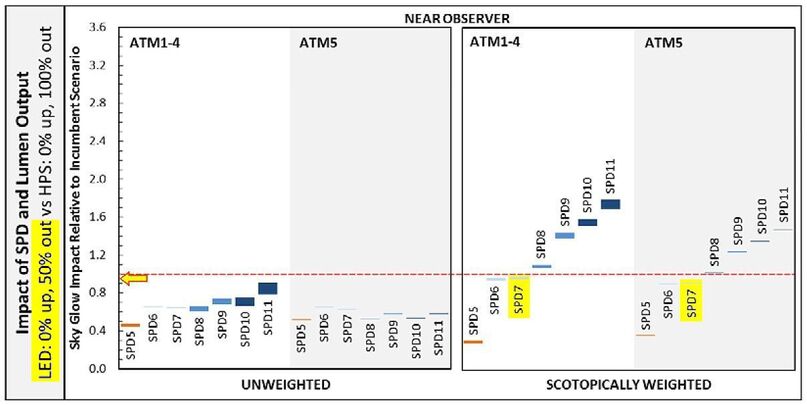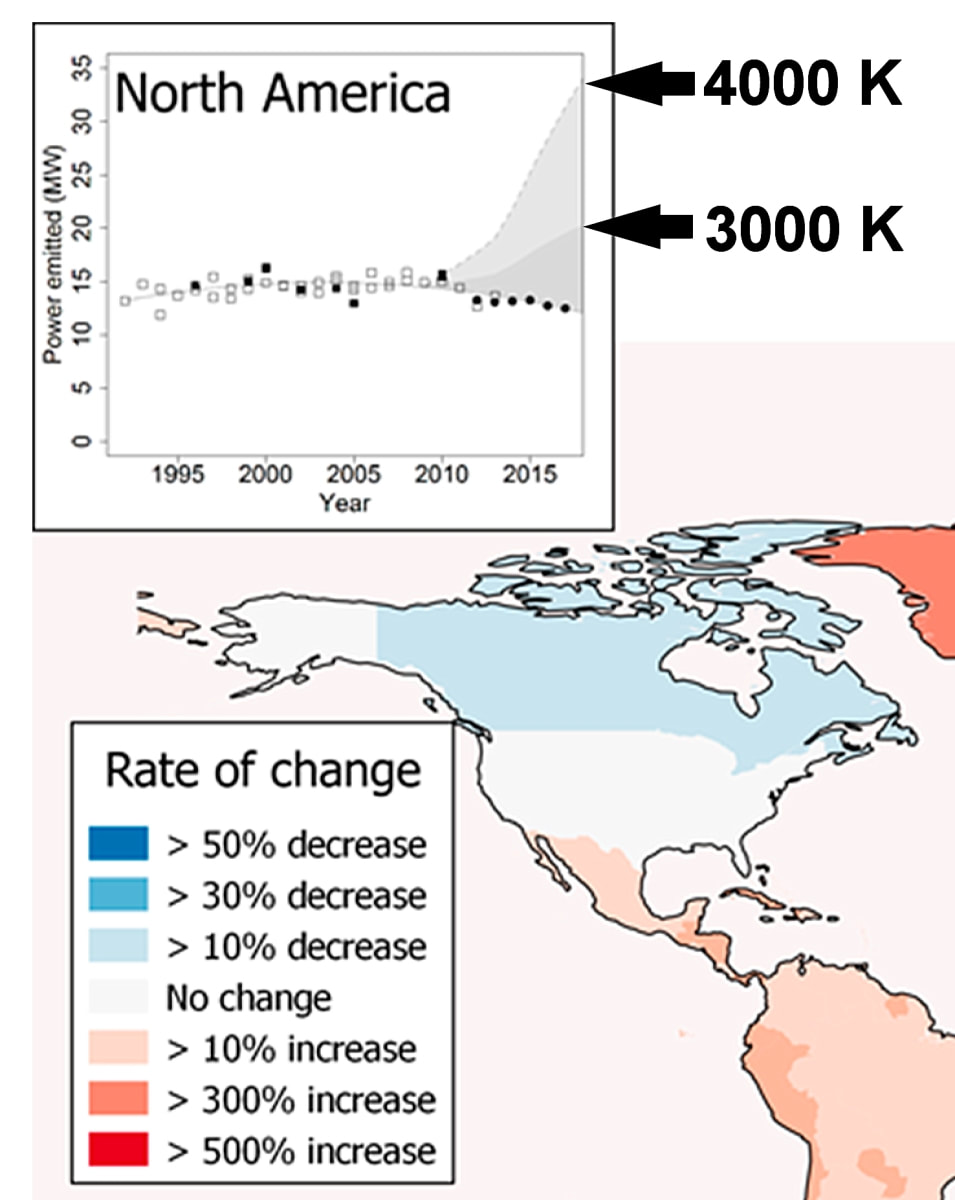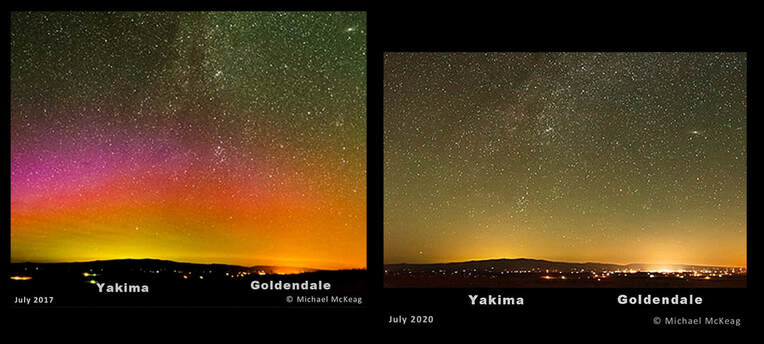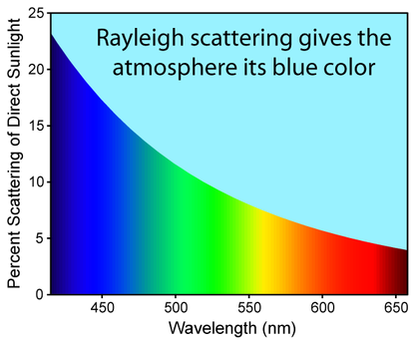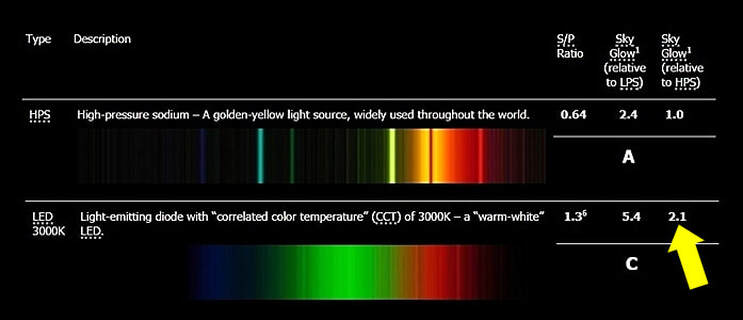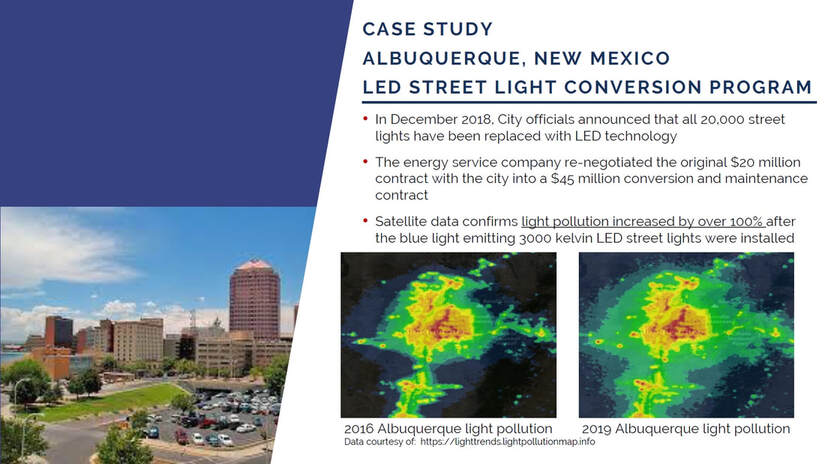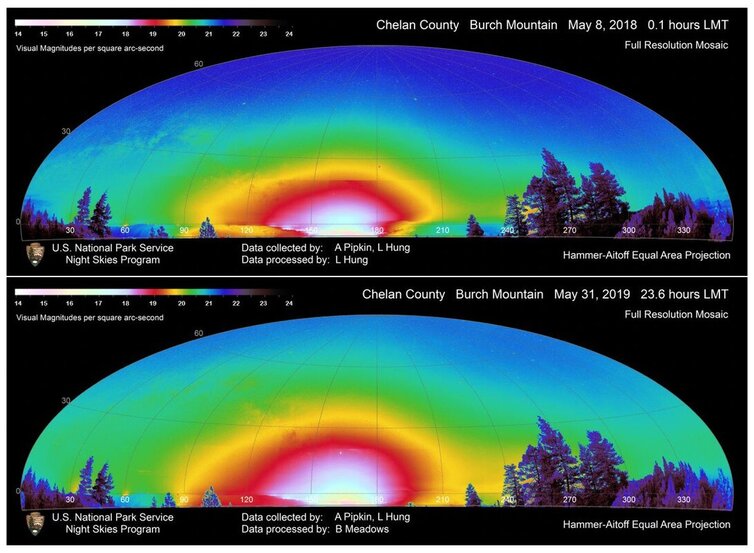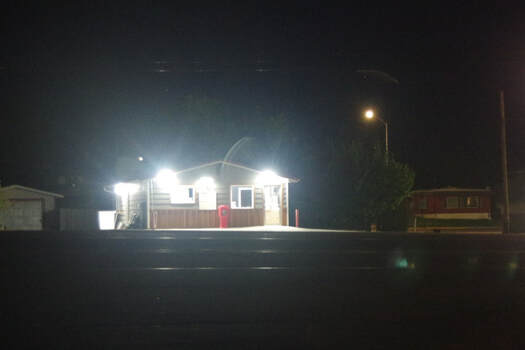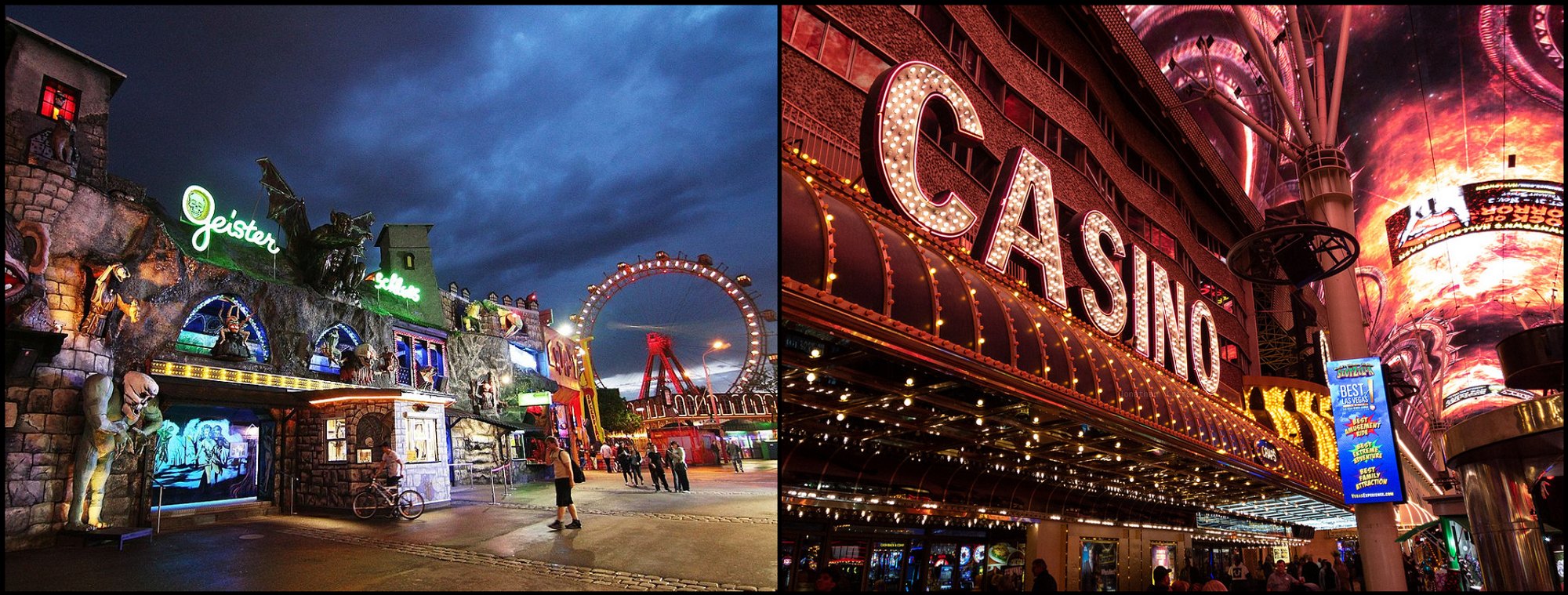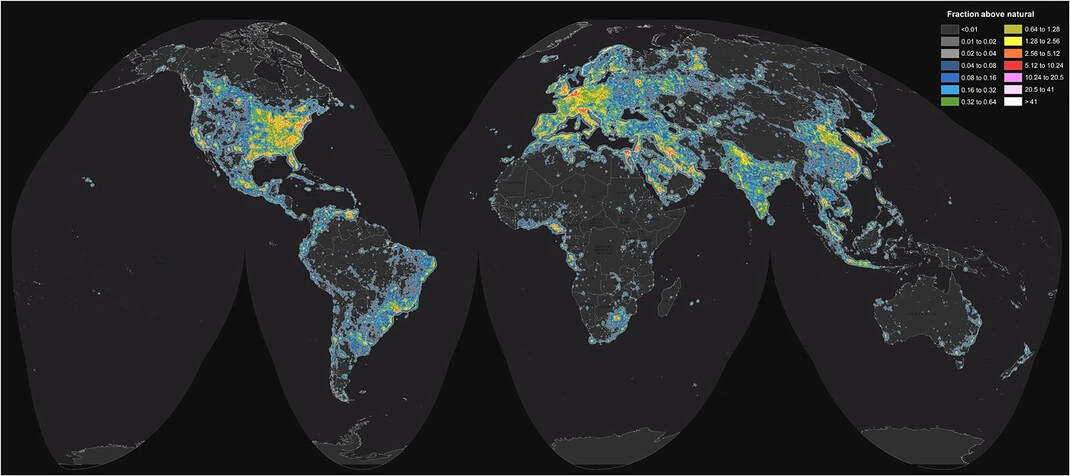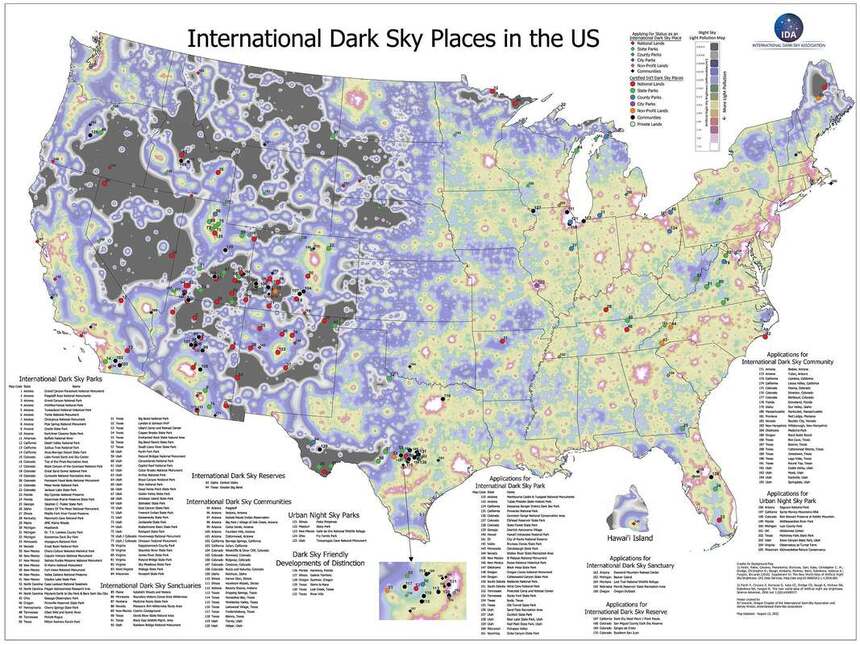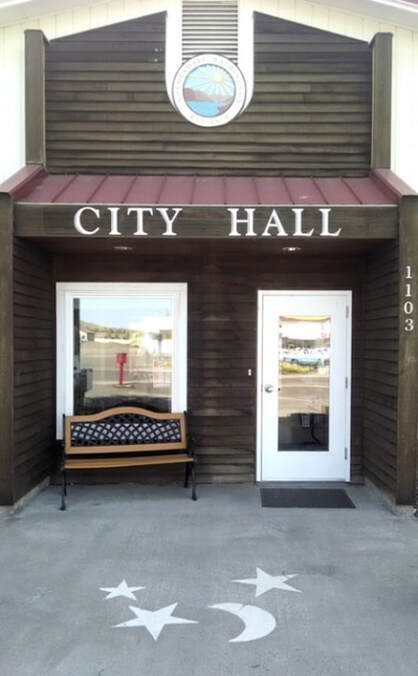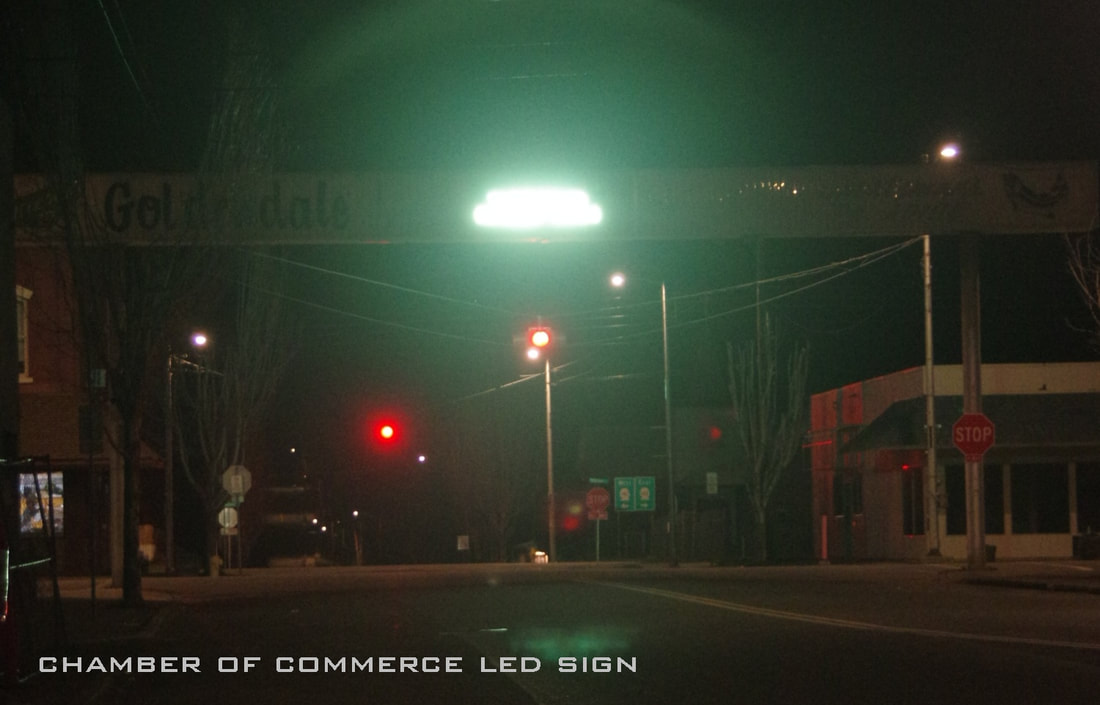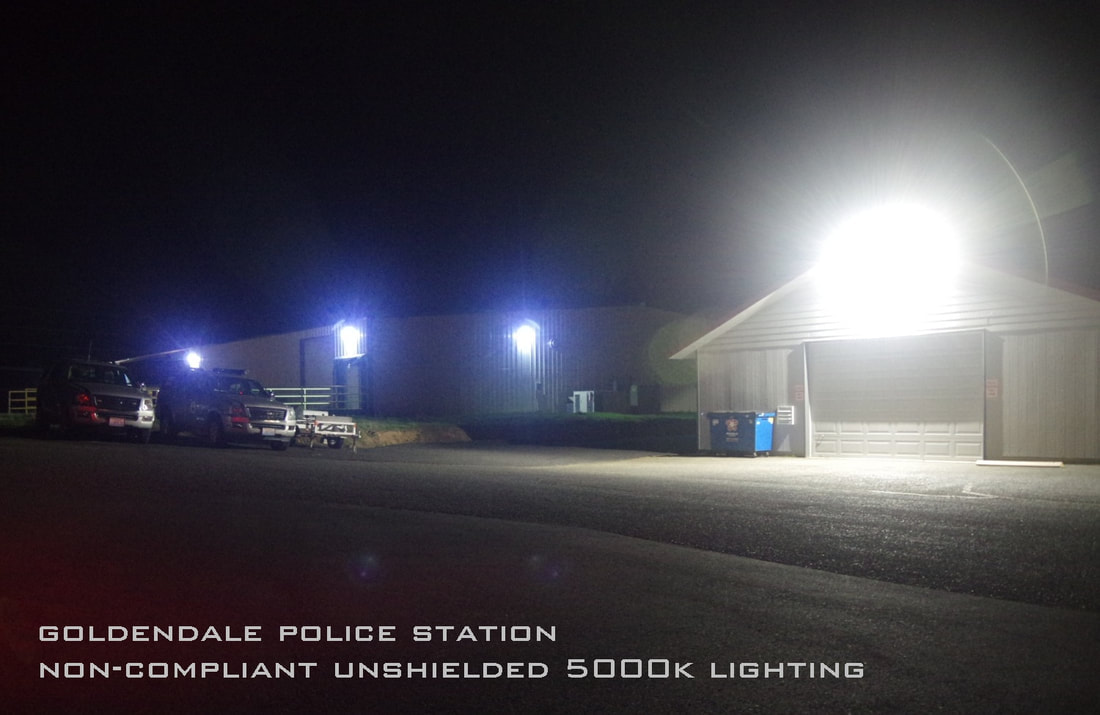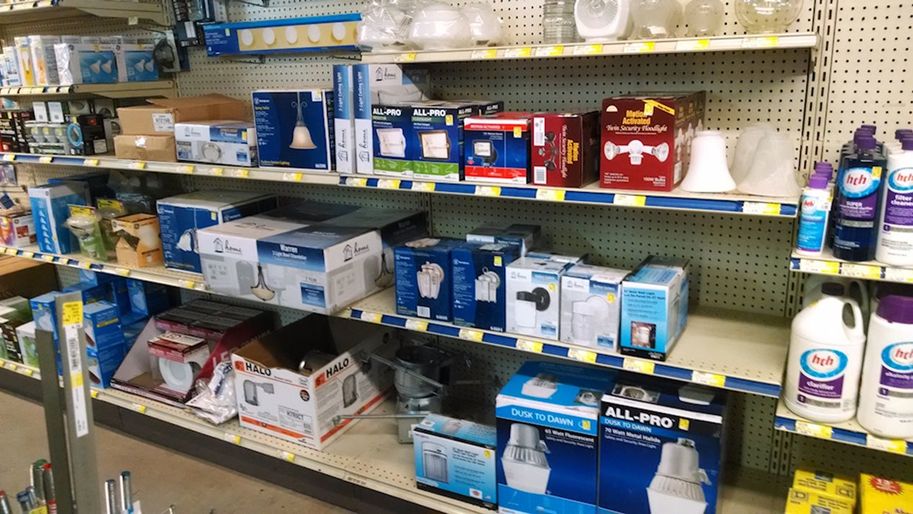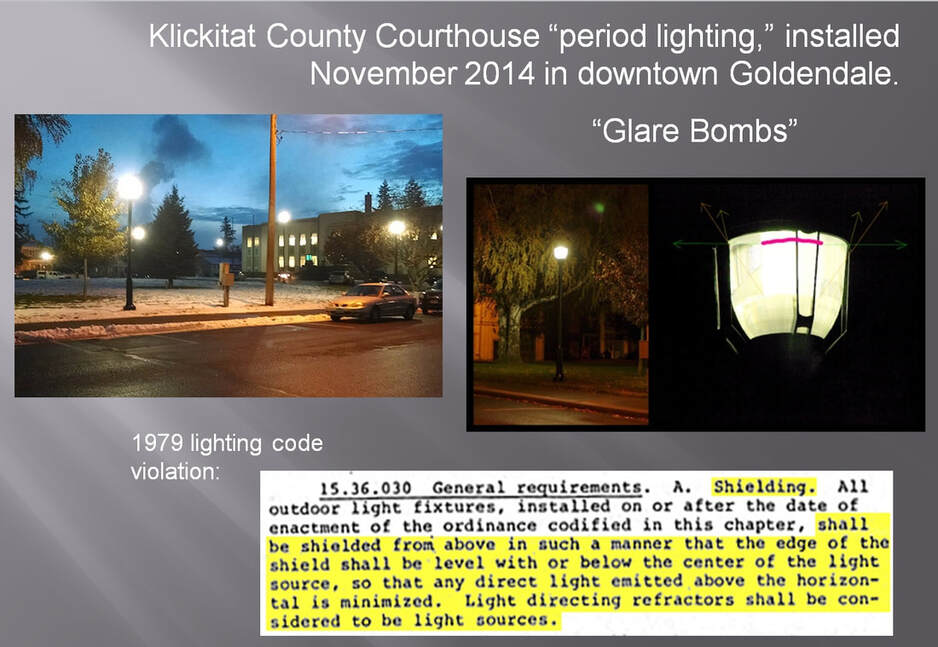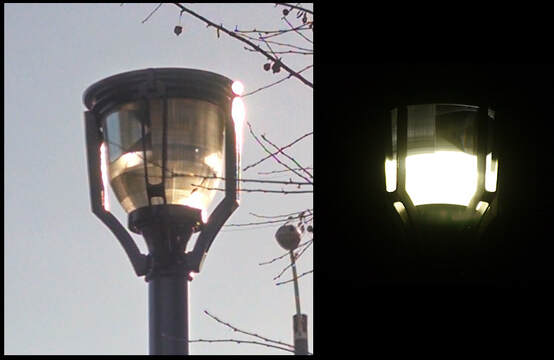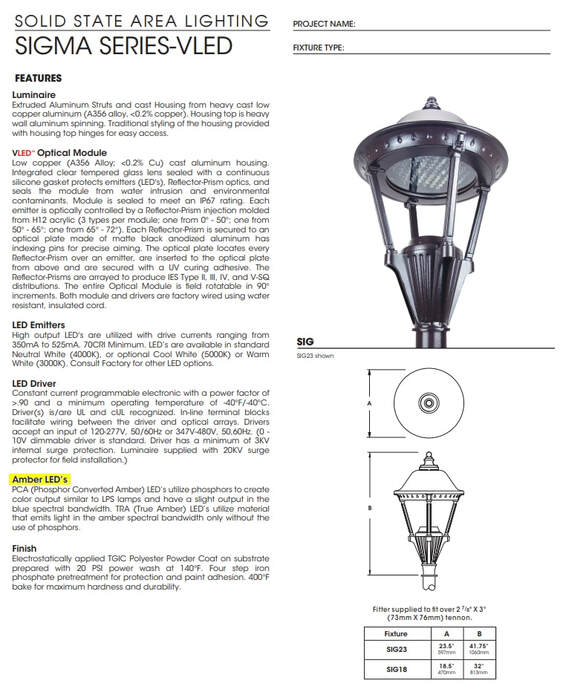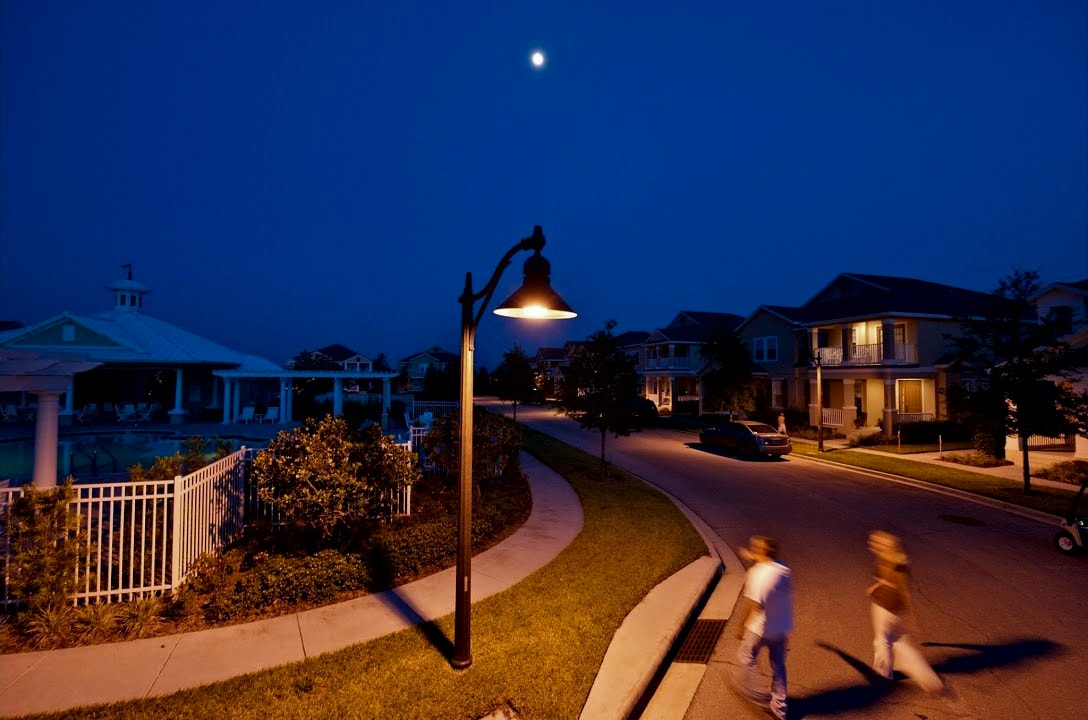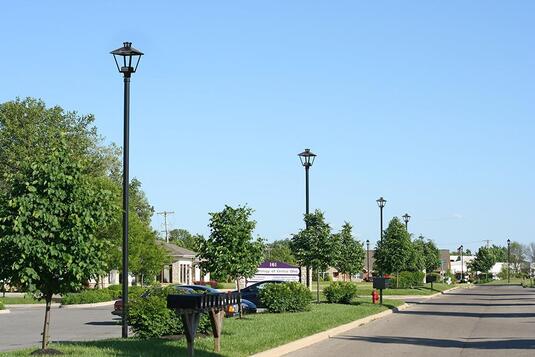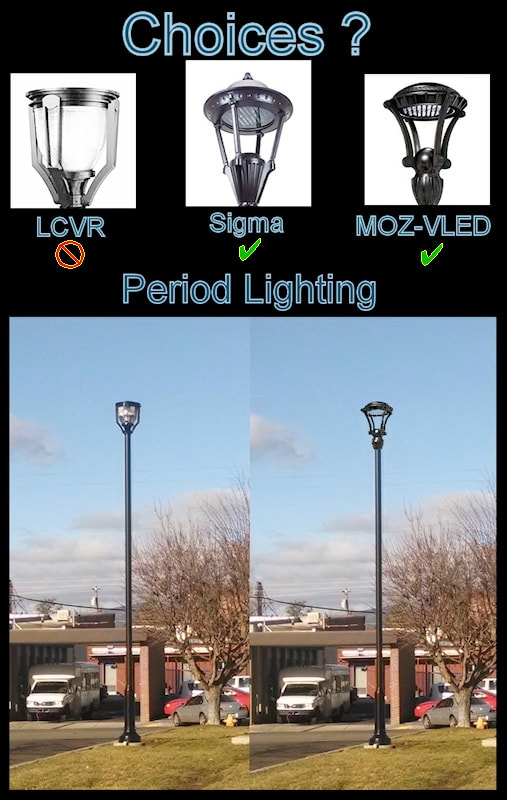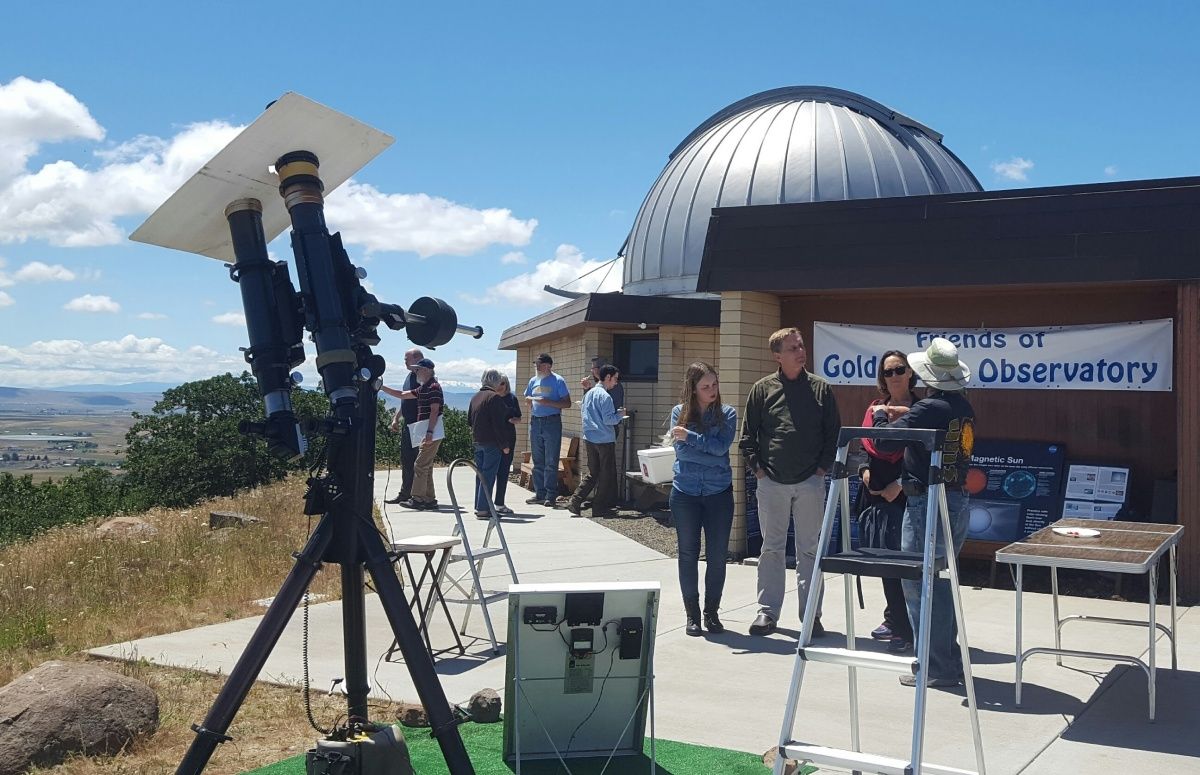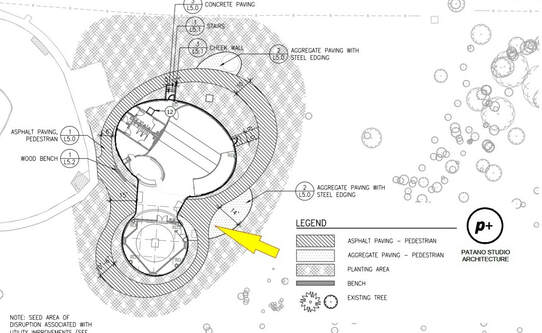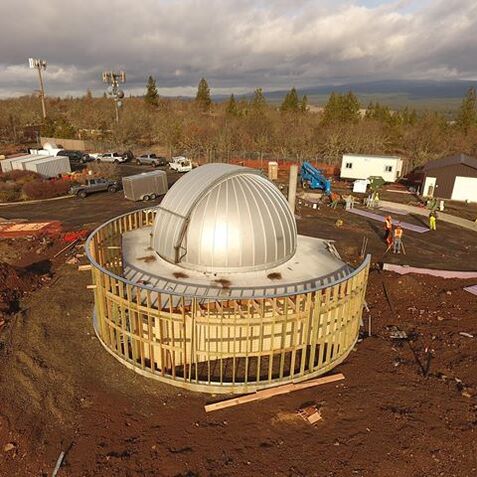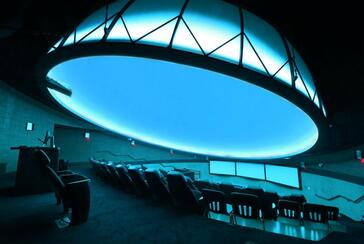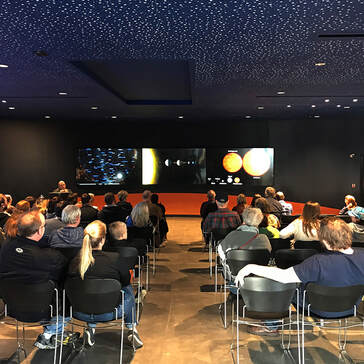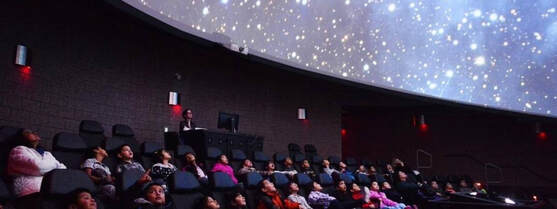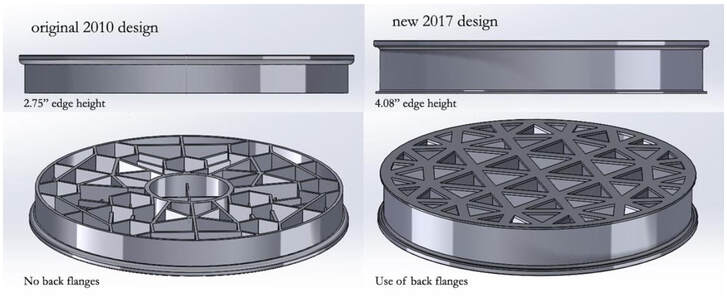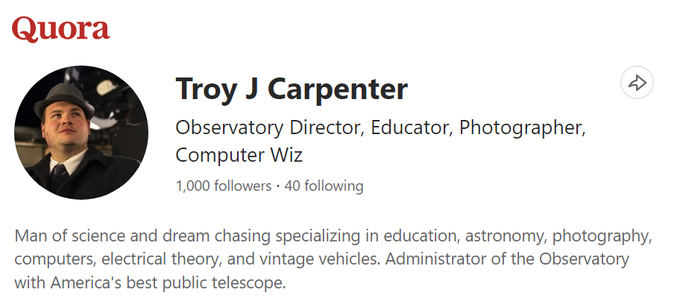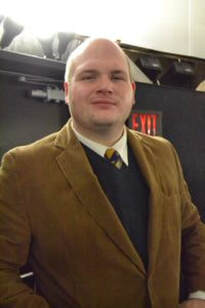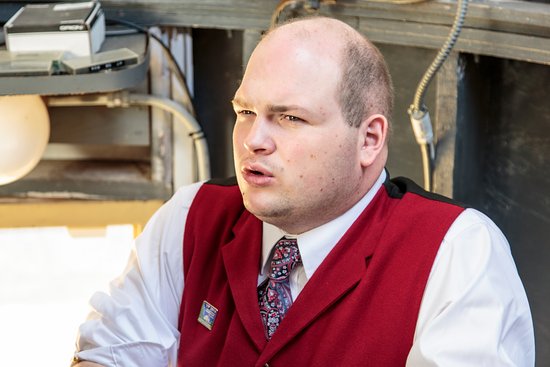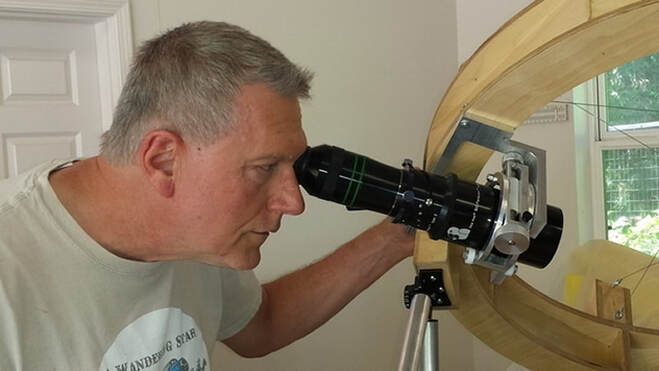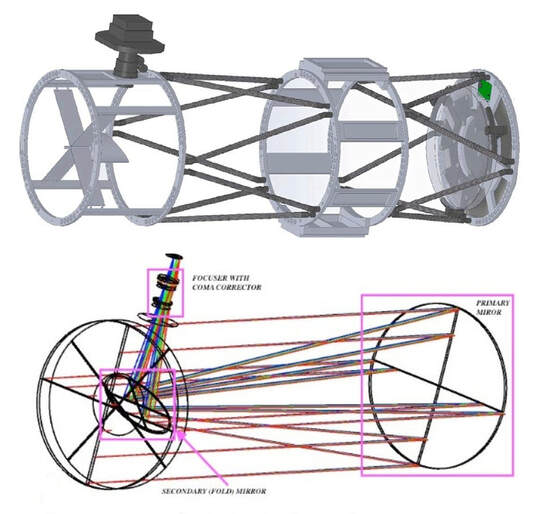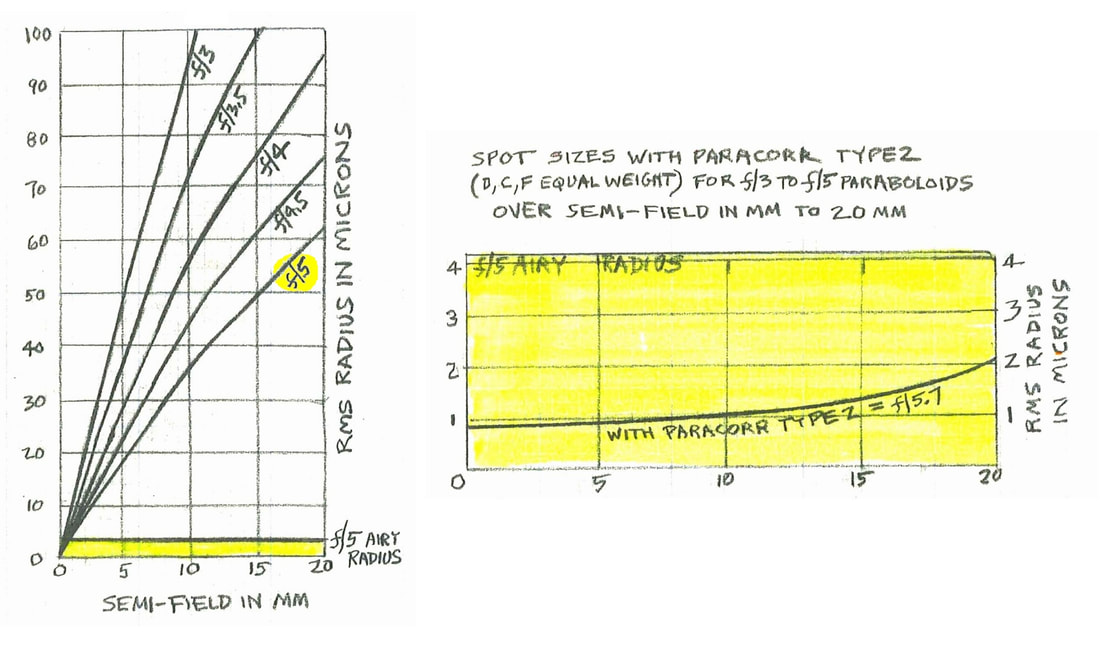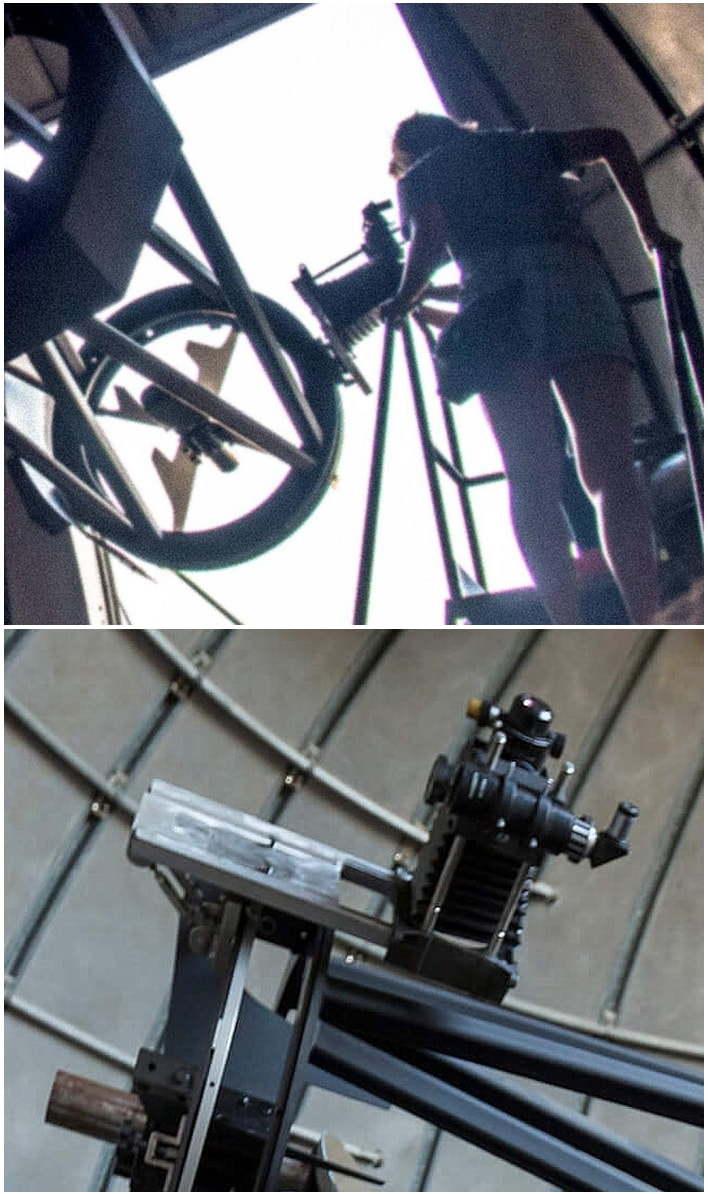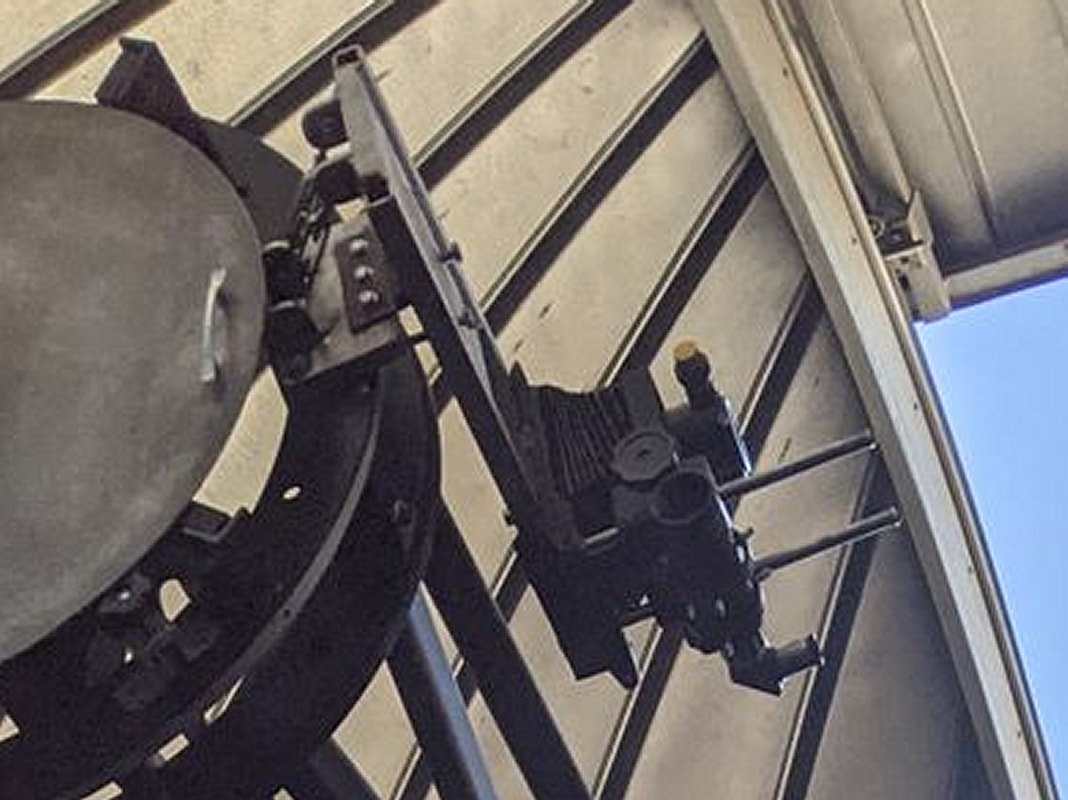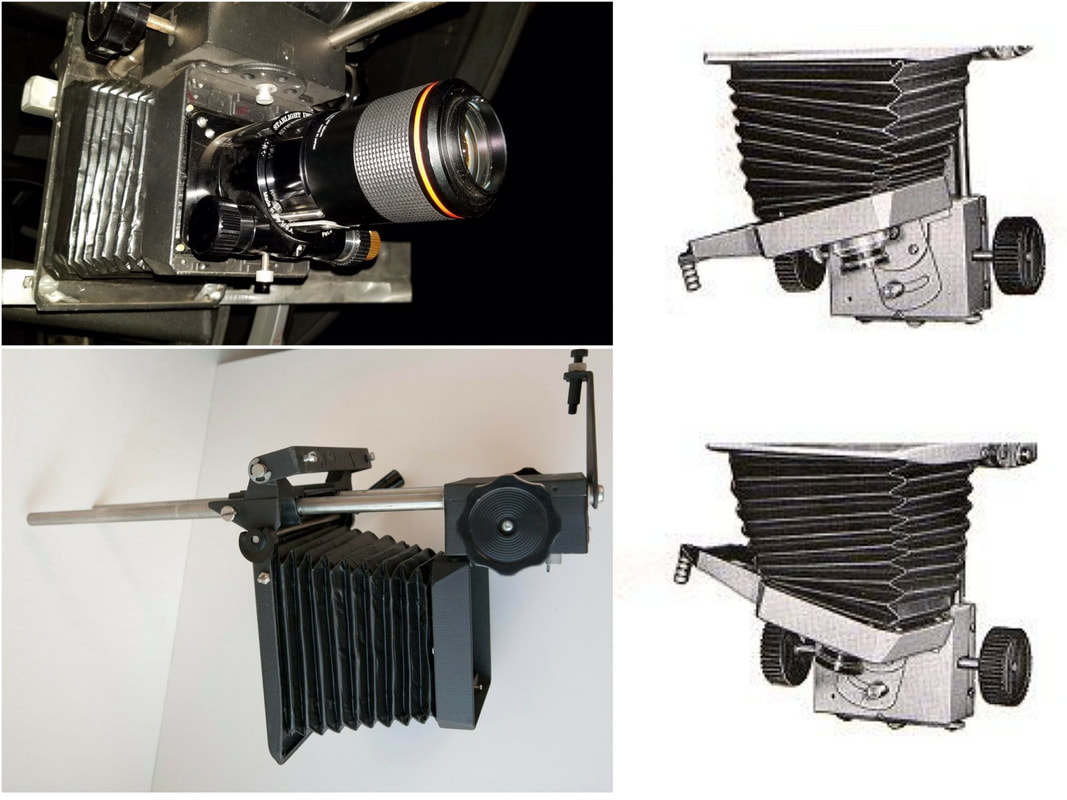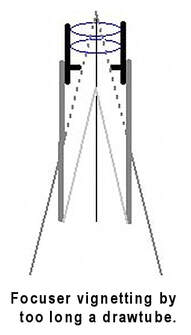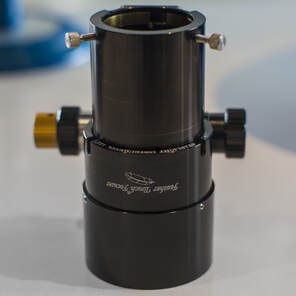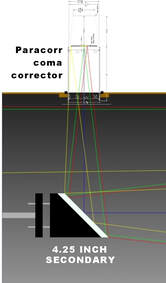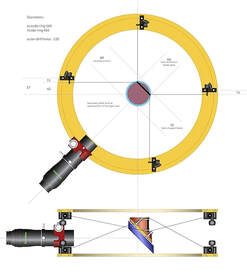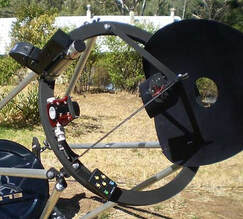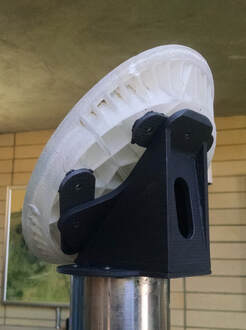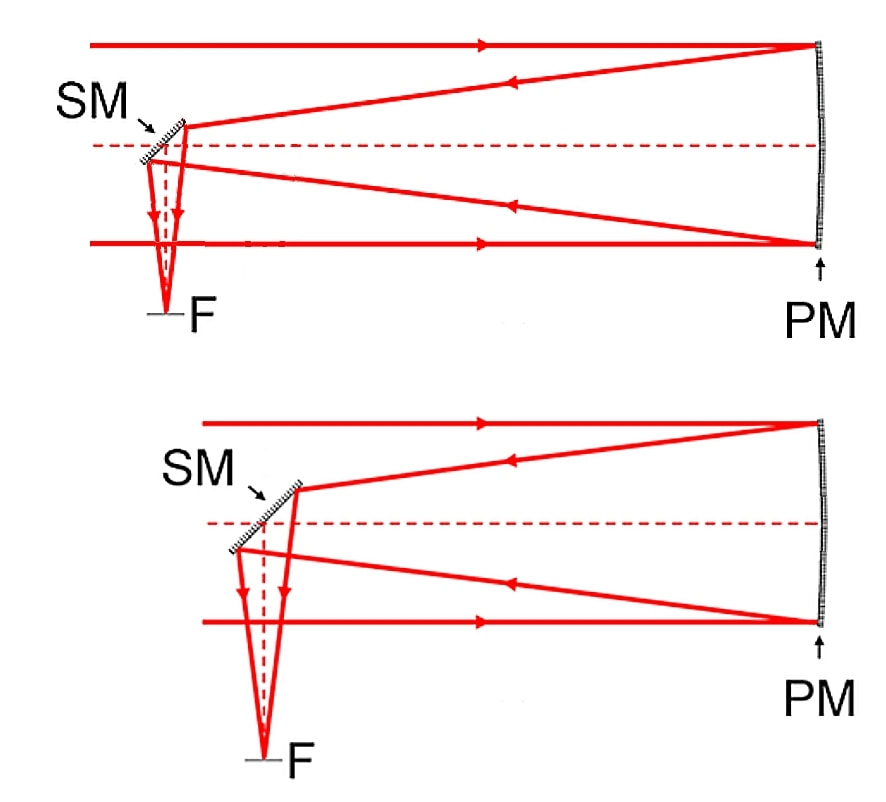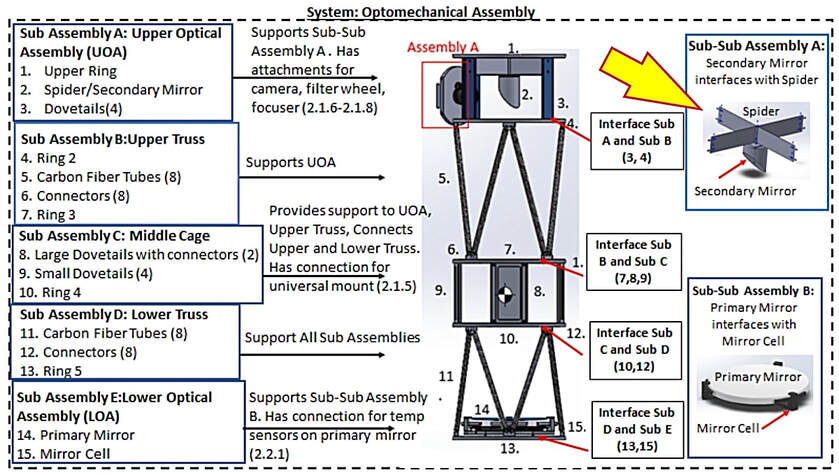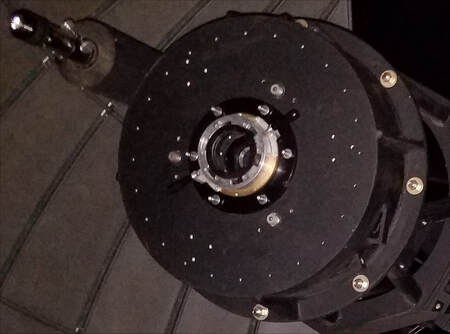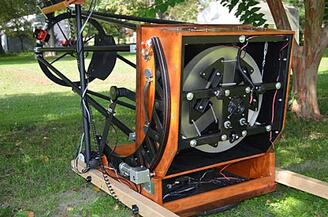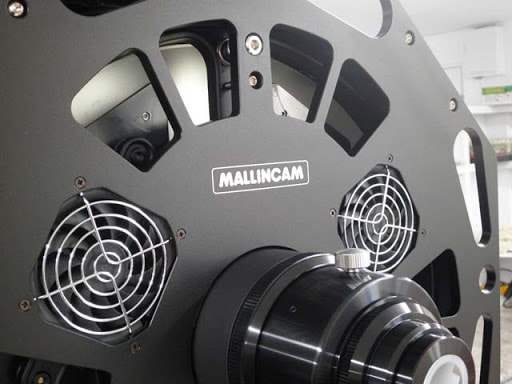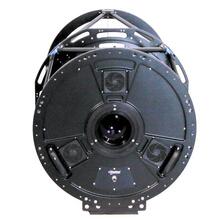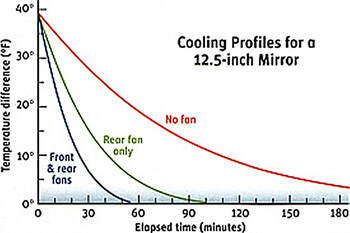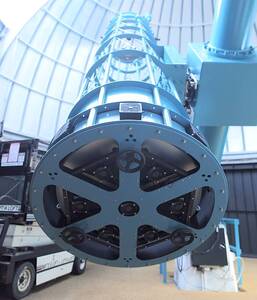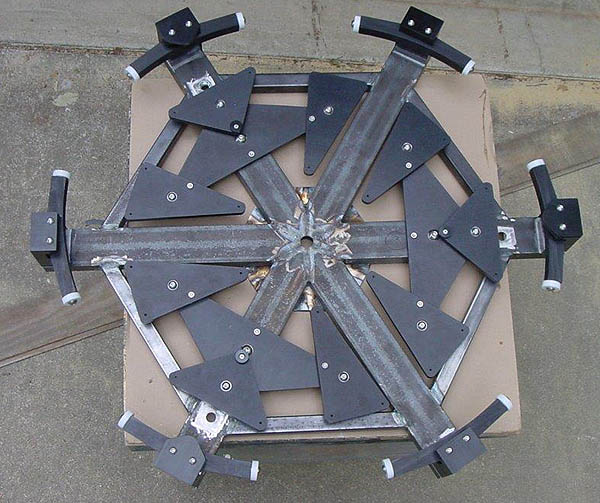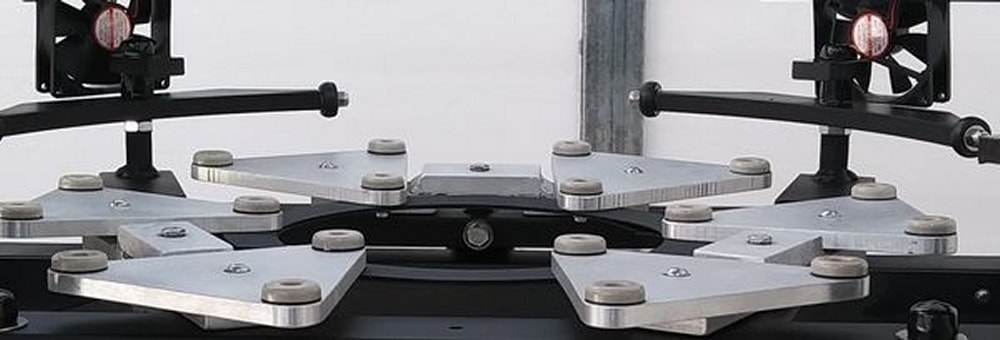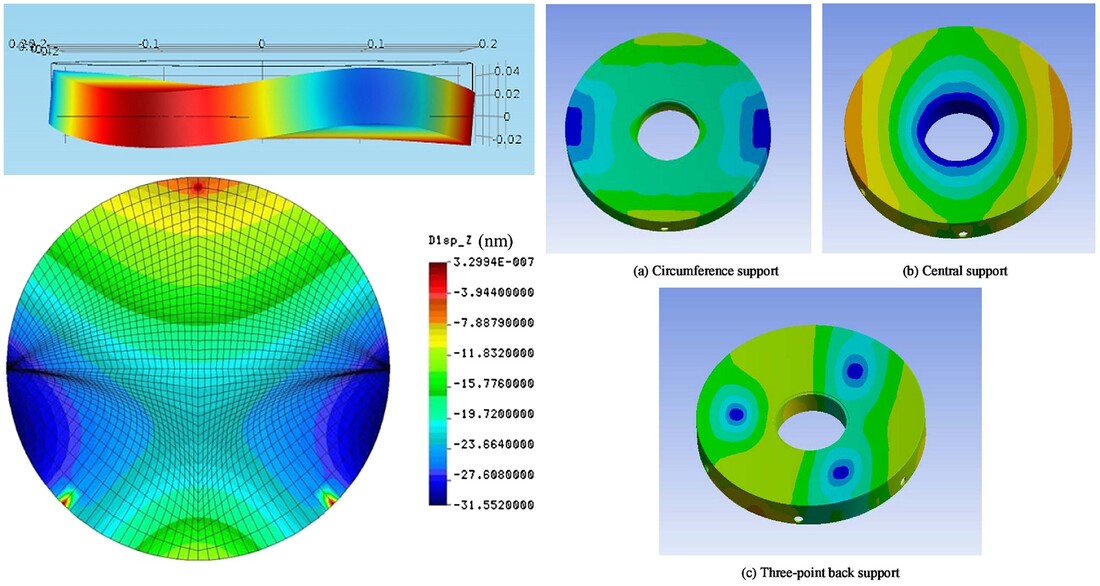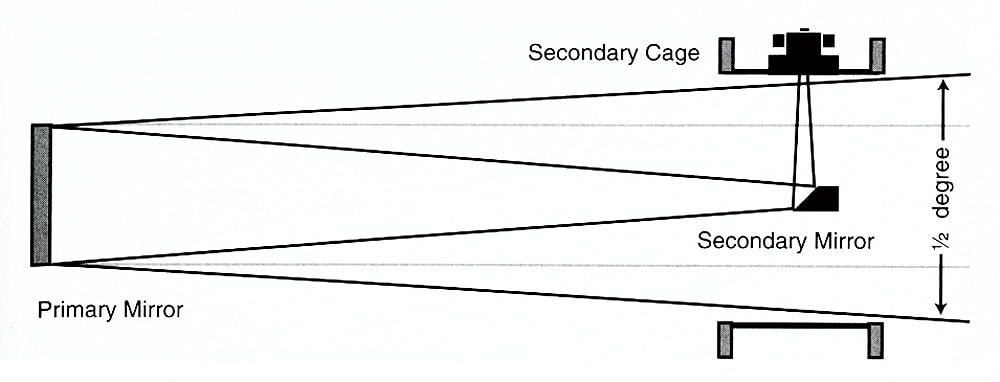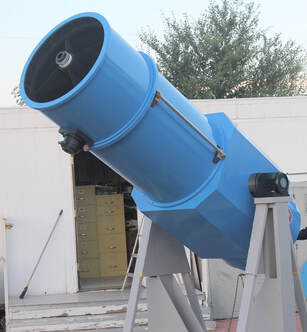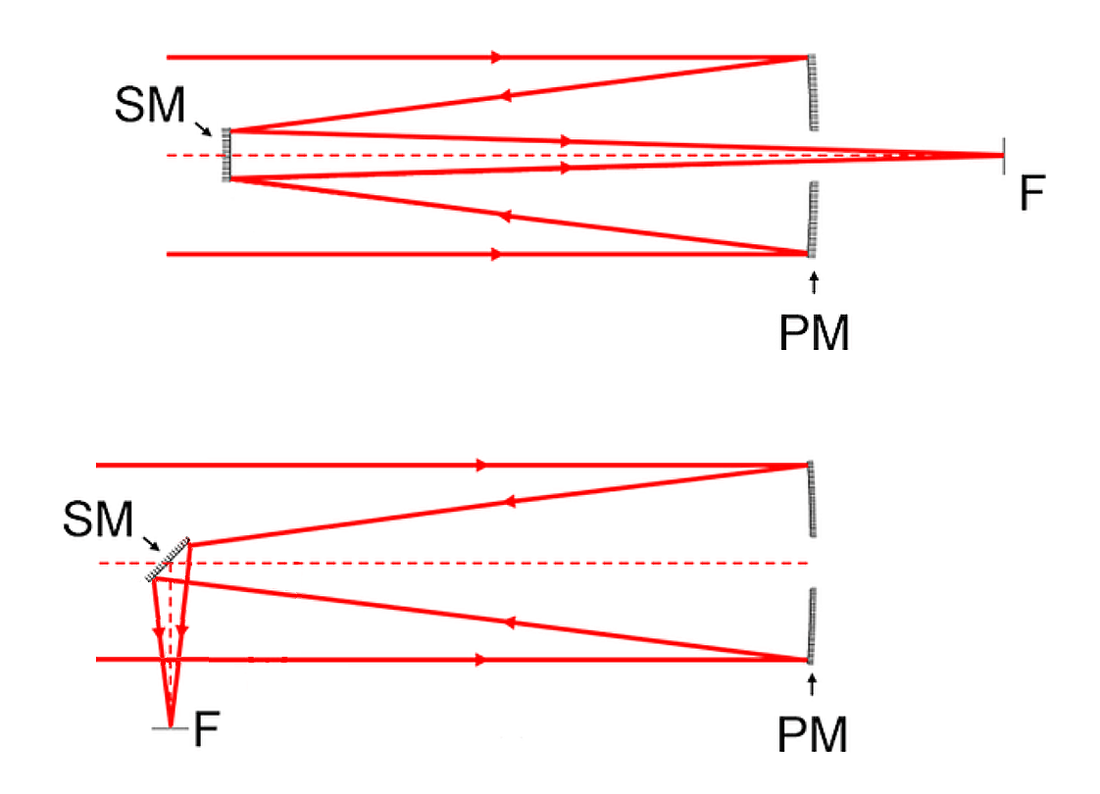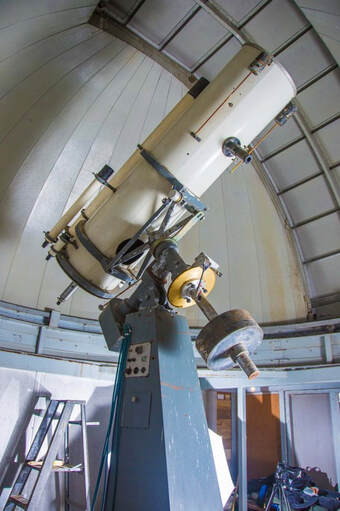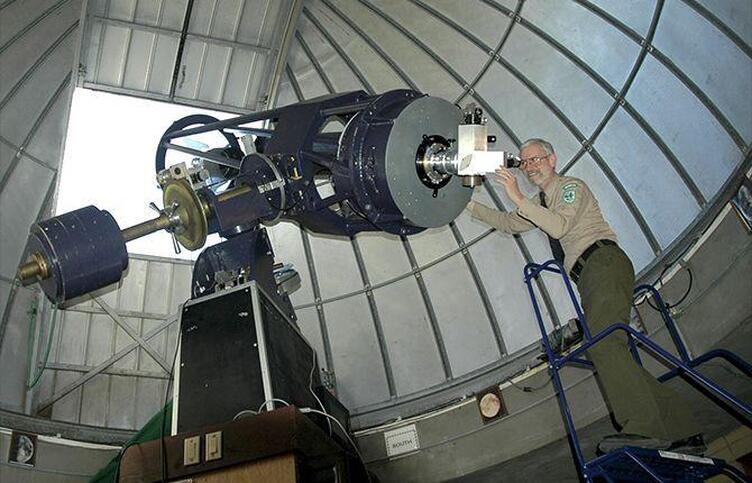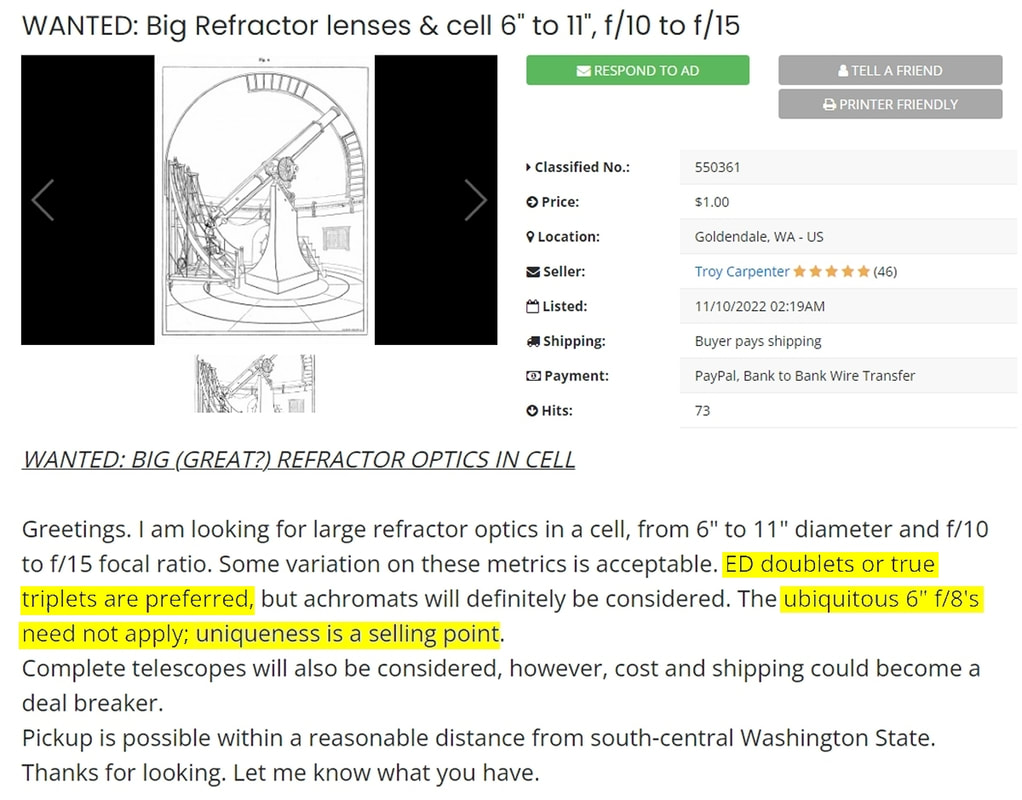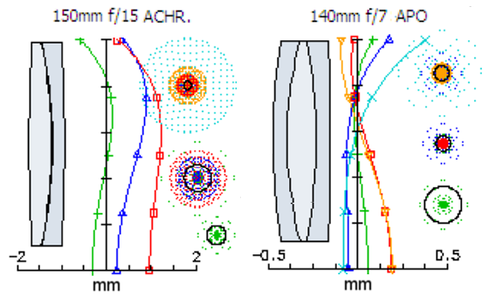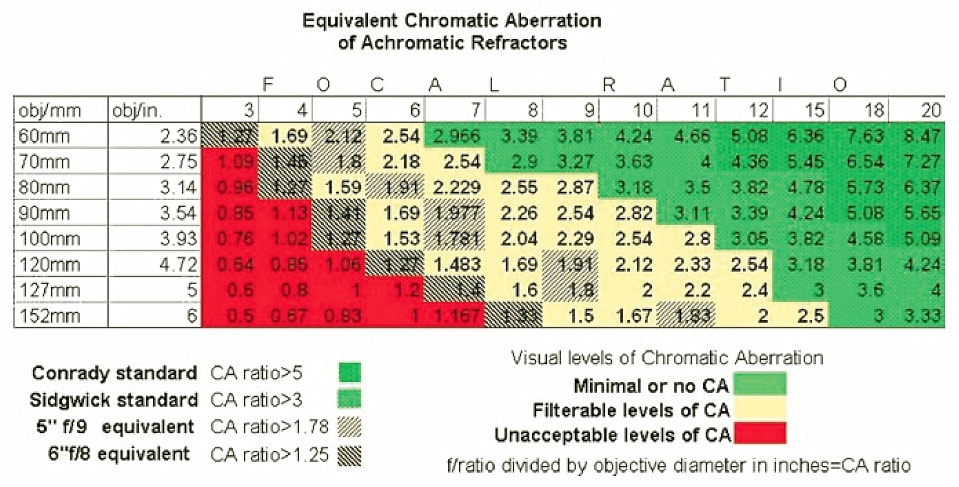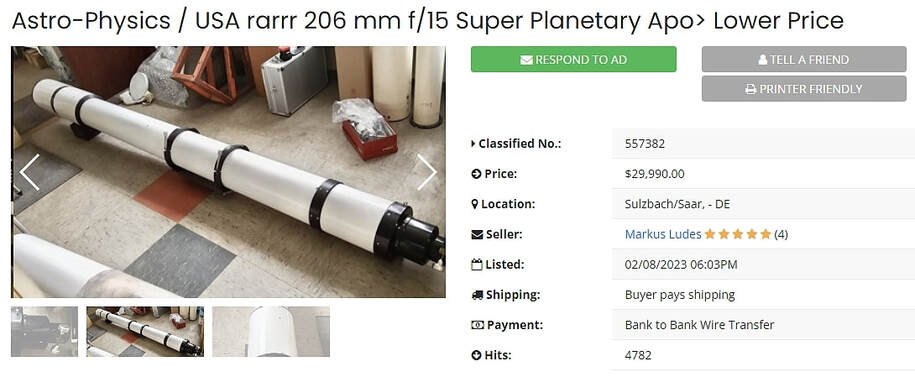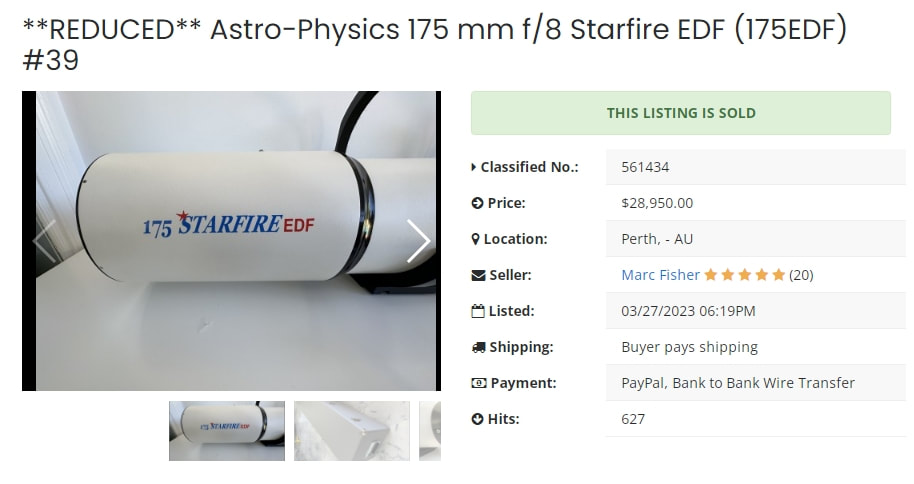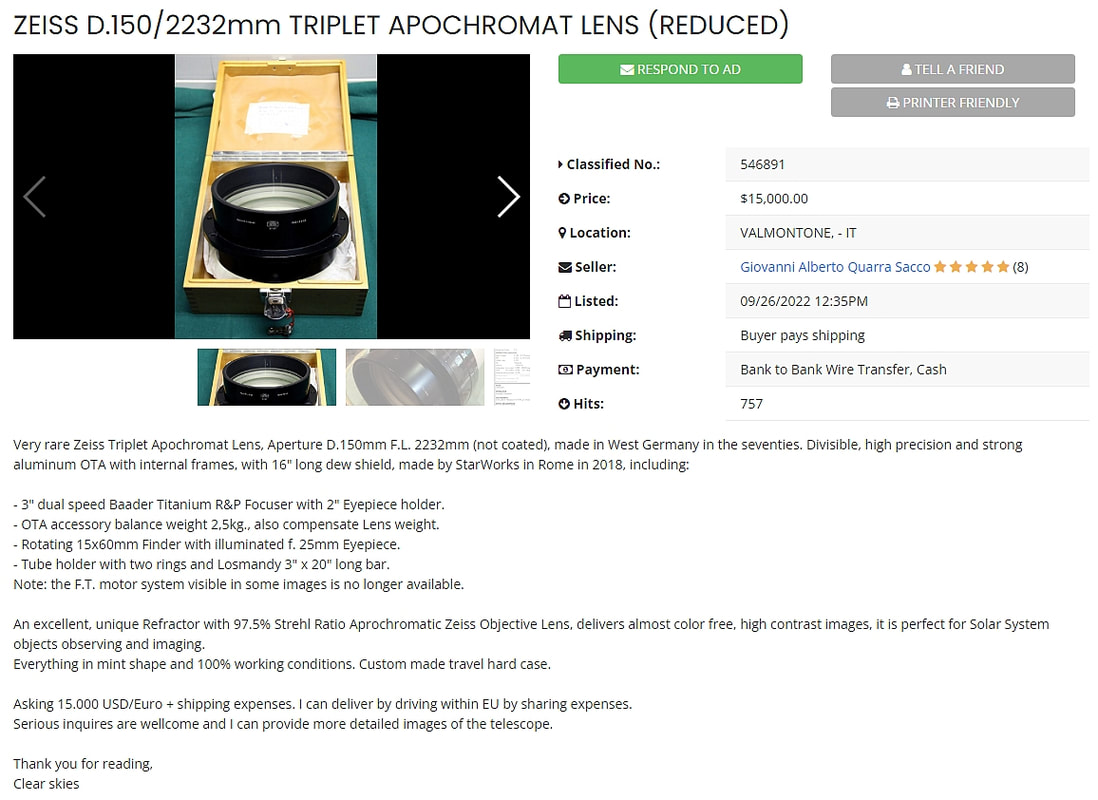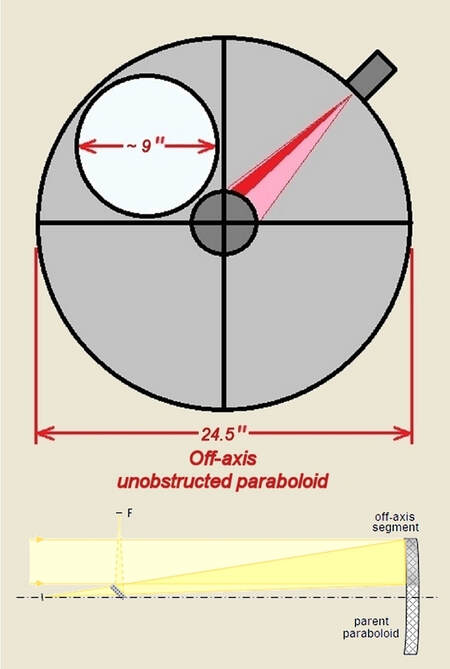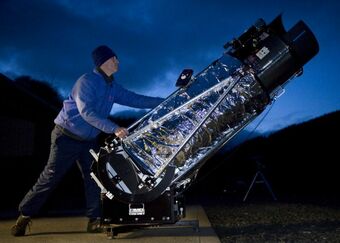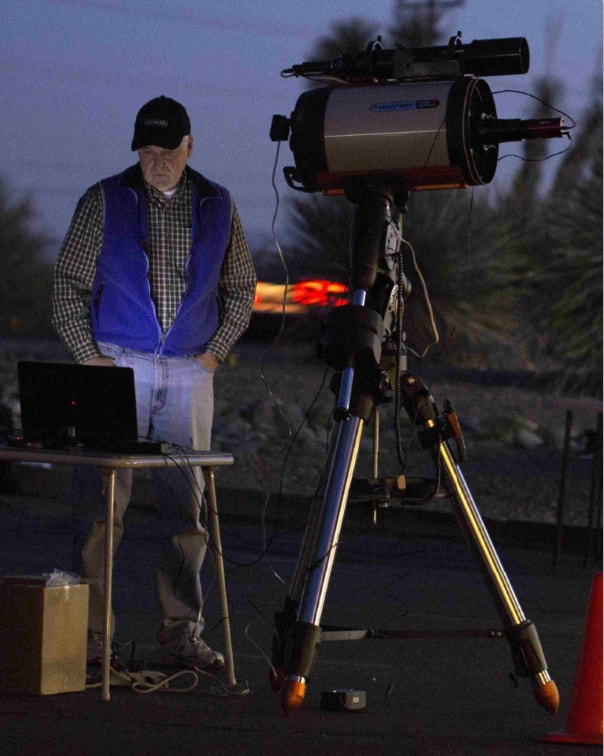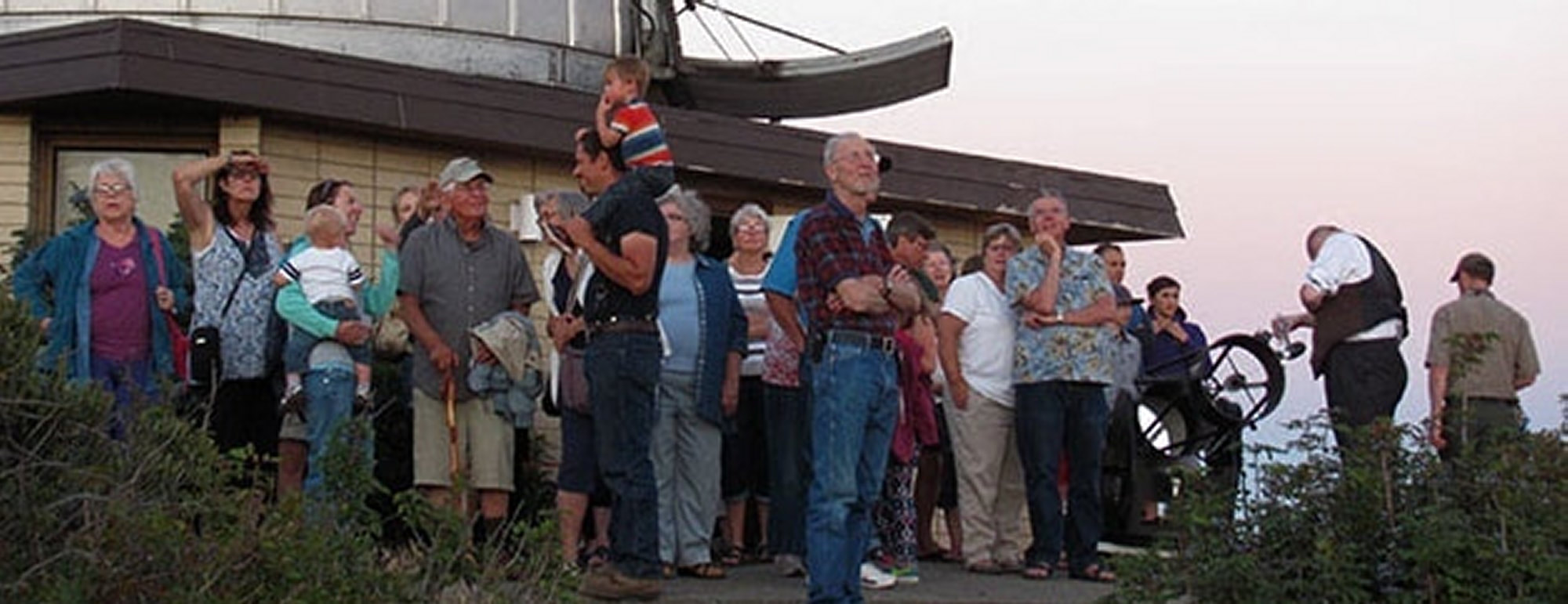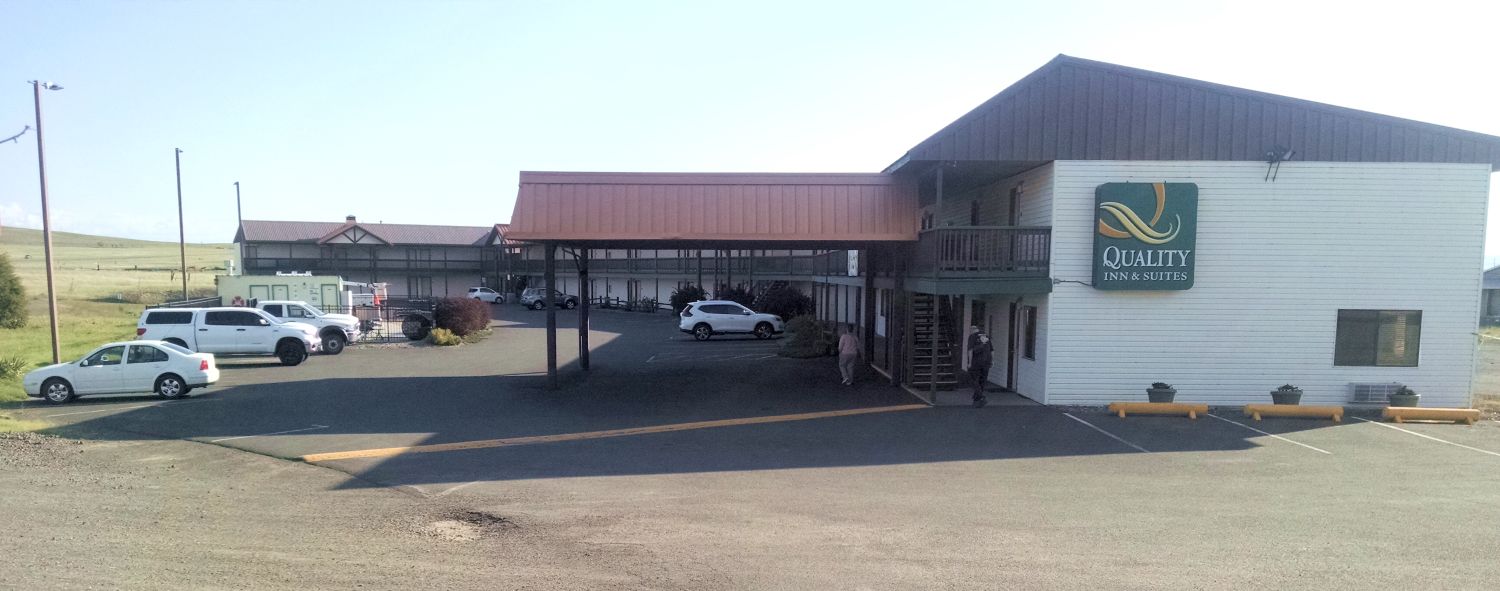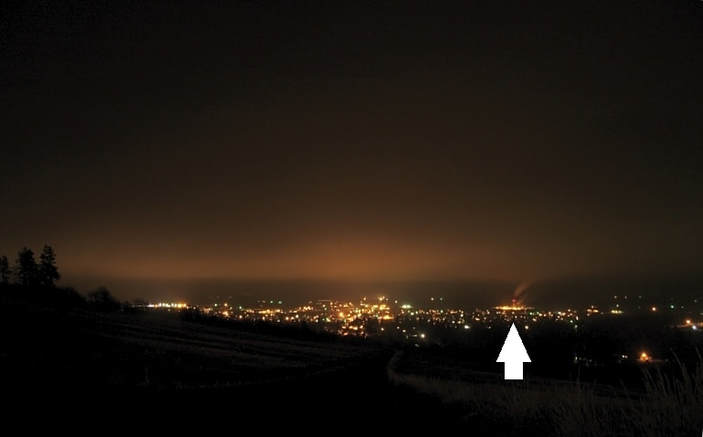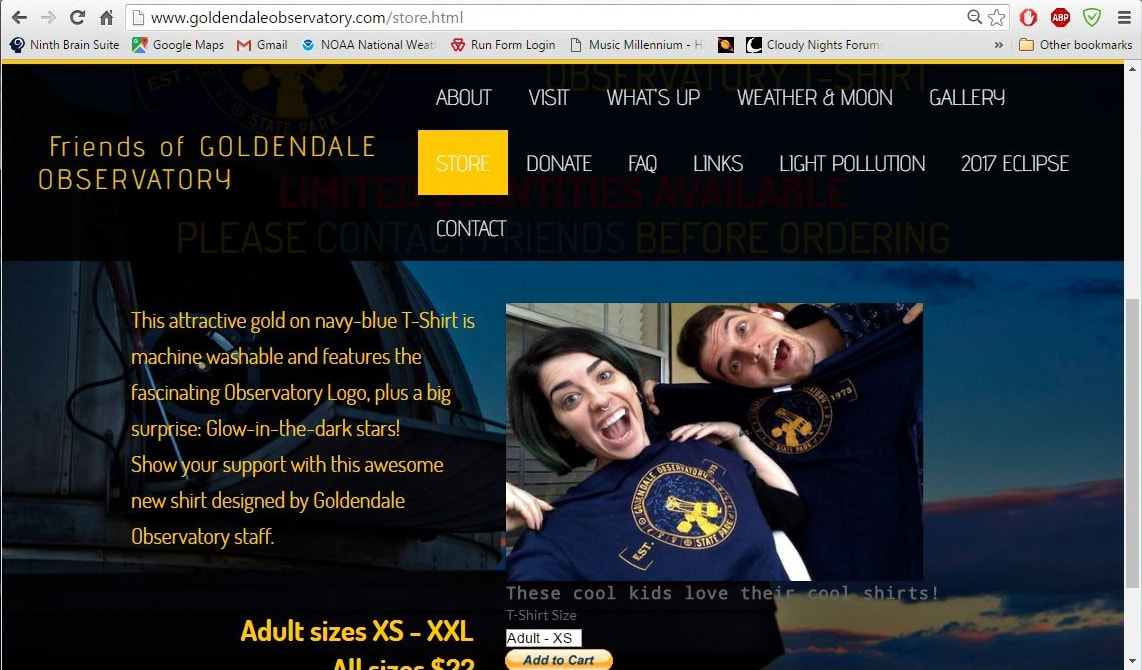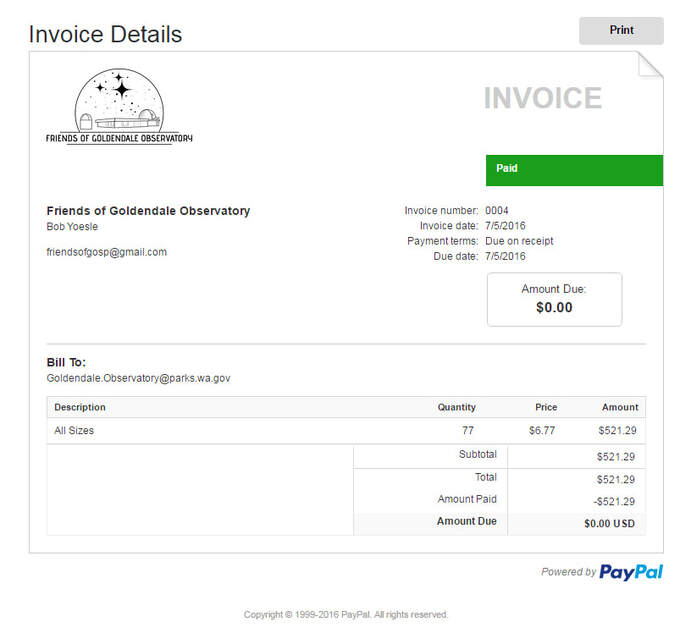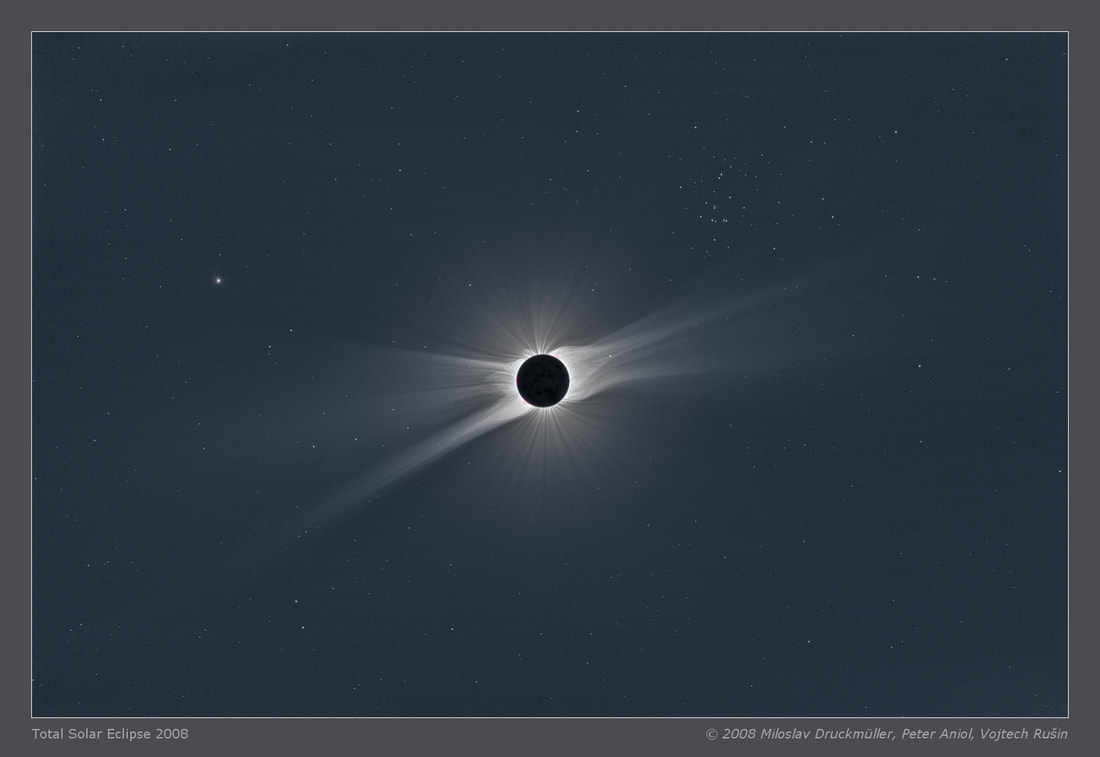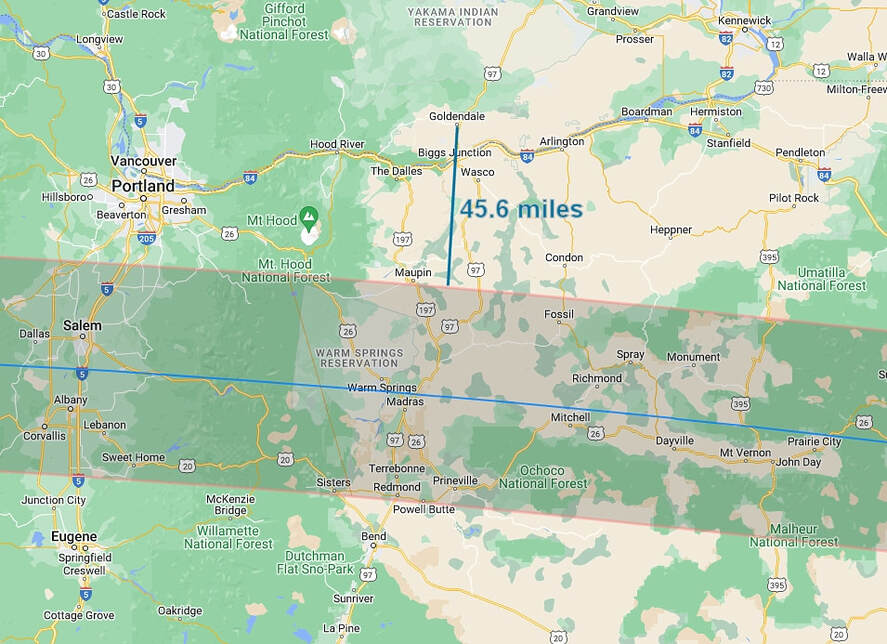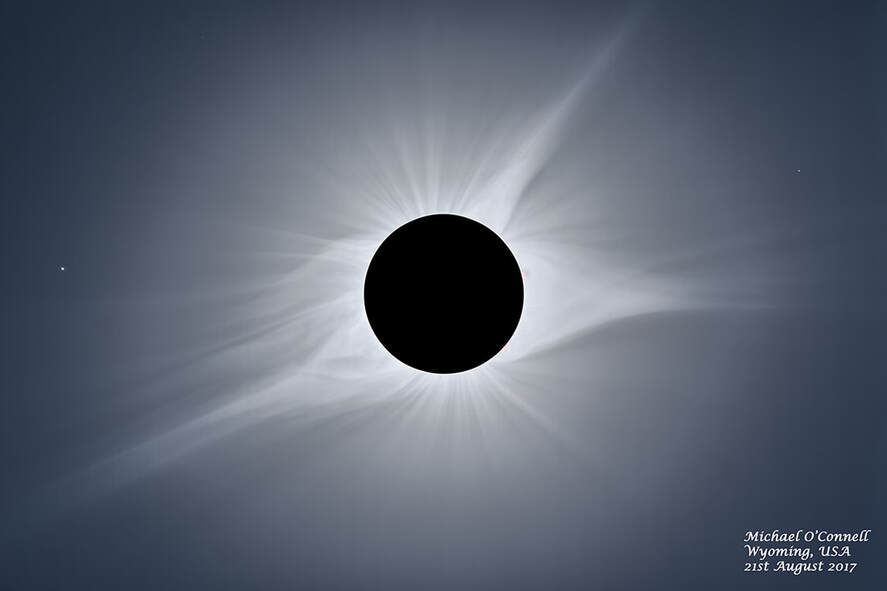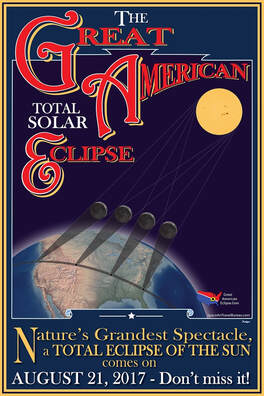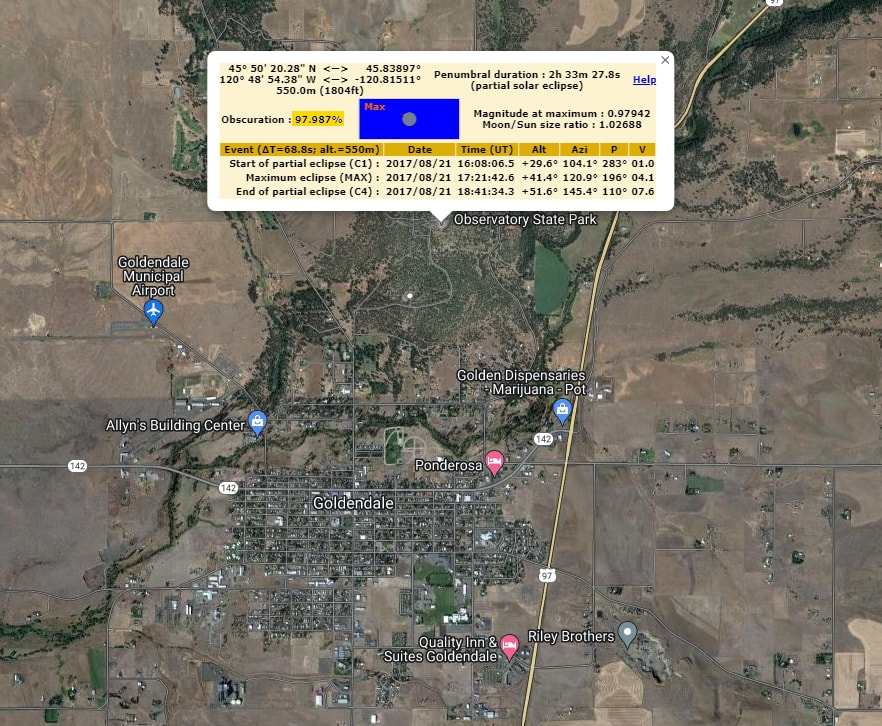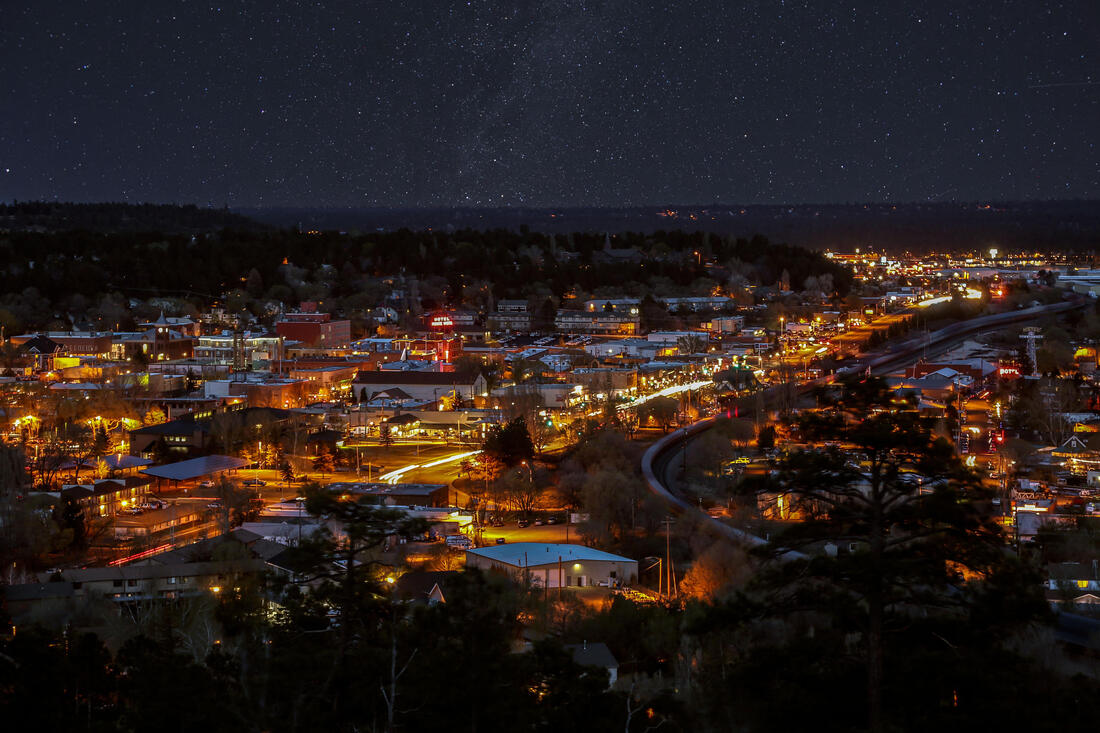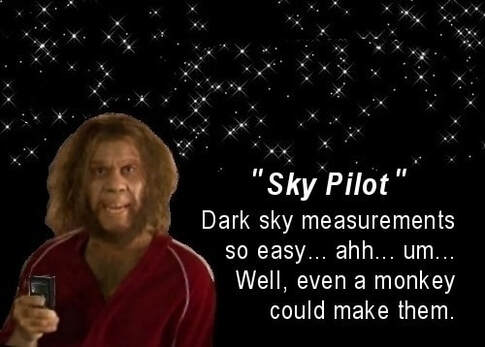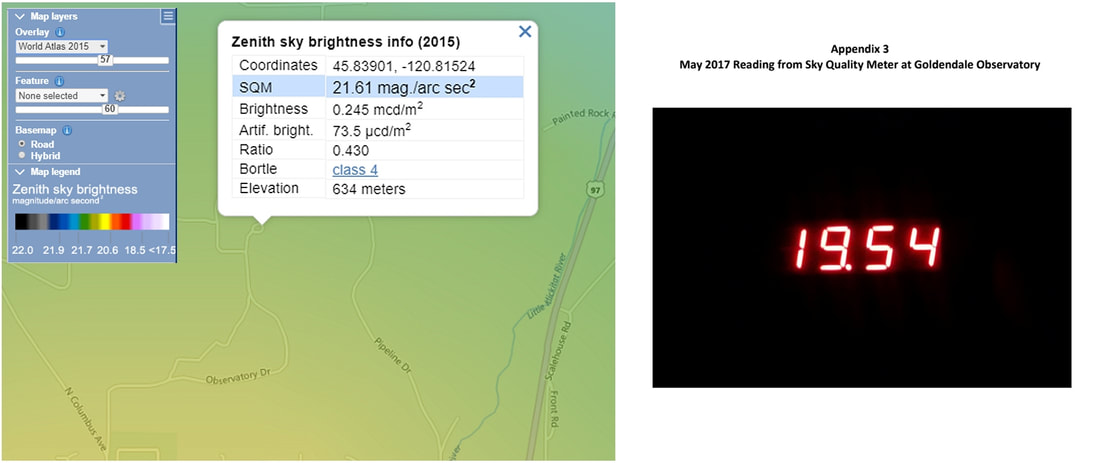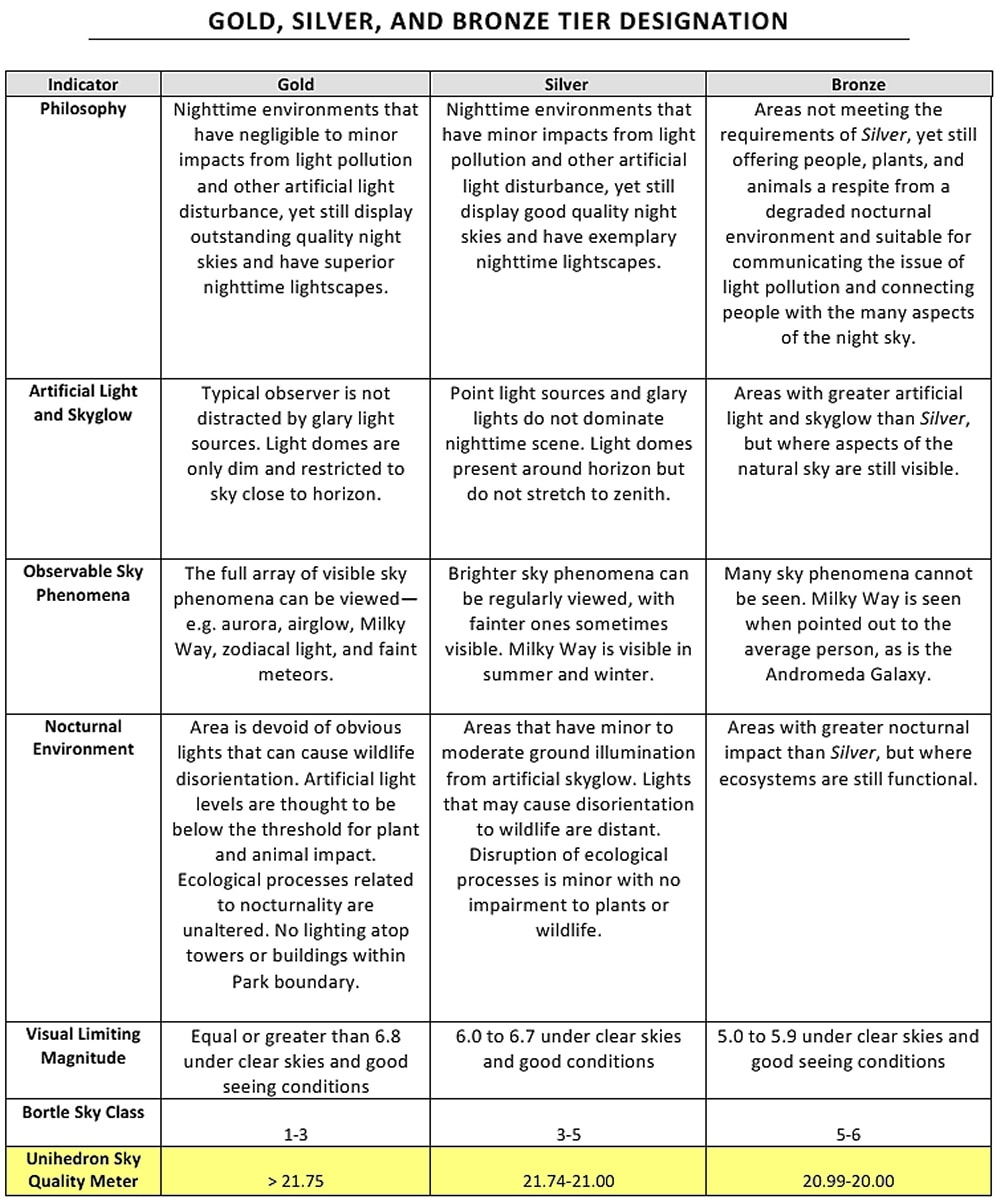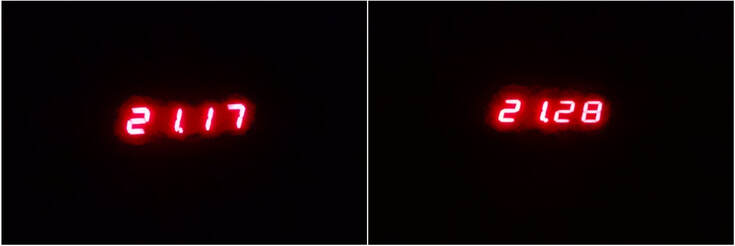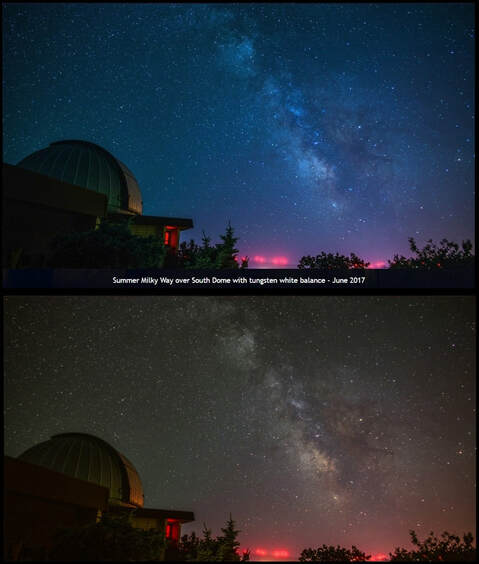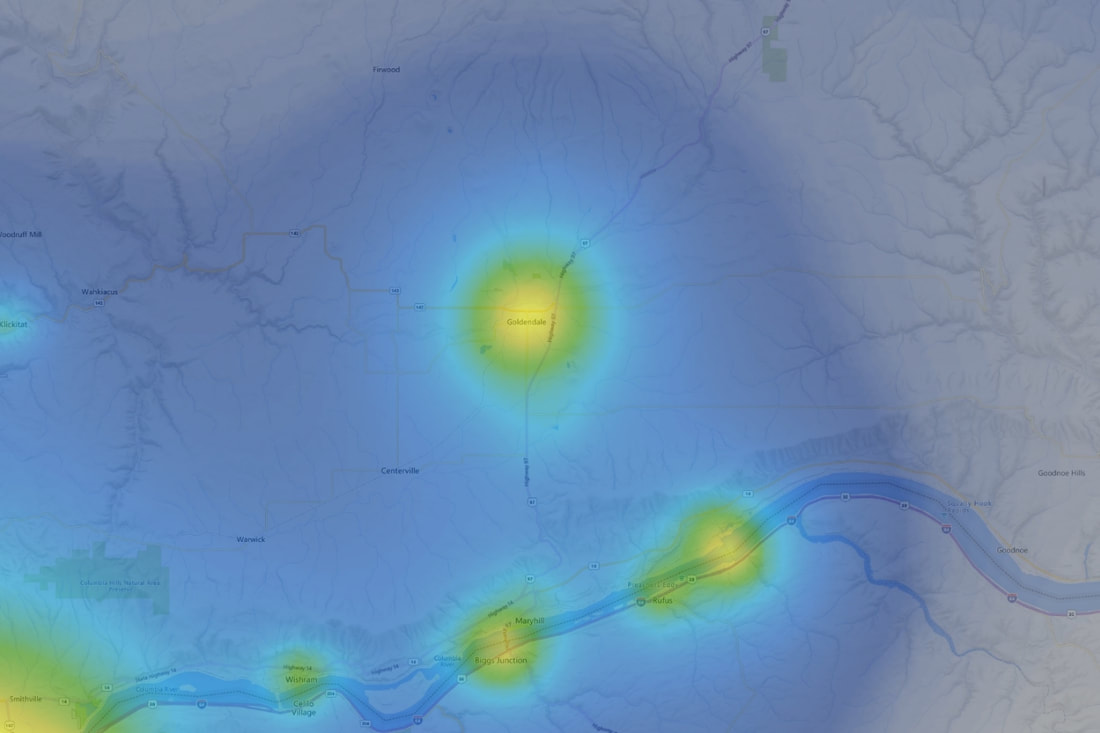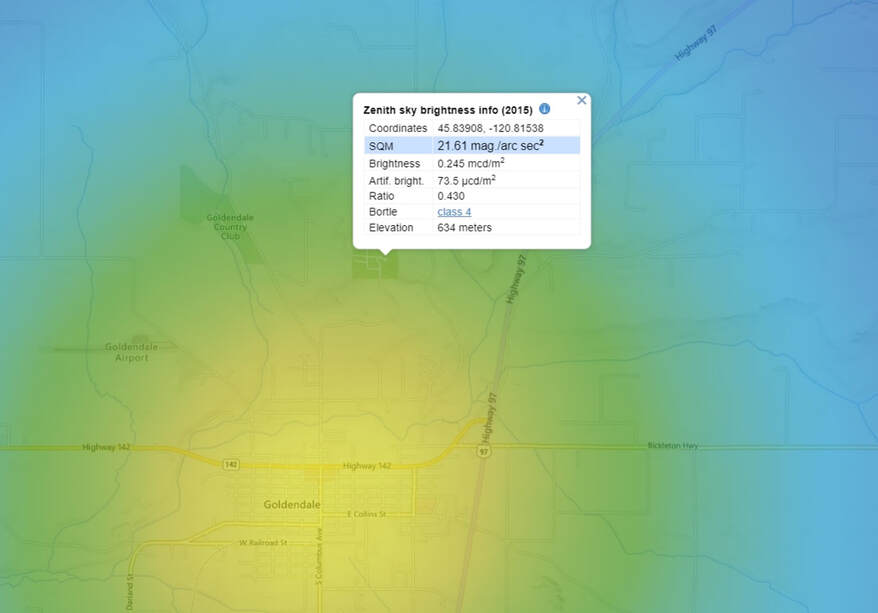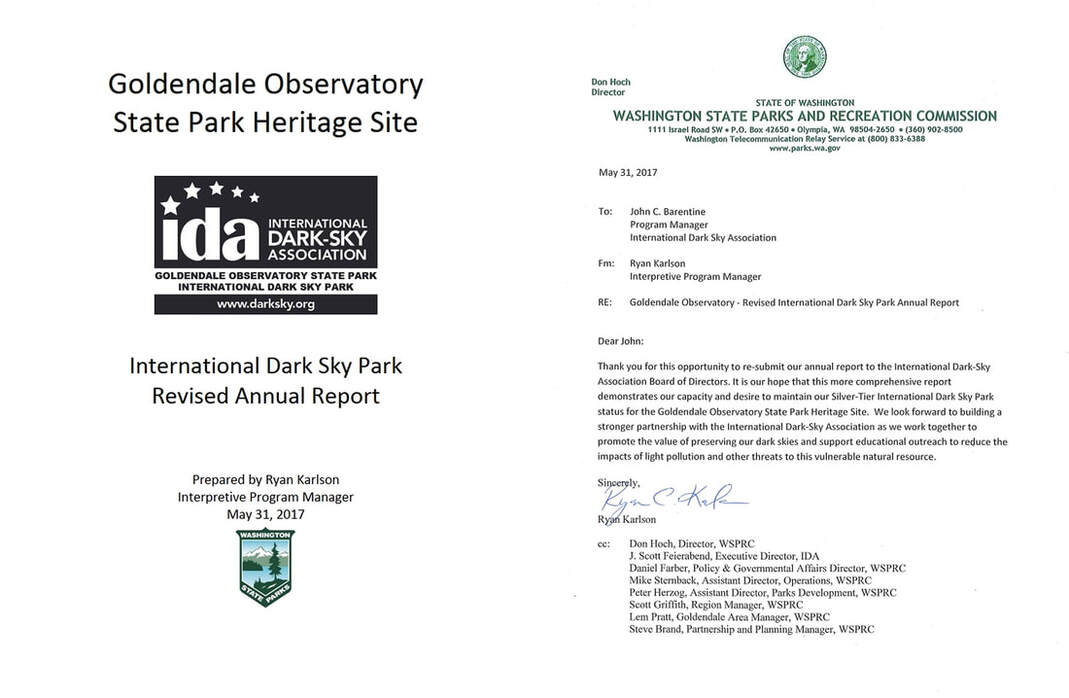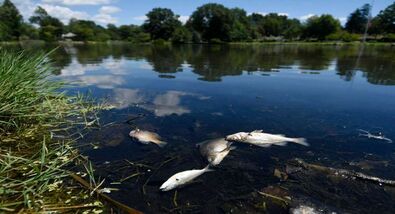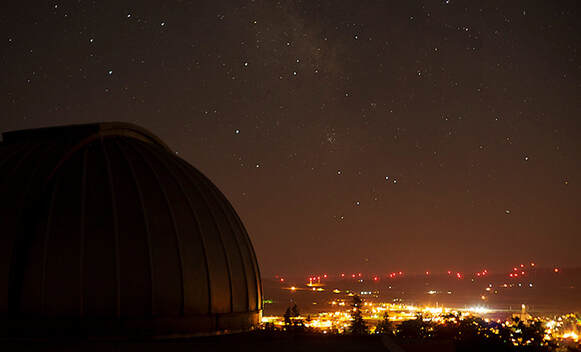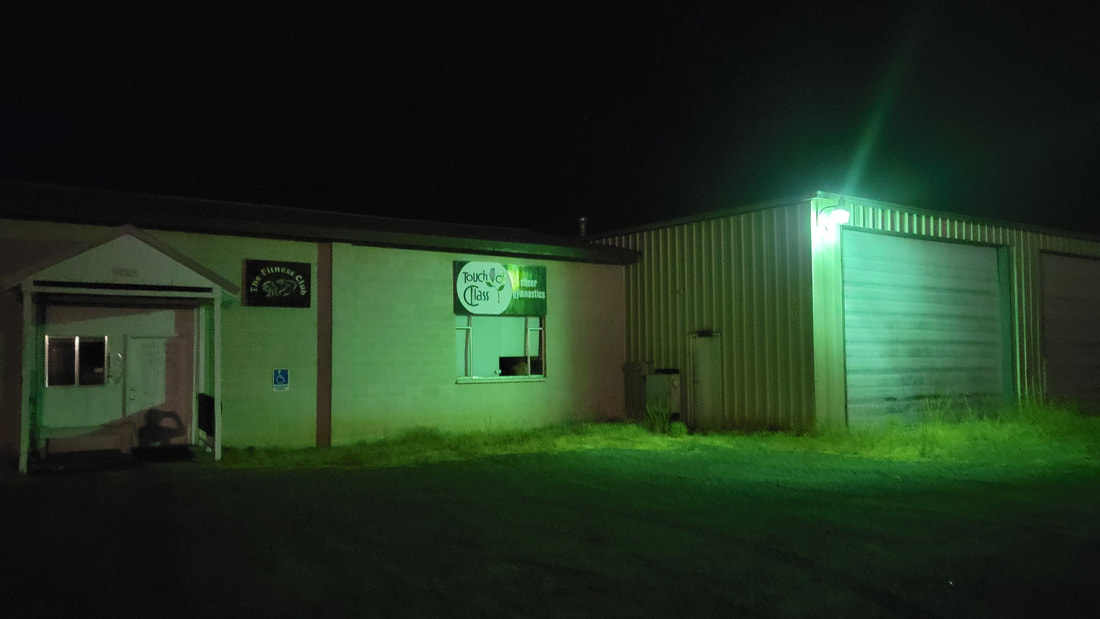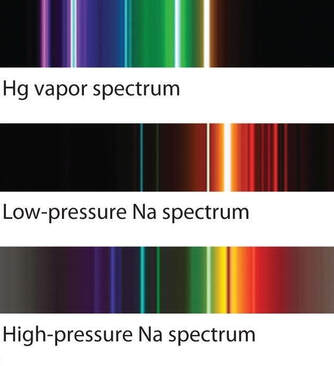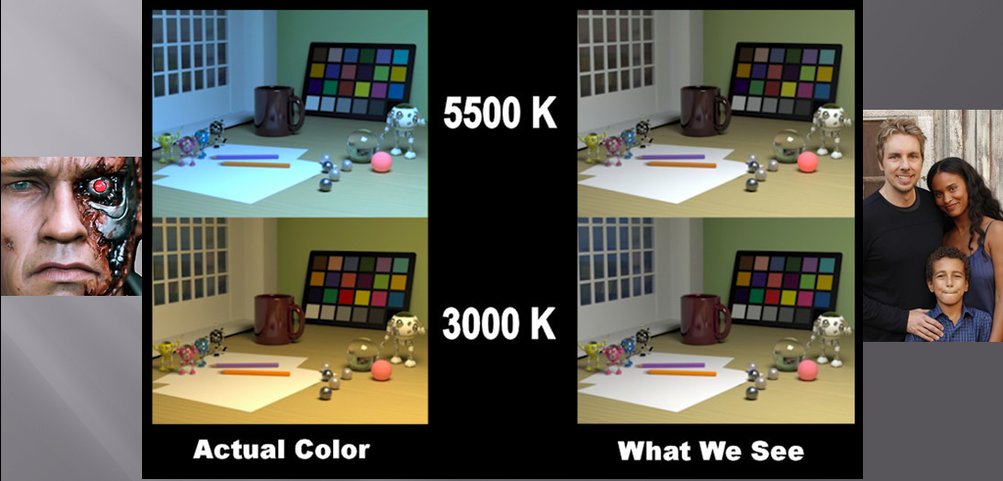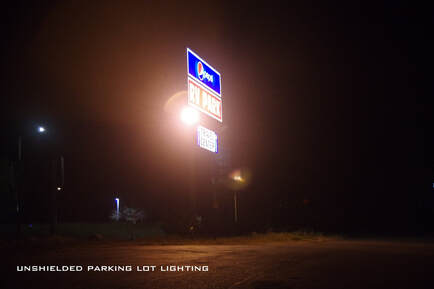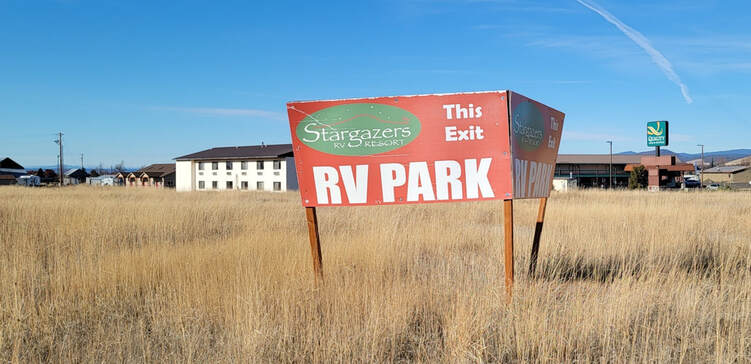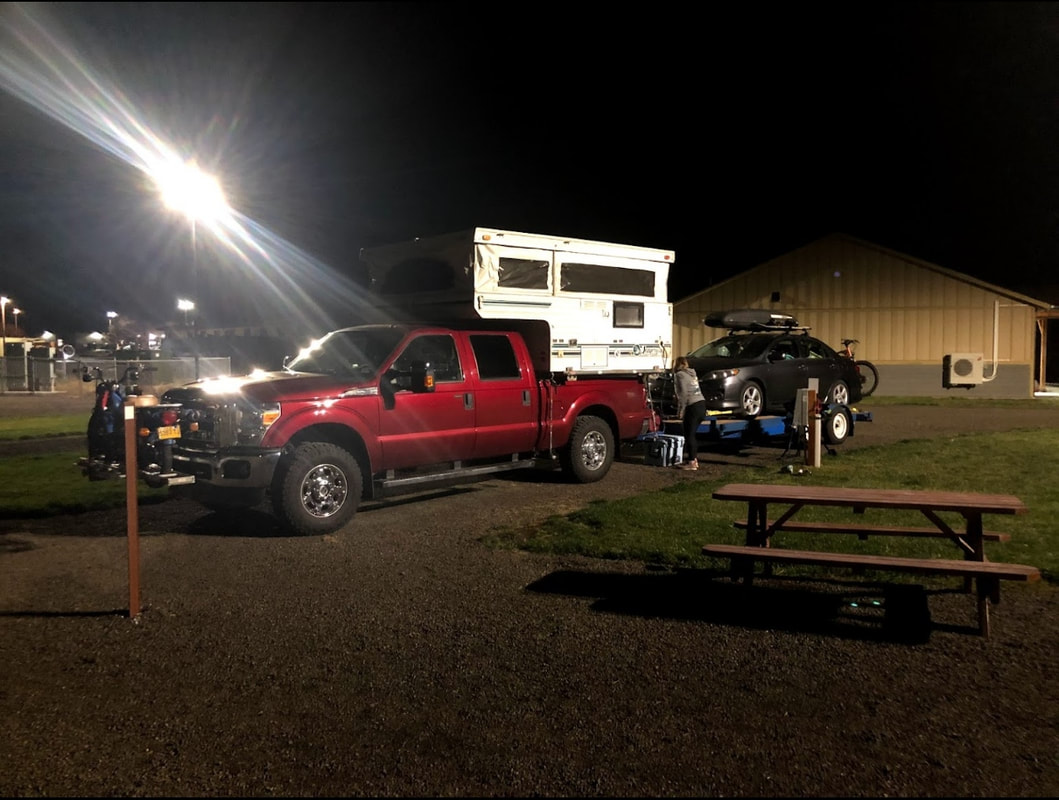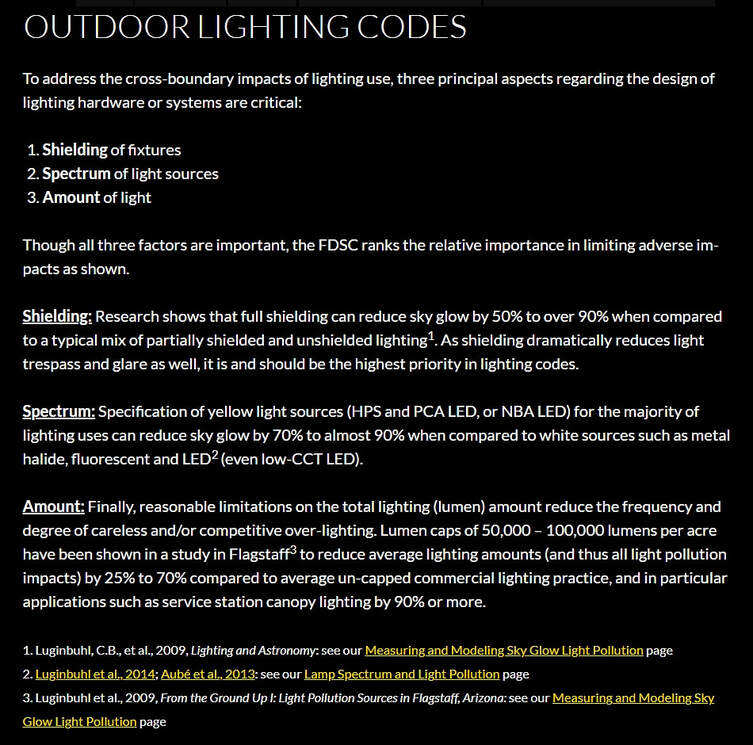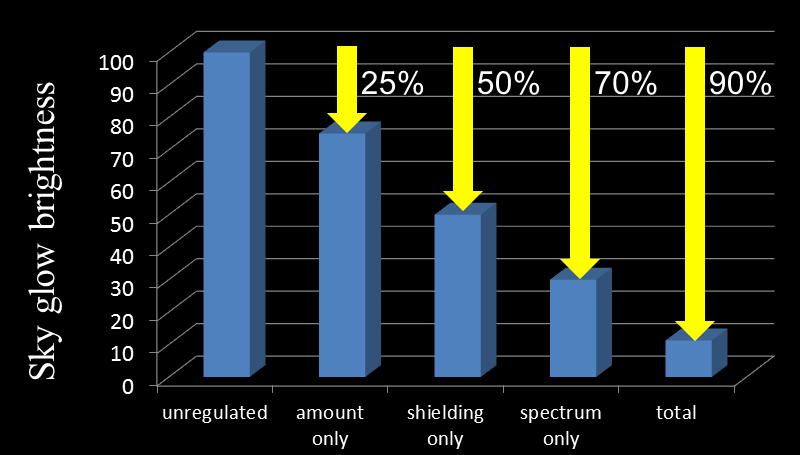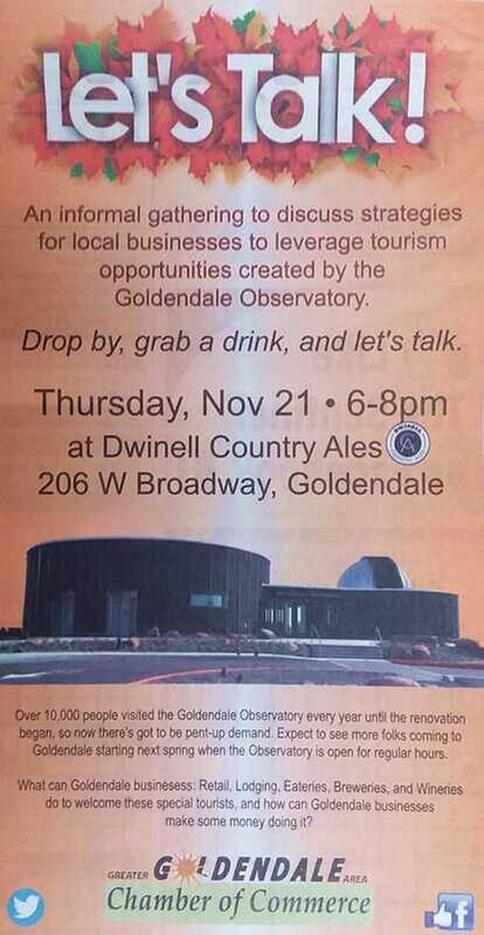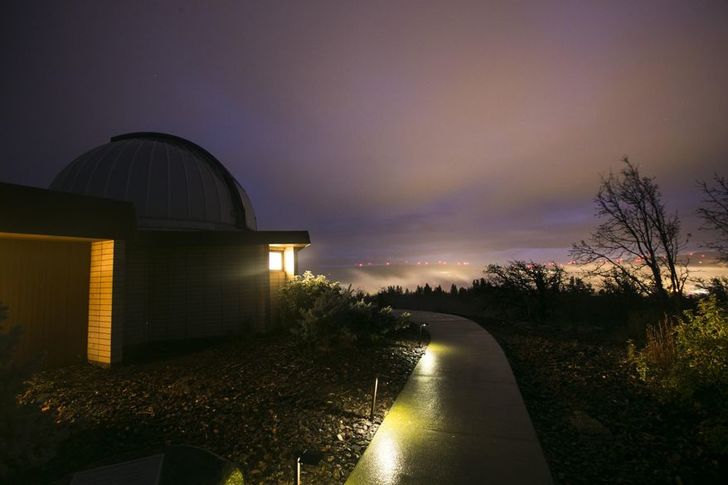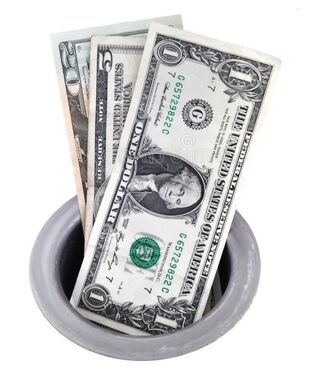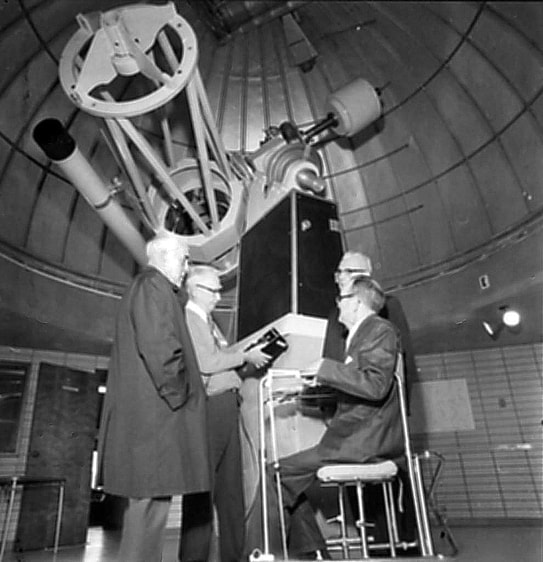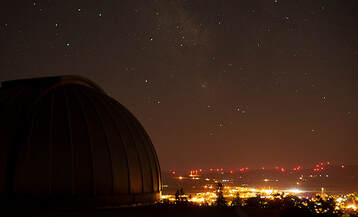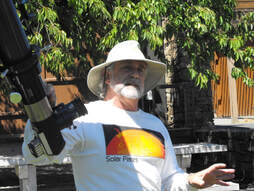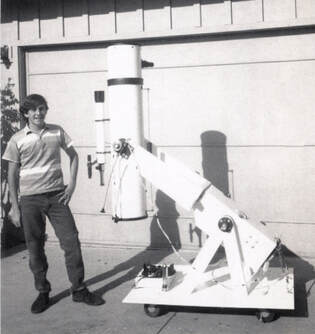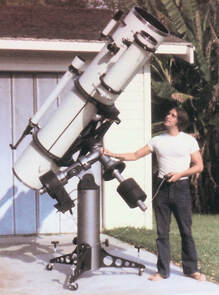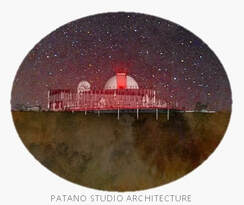Going, Going, GONE!
An Amateur Astronomer's Personal Account of the Abandonment of the Goldendale Observatory International Dark Sky Park.
As detailed here, in 2017 Goldendale Observatory became the first International Dark Sky Park to be decertified - in the world. In 2019 Washington State Parks stated it would attempt to re-establish the Goldendale Observatory State Park as an International Dark-Sky Association (IDA) Dark Sky Park, indicating they "intend to complete their application for Dark Sky Park status and to work with the local community to ensure that is accomplished."
As detailed here, in 2017 Goldendale Observatory became the first International Dark Sky Park to be decertified - in the world. In 2019 Washington State Parks stated it would attempt to re-establish the Goldendale Observatory State Park as an International Dark-Sky Association (IDA) Dark Sky Park, indicating they "intend to complete their application for Dark Sky Park status and to work with the local community to ensure that is accomplished."
In stark contrast to the above reference that a recertification as an International Dark Sky Park would be pursued, Washington State Parks has now stated that they are no longer interested in this status for Goldendale Observatory State Park, and they would go out of their way to avoid such a designation. No broad public stakeholder notification, pre-decision hearing, or any other form of public process appears to have taken place.
Even though advertised as being "famous for its dark skies" - meeting International Dark Sky Park education and conservation advocacy requirements is now considered “not a good fit with WA State Parks operating policy.” This would apparently apply to any State Park in Washington: The International Dark-Sky Association requirements to provide education to the public about conserving the night sky is construed as some sort of inappropriate “activism,” and advocating support for lighting policies that protect the night sky of an International Dark Sky Park is misconstrued as "behaving in a legislative capacity."
So much for the Washington State Parks Mission, Vision, and Values to care for and provide proud support and stewardship of park assets and natural heritage experiences for future generations, or "involving the public in our policy development and decision making."
There are a number of other equally defective statements made specifically regarding the Goldendale Observatory and local night sky conservation efforts, and it’s difficult to understand how one could achieve a Dark Sky Place status of any type and not meet the IDA requirements to provide public education about night sky conservation or advocate for its protection.
Even though advertised as being "famous for its dark skies" - meeting International Dark Sky Park education and conservation advocacy requirements is now considered “not a good fit with WA State Parks operating policy.” This would apparently apply to any State Park in Washington: The International Dark-Sky Association requirements to provide education to the public about conserving the night sky is construed as some sort of inappropriate “activism,” and advocating support for lighting policies that protect the night sky of an International Dark Sky Park is misconstrued as "behaving in a legislative capacity."
So much for the Washington State Parks Mission, Vision, and Values to care for and provide proud support and stewardship of park assets and natural heritage experiences for future generations, or "involving the public in our policy development and decision making."
There are a number of other equally defective statements made specifically regarding the Goldendale Observatory and local night sky conservation efforts, and it’s difficult to understand how one could achieve a Dark Sky Place status of any type and not meet the IDA requirements to provide public education about night sky conservation or advocate for its protection.
Washington State Parks Statement: Goldendale Washington features beautifully dark skies and the city has taken steps to make them even darker with the installation of full-cutoff and dimmable LED street lamps.
Reality: Washington State Parks Goldendale Observatory Administrator Troy Carpenter has promoted this false narrative repeatedly, and unfortunately because of his position it appears many have swallowed this fiction hook, line, and sinker:
Carpenter - who prides himself on his Photoshop abilities - submitted the above photograph taken from the Goldendale Observatory to the City of Goldendale in July 2018, purporting to show a comparison of how the conversion from high pressure sodium (HPS) streetlights to white LED streetlights – which were dimmed 25% for a "test" – allegedly caused the night sky of Goldendale to become “clearly darker.” Carpenter explicitly stated the camera settings for the two photographs were identical. Carpenter then advised the City he desired the LED street lights to be dimmed to this 75% brightness level “during observatory showtimes.” To the untrained eye and a cursory view, the night sky certainly appears darker with the dimmed LED street lights. However, a careful examination will reveal the stars in the constellations of Sagittarius and Scorpius (dark blue arrows) – and the star clouds of the Milky Way (large light blue arrow) and open star cluster (circled) are brighter are more visible in the pre-LED photo on the left.
Looking at the foreground light sources is even more revealing. These sources appear almost uniformly more bright despite being out of focus in the left pre-LED picture. Note the distant wind turbine support towers are easily visible in the left hand image, and almost invisible in the right hand image:
This indicates either one or both of the images could have been manipulated, or the exposures were unequal. The photograph on the right showing the 2018 LED dimmed streetlight sky as being “even darker” was underexposed or otherwise altered compared to the 2014 photo on the left with HPS street lights.
When City of Goldendale staff pointed out the brighter stars in the pre-LED picture, Carpenter stated it was because the stars in the left photo are slightly out of focus compared to those on the right. This statement is just another one of Observatory Administrator Carpenter's deliberate deceptions, as anyone who has ever done astrophotography can attest to. If the stars were identically exposed, the identical amount of light would be spread out over a larger area when out-of-focus, and therefore they would appear dimmer, not brighter, and many more stars would be visible in the in-focus star image compared to the out-of-focus star image:
This indicates either one or both of the images could have been manipulated, or the exposures were unequal. The photograph on the right showing the 2018 LED dimmed streetlight sky as being “even darker” was underexposed or otherwise altered compared to the 2014 photo on the left with HPS street lights.
When City of Goldendale staff pointed out the brighter stars in the pre-LED picture, Carpenter stated it was because the stars in the left photo are slightly out of focus compared to those on the right. This statement is just another one of Observatory Administrator Carpenter's deliberate deceptions, as anyone who has ever done astrophotography can attest to. If the stars were identically exposed, the identical amount of light would be spread out over a larger area when out-of-focus, and therefore they would appear dimmer, not brighter, and many more stars would be visible in the in-focus star image compared to the out-of-focus star image:
The fact that Carpenter's left-side pre-LED streetlight image shows the stars are perhaps slightly out of focus (or elongated due to drift during a longer exposure), but obviously brighter, strongly indicates the exposures are not identical. Indeed, if they were in focus as on the right, they would have been even brighter than they appear. This therefore would be an invalid comparison and appears to be a deliberate act of deception on Carpenter's part. If the night sky was in reality "darker" due to the reduction of light pollution from the LED streetlight conversion and 25% dimming, the identical stars indicated in both photos should be of equal brightness – if not brighter and more visible due to the removal of interfering skyglow – in the photo on the right. Instead, it is the opposite. The terrestrial foreground lighted areas (most of which are not 3000K LED streetlights) would have been the same brightness, not dimmer.
|
|
What Carpenter's images do show is how the southern sky and the Milky Way star clouds are obscured by increased light pollution from Goldendale and Klickitat County, as seen here looking south from 4 miles (6.4 km) north of Goldendale on a night with poor atmospheric transparency commonly seen in summer months. Note the generally white color tone of the light pollution due to the LED street lights installed in 2017, which emit a large amount of green and blue light. These colors of light are scattered by the atmosphere much more than the previous amber HPS street lights. The Goldendale Observatory lies 4 times closer, located only 1 mile (1.6 km) north of downtown Goldendale, and the light pollution would therefore be much brighter.
|
|
The most recent satellite data indicates a decrease in light pollution from Goldendale with the introduction of 3000 K LED street lighting. However, the Visible Infrared Imaging Radiometer Suite (VIIRS) data sees mostly yellow-orange-red and infrared light, and is almost completely “blind" to green and blue light from LED streetlights.
|
Therefore this data showing a decrease in Goldendale light pollution is a mirage. It's due to less amber light from the 3000 K LED street lights installed in 2017 compared to the high pressure sodium lights they replaced. Illumination from LED street lights is instead shifted to the blue-green part of the visible spectrum. Note also that the VIIRS data shows light pollution at the Goldendale Observatory has increased to the pre-LED street light levels in 2022. Therefore due to the LED spectral shift, a minimum of a doubling (and perhaps more) of light pollution has occurred at the Observatory. |
In 2017 the Department of Energy modeled the effects of LED street light color temperature on sky glow:
Under all conditions of atmospheric transparency (ATM 1-5), for a "near observer" at the edge of a city like the Goldendale Observatory, 3000 K LED (SPD7) street lights significantly exceed the sky glow produced by HPS street lights (dashed red line). For nighttime (scotopic) vision sensitivity, lumen per lumen sky glow doubles with 3000 K LED street lighting. The only LED street lighting that decreases sky glow in the study is the SPD5 phosphor-converted amber LED street light.
The Department of Energy also modeled it would take a 50% reduction in 3000 K street light brightness to equal the sky glow of traditional HPS street lights (dashed red line):
The Department of Energy also modeled it would take a 50% reduction in 3000 K street light brightness to equal the sky glow of traditional HPS street lights (dashed red line):
Therefore, a 25% reduction in 3000 K LED street light output would most certainly not result in the deceptive claims of "beautifully dark skies" made "even darker" as claimed by Carpenter.
|
|
A newer study also indicates that light pollution from LED street lighting has become worse: "Open squares represent annual DMSP-OLS composite data, filled squares represent radiance calibrated DMSP-OLS data, filled circles represent VIIRS Day/Night band data. Plotted data points assume constant spectral composition of light emissions. The shaded areas represent the possible range of undetected light assuming a recent phased transition from high pressure sodium lighting to LEDs of color temperature 3000 K (dark grey) or 4000 K (light grey)." Emphasis added. As seen in the night sky photos below, light pollution from Goldendale is now worse after 3000 K LED street lights were installed than with the former high pressure sodium streetlights. |
|
Below: Goldendale before and after 3000K LED streetlights. Obviously not darker after LED conversion. The "light domes" of Yakima and Goldendale are well seen. Left - July 2017 an aurora display creates the red-purple glow along the horizon. Right - July 2020 air glow creates the faint green glow along the horizon:
Below: Goldendale before and after 3000K LED streetlights. Obviously not darker after LED conversion. The "light domes" of Yakima and Goldendale are well seen. Left - July 2017 an aurora display creates the red-purple glow along the horizon. Right - July 2020 air glow creates the faint green glow along the horizon:
These undoctored photos were taken from near the same location on Dalles Mountain Road looking north north-east. They do not indicate a decrease in the amount of light pollution from Goldendale with the conversion to 3000 K LED streetlights. If anything, the relative brightness of the "light dome" from Goldendale (enacted but unenforced lighting codes) now exceeds that coming over the Simcoe Mountains from Yakima, Washington 75 miles (120 km) to the north. Yakima replaced almost all HPS streetlights with 4500 K LED street lights, and has no lighting codes at all (except for signs).
Also note the obvious change in the color temperature of the Goldendale light pollution, and the spread of unshielded lighting throughout Klickitat County surrounding Goldendale. These images are in line with 3000 K LED street lighting worsening skyglow by a factor of two compared to HPS - and without at least 50% dimming - generally is more damaging to the night sky than previously installed HPS street lighting.
Despite being well-intentioned and clearly better than the more commonly employed 4000K to 5000K color temperature LED streetlights, the 3000K LED streetlights the City of Goldendale installed are unfortunately far worse for light pollution than the full cut-off (fully shielded) High Pressure Sodium street lights they replaced. They are only "dark sky friendly" when compared to far worse 4000K + LED streetlights, not the former HPS streetlights.
As previously noted, in 2017 the Department of Energy modeled it would take a 50% reduction in 3000 K street light brightness to equal the sky glow of HPS street lights. A real-world 2018 study of the effects of converting HPS to 3000K LED street lights in Tucson, Arizona – a city which actually attempts to enforce its lighting codes – indicated it took a 63% reduction in 3000K LED streetlight lumens to a achieve a 7% reduction in sky-glow. This real but modest decrease in light pollution would be imperceptible to most people.
It therefore is well established that, lumen-for-lumen, 3000 K LED street lights produce twice the night-sky-damaging sky glow than an equivalent HPS street light, due to the large amount of green and blue wavelengths that are efficiently produced and thereafter more widely scattered by the atmosphere.
Goldendale's 3000K LED streetlights would need to be dimmed at least 50% just to achieve the previous level of sky glow that existed with the former fully-shielded HPS streetlights. The findings of the 2018 Tucson study cited above overwhelmingly confirm this, and make Carpenter's "25% dimming" comparison photos even more suspect.
Also note the obvious change in the color temperature of the Goldendale light pollution, and the spread of unshielded lighting throughout Klickitat County surrounding Goldendale. These images are in line with 3000 K LED street lighting worsening skyglow by a factor of two compared to HPS - and without at least 50% dimming - generally is more damaging to the night sky than previously installed HPS street lighting.
Despite being well-intentioned and clearly better than the more commonly employed 4000K to 5000K color temperature LED streetlights, the 3000K LED streetlights the City of Goldendale installed are unfortunately far worse for light pollution than the full cut-off (fully shielded) High Pressure Sodium street lights they replaced. They are only "dark sky friendly" when compared to far worse 4000K + LED streetlights, not the former HPS streetlights.
As previously noted, in 2017 the Department of Energy modeled it would take a 50% reduction in 3000 K street light brightness to equal the sky glow of HPS street lights. A real-world 2018 study of the effects of converting HPS to 3000K LED street lights in Tucson, Arizona – a city which actually attempts to enforce its lighting codes – indicated it took a 63% reduction in 3000K LED streetlight lumens to a achieve a 7% reduction in sky-glow. This real but modest decrease in light pollution would be imperceptible to most people.
It therefore is well established that, lumen-for-lumen, 3000 K LED street lights produce twice the night-sky-damaging sky glow than an equivalent HPS street light, due to the large amount of green and blue wavelengths that are efficiently produced and thereafter more widely scattered by the atmosphere.
Goldendale's 3000K LED streetlights would need to be dimmed at least 50% just to achieve the previous level of sky glow that existed with the former fully-shielded HPS streetlights. The findings of the 2018 Tucson study cited above overwhelmingly confirm this, and make Carpenter's "25% dimming" comparison photos even more suspect.
As shown by the streetlight spectrums above right, the 3000K LED street lights provide a diffuse light distribution of light rather than narrow line emissions of HPS, and the predominance green-blue light is scattered twice as much compared to HPS streetlights. Moreover, you can't be considered a Dark Sky Place only when the streetlights are dimmed during the limited hours which the Observatory is open - Dark Sky Places are an all-night seven days a week experience. And why would dimming be acceptable at certain hours on certain days, and not any others?
Replacing the High Pressure Sodium street lights in Albuquerque NM doubled levels of light pollution, and would require a similar amount of dimming just to maintain the previous HPS levels.
Further evidence countering Carpenter's "even darker" claims: As seen below Chelan County Washington made the conversion to 3000K street lighting in 2019 with an obvious increase in light pollution sky glow:
CONCLUSION: Washington State Parks Goldendale Observatory Administrator Troy Carpenter's statements regarding the night sky of the Goldendale Observatory having become "beautifully dark" following the installation of 3000 K LED street lights - even with 25% dimming - are completely unsupported, and false per valid and reliable modeling and real-world studies at other locations.
This is just one example of many deliberately deceptive statements and behaviors from Carpenter.
FAILURE TO PROTECT THE NIGHT SKY
These facts, combined with the widespread lack of public information about or general enforcement of the City and County lighting codes for commercial, non-commercial, municipal, and residential properties (where - as with most locations - a large amount of the light pollution from Goldendale and Klickitat County originates) means effectively nothing has been done to make the night sky “even darker.”
In addition to significant dimming of LED streetlights, researchers in Tucson have noted their "concern for limiting light pollution is connected to the site protection of astronomical observatories that contribute significantly to its local economy," and therefore "the biggest priority before everything else is making sure lights are shielded and that lighting ordinances are enforced" (emphasis added).
In addition to significant dimming of LED streetlights, researchers in Tucson have noted their "concern for limiting light pollution is connected to the site protection of astronomical observatories that contribute significantly to its local economy," and therefore "the biggest priority before everything else is making sure lights are shielded and that lighting ordinances are enforced" (emphasis added).
|
While the Goldendale and Klickitat County lighting codes have required shielding of outdoor lighting since 1979 to protect the Goldendale Observatory from light pollution, neither the City nor the County publicly disseminate information about or enforce the outdoor lighting codes for existing structures.
Furthermore, under pressure from local business and political interests, the City removed color temperature requirements identical to the new 3000K LED street lights in the draft 2017 revised Goldendale outdoor lighting code. In spite of being a well established specification for night sky conservation, Dark Sky Places, and astronomical observatories, Washington State Parks voiced no concerns or objections to removal of this and other widely accepted best practices in order to protect the Washington State taxpayer's investment in a multi-million dollar science facility dedicated to night sky observation and appreciation. |
Despite the example of the the National Park Service and many other State Park systems, and Goldendale Observatory State Park being located completely within the city limits of Goldendale and therefore totally dependent on the City of Goldendale and Klickitat County for regulatory policies for protecting the Observatory from light pollution, former Washington State Parks Director Don Hock stated to the IDA “we do not feel it is within our mission to play a lead role in efforts to influence the local regulatory environment surrounding this [night sky conservation] issue.” This contradicts RCW 42.52.8022 which allows Washington State personnel to attend and provide input for "informational and educational meetings regarding legislative issues." Moreover, Washington State Parks would only be asking for already existing lighting codes to be enforced like any other existing laws.
Washington State Parks apparently does not now consider the "beautifully dark" night sky to be a park asset for the Observatory, or part of the Observatory's or Washington's States natural heritage. Therefore, voicing "proud support" for protecting the taxpayer's multi-million dollar investment in the Goldendale Observatory - and the "beautifully dark" night sky it is dependent on for future generations to enjoy and appreciate - is not considered a "good policy fit" by Washington State Parks...
Washington State Parks apparently does not now consider the "beautifully dark" night sky to be a park asset for the Observatory, or part of the Observatory's or Washington's States natural heritage. Therefore, voicing "proud support" for protecting the taxpayer's multi-million dollar investment in the Goldendale Observatory - and the "beautifully dark" night sky it is dependent on for future generations to enjoy and appreciate - is not considered a "good policy fit" by Washington State Parks...
Washington State Parks Statement: However, the silver-tier status was perceived as potentially too generous and the requirements attached to the status were not a good fit with WA State Parks operating policy; the dark sky status was ultimately rescinded in 2017.
Reality: How could the Silver Tier Dark Sky Park designation have been "too generous" for keeping the designation, when Carpenter now claims the night sky is "beautifully dark" and getting "even darker"?
Washington State Parks is attributing the loss of the International Dark Sky Park certification in 2017 to night sky quality and internal policy issues, rather than it having been revoked by the IDA due to Washington State Parks deliberate failure to provide previously agreed to night sky conservation education programs and conservation advocacy. It is in fact disingenuous spin control and the weaving of "alternative facts," otherwise known as lies.
What "operating policy" is being referred to? Abandoning the public interest and Washington State taxpayer, Washington State Parks “operating policy” seems to be “when in Rome, do as the Romans,” abandoning its Mission and Core Values to “care for” and provide “proud support” and “stewardship of park assets” and “natural heritage experiences for future generations.”
These have apparently been exchanged for supporting economic exploitation, political expediency, and bureaucratic self-preservation. Carpenter himself stated "economic and commercial gain is our priority - overwhelmingly so. Absolutely." This apparently now requires total capitulation and support of local reactionary political forces opposing education about the importance of night sky conservation or voicing public support for lighting codes that promise protection of the Observatory’s night sky from light pollution.
Washington State Parks is totally enmeshed in a "partnership network" with the anti-regulation Goldendale Chamber of Commerce, which sees the Observatory merely as a tourist attraction. The Chamber refers to the Observatory as an “amusement park” and “marketing tool” to be exploited for "economic and commercial gain," which purpose is to “fill up hotel and restaurant parking spaces.” The City of Goldendale and its businesses apparently would be just as happy with a casino, and couldn’t care less about the Observatory's purposes, or the beauty of a dark night sky. Actions speak louder than words, and no value whatsoever is placed on the aesthetic, environmental, and natural heritage values of the Observatory's night sky, or the tremendous importance of a dark night sky for the Observatory's famous telescope.
Reality: How could the Silver Tier Dark Sky Park designation have been "too generous" for keeping the designation, when Carpenter now claims the night sky is "beautifully dark" and getting "even darker"?
Washington State Parks is attributing the loss of the International Dark Sky Park certification in 2017 to night sky quality and internal policy issues, rather than it having been revoked by the IDA due to Washington State Parks deliberate failure to provide previously agreed to night sky conservation education programs and conservation advocacy. It is in fact disingenuous spin control and the weaving of "alternative facts," otherwise known as lies.
What "operating policy" is being referred to? Abandoning the public interest and Washington State taxpayer, Washington State Parks “operating policy” seems to be “when in Rome, do as the Romans,” abandoning its Mission and Core Values to “care for” and provide “proud support” and “stewardship of park assets” and “natural heritage experiences for future generations.”
These have apparently been exchanged for supporting economic exploitation, political expediency, and bureaucratic self-preservation. Carpenter himself stated "economic and commercial gain is our priority - overwhelmingly so. Absolutely." This apparently now requires total capitulation and support of local reactionary political forces opposing education about the importance of night sky conservation or voicing public support for lighting codes that promise protection of the Observatory’s night sky from light pollution.
Washington State Parks is totally enmeshed in a "partnership network" with the anti-regulation Goldendale Chamber of Commerce, which sees the Observatory merely as a tourist attraction. The Chamber refers to the Observatory as an “amusement park” and “marketing tool” to be exploited for "economic and commercial gain," which purpose is to “fill up hotel and restaurant parking spaces.” The City of Goldendale and its businesses apparently would be just as happy with a casino, and couldn’t care less about the Observatory's purposes, or the beauty of a dark night sky. Actions speak louder than words, and no value whatsoever is placed on the aesthetic, environmental, and natural heritage values of the Observatory's night sky, or the tremendous importance of a dark night sky for the Observatory's famous telescope.
It completely nonsensical to state on the one hand that the Goldendale Observatory has "beautifully dark skies" which have become "even darker" - yet state the original 2010 Silver Tier International Dark Sky Park classification was "potentially too generous" and therefore "rescinded." This is how one hides sabotaging being an International Dark Sky Park with erroneous poor night sky quality measurements - detailed below - while simultaneously engaging in hyperbole about the night sky being "beautifully dark" and becoming "even darker" in order to help attract tourism to Goldendale and sell Washington State Park Discover Passes.
If being an International Dark Sky Park wasn't a "good fit" with Washington State Parks "operating policy" when the International Dark Sky Parks status was initially suspended in 2016, why did State Parks bother to submit a revised and much more detailed annual report five months later to the IDA that promised to correct the previous deficiencies and provide night sky conservation education and advocacy in hopes of regaining a Dark Sky Park Status?
Apparently a "good fit" in 2016 ("preserving the dark sky at the Goldendale Observatory is part of our mission"), what "operating policy" changed between April 2019 when Washington State Parks announced they would pursue re-designation, versus now? What exact Washington State Parks Operating Policy has become not a “good fit”? How does this Policy - which apparently precludes providing education ("activism"), or policy advocacy for conserving the night sky of the Observatory ("acting in a legislative capacity") - fit with the Mission and Values espoused by Washington State Parks which allegedly includes "caring for," providing “proud support” and “stewardship of park assets,” as well as providing “natural heritage experiences for future generations”? What "public involvement" was used in making this significant operating policy decisions?
Apparently a dark night sky is no longer considered an "asset" for an expensive astronomical telescope and "heritage site" observatory. It seems a night sky substantially free from light pollution is not considered one of Washington State's "natural heritage experiences," and protecting this natural heritage is no longer considered a worthy mission.
Washington State Parks has shown a complete lack of leadership by their unwillingness to include the provision of rather minimal night sky conservation education programs at the Goldendale Observatory, and consequently there are none anywhere in Goldendale or Klickitat County. They also have clearly demonstrated a lack of publicly voiced support for night sky conservation policies for the protection of the Goldendale Observatory and its historic telescope's night sky environment.
While public interest in the natural heritage of the dark night sky grows larger year after year, it appears that until new vision and direction is established at Washington State Parks, the Washington taxpayer’s recent nearly 6 million dollar investment in upgrading their historic public observatory, and indeed the conservation of our dark sky natural heritage statewide, will be compromised for Washington citizens and the public coming to visit from around the world.
Many take the beauty of a star-filled sky for granted, a result perhaps of modern society’s larger disconnect from nature. Designating a dark night sky as a natural treasure – as worthy of protection as a pristine mountain lake or majestic canyon – may therefore seem a bit unusual. A Dark Sky Place typically encompasses a park or community which protects the nighttime environment and offers visitors the opportunity to experience first-hand the beauty and inspiration which can be found in the night sky. They are intended to reconnect people with an aspect of nature that for most of humanity is becoming as remote and endangered as rain forests in the Amazon.
|
|
A star-filled night sky has become a rare experience for most people. For a Dark Sky Place designation, the International Dark-Sky Association (IDA) requires “active participation in ongoing efforts to garner robust community support for dark sky protection. Participants serve as a beacon in their community for stewardship and passionate advocacy for the night sky.” This brings ecotourism benefits to surrounding communities, and preserves star-filled night skies for future generations.
|
|
In 2010, thanks to former Goldendale Observatory Interpretive Specialist Steven Stout, Goldendale Observatory State Park in Washington State was awarded the prestigious distinction of being certified as one of the first-in-the-world Dark Sky Parks by the International Dark-Sky Association. Unfortunately, thanks to opposition from current State Park personnel to dark sky education and advocacy for protection, along with the longstanding historical neglect by the City of Goldendale and Klickitat County in protecting its dark sky natural resource - the Goldendale Observatory State Park achieved a singular distinction:
|
|
Currently there are 27 State Parks designated as International Dark Sky Parks in the US, with more on the way.
The Goldendale Observatory State Park is no longer one of them.
|
|
The Details
The Details
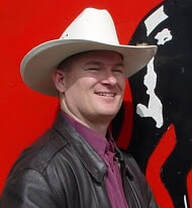
With the arrival of Area Manager and Park Ranger Lemuel Pratt in 2013, Washington State Parks failed to provide the leadership needed to advocate for and promote the protection of the Observatory’s night sky natural heritage and its privileged status as an International Dark Sky Park within the local community. Pratt appeared to have little interest in science, let alone astronomy. Goldendale Observatory Administrator Troy Carpenter early on revealed that Pratt voiced his personal beliefs that the universe is only 6000 years old, denied the validity of climate change science, and stated that the International Dark Sky Park designation was part of an “environmentalist agenda” he'd just as soon see "go away." Pratt’s aversion to night sky stewardship and conservation was demonstrated when he failed to ensure that any sign was put up indicating to the public the Observatory had achieved full status as an International Dark Sky Park - a requirement for a Dark Sky Park designation. Instead, Pratt had a bright blue-white LED flagpole light installed pointing up toward the sky in explicit violation of local lighting codes and in defiance of dark sky protection principles included in the Observatory’s approved Washington State Parks 2010 Lighting Management Plan. Pratt left State Parks in 2019 to become a Code Enforcement Officer for Klickitat County, where he would be responsible for seeing Klickitat County's lighting code is complied with.
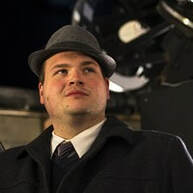
The IDA took notice of Washington State Park staff’s indifference toward protection of the International Dark Sky Park after Pratt promoted Troy Carpenter to be the new Interpretive Specialist of the Observatory. New York native Carpenter apparently left a very highly paid training position at Gamesa Technology Corporation (an industrial wind power company) in Philadelphia, and traveled 3000 miles - first allegedly to do "business" and wind power training on the west coast - as if there were none any closer, and/or supposedly being recruited (per Carpenter "poached" - a dubious piece of spin for someone possibly looking for employment) at a small community college in The Dalles, Oregon, for their wind power training program in December 2012. At the same time Carpenter stumbled into visiting the Goldendale Observatory, expressed interest in employment, and was offered a potential job where he could submit an application for an entry-level and relatively low-paying position as a Washington State Park Aide. When a position became available months later in May 2013, he was hired as a seasonal Park Aide at the Observatory.
Apparently no one at Washington State Parks bothered to explore the reasons for such a curious career move. Pratt promoted Carpenter to Interpretive Specialist for the Observatory in 2014 after Steve Stout resigned within months of Carpenters arrival. Pratt may have pushed out night sky conservation advocate Stout by significantly changing his hours. Per Carpenter the perfunctory hiring process for the permanent Interpretive Specialist position consisted solely of an online Washington State Parks posting for about two-four weeks, and netted two or three candidates for Pratt to interview along with Carpenter.
With regard to the required IDA annual reports, Carpenter submitted false, terse, and incomplete annual reports to the IDA two years in a row, and then failed to submit one at all. Carpenter claimed he had not received the multiple email reminder notices routinely sent to all Dark Sky Parks, and to which he had responded in the two previous years.
This led the IDA to suspend the Observatory’s Dark Sky Park status on November 16, 2016 pending the receipt of a suitable annual report for further review.
With Carpenter’s subsequent November 21 late report (SCRIBD document at the bottom of this page), he stated in his email submission to the IDA his lack of interest in providing Dark Sky Park related education report activities that are the direct responsibility of the International Dark Sky Park itself:
"Also, is it possible to delegate the reporting requirement to outside entities who are more directly engaged with light pollution mitigation efforts at the park? Our scope is somewhat limited in this regard, as we are a state park and cannot act to influence municipal policy directly." Emphasis added.
Troy Carpenter, November 21, 2016 email to John Barentine, IDA Dark Sky Places Program Manager
More deceptive sophistry from Carpenter; arguing that merely reporting on night sky conservation activities is "acting to influence municipal policy directly." Note that Carpenter had previously lied to the IDA in his previous two Annual Reports to the IDA that he had participated in Friends of Goldendale Observatory night sky conservation activities and programs - he didn't - and claimed Pratt directed him not to.
This fundamental lack of honesty, integrity, and interest, and now unwillingness to engage with any night sky conservation education, advocacy, and even reporting was previewed years earlier when Carpenter gave away the Sky Quality Meter provided by the IDA in 2010 which was needed to make the simple and routine annual night sky quality measurements required by the IDA.
The IDA deemed Carpenter's late report inadequate and kept the suspension in place. Washington State Parks Interpretive Program Manager Ryan Karlson then had to take on the responsibility to rescue the Dark Sky Park status by submitting a more detailed and completely revised annual report.
Apparently no one at Washington State Parks bothered to explore the reasons for such a curious career move. Pratt promoted Carpenter to Interpretive Specialist for the Observatory in 2014 after Steve Stout resigned within months of Carpenters arrival. Pratt may have pushed out night sky conservation advocate Stout by significantly changing his hours. Per Carpenter the perfunctory hiring process for the permanent Interpretive Specialist position consisted solely of an online Washington State Parks posting for about two-four weeks, and netted two or three candidates for Pratt to interview along with Carpenter.
With regard to the required IDA annual reports, Carpenter submitted false, terse, and incomplete annual reports to the IDA two years in a row, and then failed to submit one at all. Carpenter claimed he had not received the multiple email reminder notices routinely sent to all Dark Sky Parks, and to which he had responded in the two previous years.
This led the IDA to suspend the Observatory’s Dark Sky Park status on November 16, 2016 pending the receipt of a suitable annual report for further review.
With Carpenter’s subsequent November 21 late report (SCRIBD document at the bottom of this page), he stated in his email submission to the IDA his lack of interest in providing Dark Sky Park related education report activities that are the direct responsibility of the International Dark Sky Park itself:
"Also, is it possible to delegate the reporting requirement to outside entities who are more directly engaged with light pollution mitigation efforts at the park? Our scope is somewhat limited in this regard, as we are a state park and cannot act to influence municipal policy directly." Emphasis added.
Troy Carpenter, November 21, 2016 email to John Barentine, IDA Dark Sky Places Program Manager
More deceptive sophistry from Carpenter; arguing that merely reporting on night sky conservation activities is "acting to influence municipal policy directly." Note that Carpenter had previously lied to the IDA in his previous two Annual Reports to the IDA that he had participated in Friends of Goldendale Observatory night sky conservation activities and programs - he didn't - and claimed Pratt directed him not to.
This fundamental lack of honesty, integrity, and interest, and now unwillingness to engage with any night sky conservation education, advocacy, and even reporting was previewed years earlier when Carpenter gave away the Sky Quality Meter provided by the IDA in 2010 which was needed to make the simple and routine annual night sky quality measurements required by the IDA.
The IDA deemed Carpenter's late report inadequate and kept the suspension in place. Washington State Parks Interpretive Program Manager Ryan Karlson then had to take on the responsibility to rescue the Dark Sky Park status by submitting a more detailed and completely revised annual report.
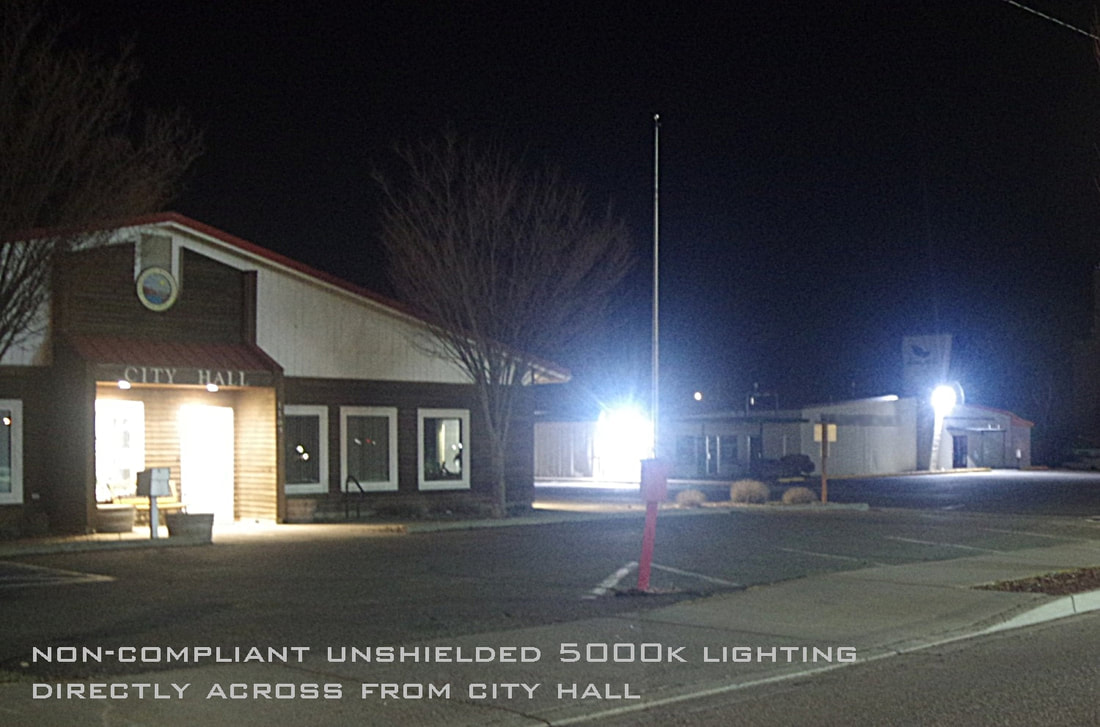
Looking the other way. Despite being an obvious vioaltion of ordinances requiring shielding of outdoor lighting to protect the Observatory's night sky, this recently installed unshielded lighting adjacent to City Hall is on all night and typical of what gets installed in the City of Goldendale and Klickitat County.
|
Other than soliciting grants for painting fanciful murals on walls, and painting stars on sidewalks, the City of Goldendale and the Greater Goldendale Area Chamber of Commerce have historically made almost no effort to ensure the Goldendale Observatory’s “international importance as a leading West Coast observatory” (Mayor Mike Canon, 2016) is maintained by ensuring stars and nebulas remain visible in the sky for future generations to experience.
Klickitat County, Goldendale, and the Goldendale Chamber of Commerce have done little to nothing to educate the public about protecting the Observatory's night sky or the long-established lighting regulations intended to protect the Observatory, and how best to comply with them:
|
Long-time visitors to the Goldendale Observatory have noticed that light pollution has increased in recent years. In 2014 Carpenter himself admitted “there is already too much light pollution from town to get a good view of deep space objects in the southern sky.” However, just after the IDA’s initial Dark Sky Park suspension in late 2016, Carpenter told a meeting of Portland, Oregon’s Rose City Astronomers that light pollution was a “low priority” due to being “a politically charged issue and it makes us very unpopular every time we bring it up.” Emphasis added.
Unpopular? Really? With who? The vast majority of people who visit the Observatory and travel for tens or hundreds of miles or more to get away from light polluted urban and suburban night skies to an observatory which claims to be "famous" for its dark night skies harbor such feelings and opinions? How would Carpenter know?
There is no public survey data of any kind to support this bald-faced assertion. However, it does reveal Carpenter's obsession with being "popular" with a very small but powerful political constituency. Even if all 3400 people living in Goldendale made such statements, it would represent less than 10% of the claimed annual visitors to Goldendale Observatory. But nowhere near that many local people visit the Observatory, and the overwhelming number of visitors coming from around the world (and probably even Goldendale) likely don’t harbor such sentiments.
So who was Carpenter referring to? Certainly it was not the citizens and taxpayers of Washington State who pay his salary and own the Goldendale Observatory State Park.
What we do know is the topic of light pollution and its reduction through enforcement of the local lighting codes is unpopular with the local business and political establishment who Carpenter and Pratt wanted to hob-nob and established a Washington State Parks "partnership" with. Therefore light pollution at the Goldendale Observatory was of no interest to Pratt or Carpenter as it had previously been under Steve Stout, who achieved the International Dark Sky Park designation.
After Stout retired in late 2014, there was an installation of new decorative lighting at the Klickitat County Courthouse in Goldendale, which glaringly violated both city and county lighting codes. FOGO sent out a Press Release, and a newspaper reporter called the author about doing a newspaper story on the non-compliant lighting at the Courthouse and light pollution.
Not knowing Carpenter's true intentions and motivations, the author suggested to the reporter including Carpenter, the natural choice to represent the Goldendale Observatory International Dark Sky Park.
Unpopular? Really? With who? The vast majority of people who visit the Observatory and travel for tens or hundreds of miles or more to get away from light polluted urban and suburban night skies to an observatory which claims to be "famous" for its dark night skies harbor such feelings and opinions? How would Carpenter know?
There is no public survey data of any kind to support this bald-faced assertion. However, it does reveal Carpenter's obsession with being "popular" with a very small but powerful political constituency. Even if all 3400 people living in Goldendale made such statements, it would represent less than 10% of the claimed annual visitors to Goldendale Observatory. But nowhere near that many local people visit the Observatory, and the overwhelming number of visitors coming from around the world (and probably even Goldendale) likely don’t harbor such sentiments.
So who was Carpenter referring to? Certainly it was not the citizens and taxpayers of Washington State who pay his salary and own the Goldendale Observatory State Park.
What we do know is the topic of light pollution and its reduction through enforcement of the local lighting codes is unpopular with the local business and political establishment who Carpenter and Pratt wanted to hob-nob and established a Washington State Parks "partnership" with. Therefore light pollution at the Goldendale Observatory was of no interest to Pratt or Carpenter as it had previously been under Steve Stout, who achieved the International Dark Sky Park designation.
After Stout retired in late 2014, there was an installation of new decorative lighting at the Klickitat County Courthouse in Goldendale, which glaringly violated both city and county lighting codes. FOGO sent out a Press Release, and a newspaper reporter called the author about doing a newspaper story on the non-compliant lighting at the Courthouse and light pollution.
Not knowing Carpenter's true intentions and motivations, the author suggested to the reporter including Carpenter, the natural choice to represent the Goldendale Observatory International Dark Sky Park.
In a revealing preview of Carpenter's disinterest in night sky conservation, and a prime example of his dishonesty and self aggrandizing narcissistic behaviors; when asked to assist in coordinating a meeting time with the reporter, Carpenter deliberately had the meeting scheduled on a day the author explicitly told Carpenter he could not attend. Pursuing his own self-interest and priorities, Carpenter claimed that after a discussion with the reporter, she had decided to make the story about Carpenter and the "more interesting" upcoming capital facilities improvements and was no longer as concerned with the city violating its own lighting codes or light pollution impacting the Goldendale Observatory.
Carpenter was lying. When contacted regarding this alleged change of topic, the reporter flatly denied such a discussion had taken place, and reiterated that the subject of her reporting would indeed be installation of the non-compliant lighting. Thereafter the meeting was rescheduled with the FOGO President in order to elevate the courthouse lighting issue and lighting code violation to the public’s attention, and soon afterward the lights were commendably retrofitted with internal shielding to become compliant with the then existing lighting code's requirement for partially-shielded outdoor lighting. However, despite the retrofit they are still not full cut-off fixtures, and currently violate the 2017 revision of the Goldendale lighting code which specifies use of fully-shielded outdoor lighting fixtures:
In a revealing preview of Carpenter's disinterest in night sky conservation, and a prime example of his dishonesty and self aggrandizing narcissistic behaviors; when asked to assist in coordinating a meeting time with the reporter, Carpenter deliberately had the meeting scheduled on a day the author explicitly told Carpenter he could not attend. Pursuing his own self-interest and priorities, Carpenter claimed that after a discussion with the reporter, she had decided to make the story about Carpenter and the "more interesting" upcoming capital facilities improvements and was no longer as concerned with the city violating its own lighting codes or light pollution impacting the Goldendale Observatory.
Carpenter was lying. When contacted regarding this alleged change of topic, the reporter flatly denied such a discussion had taken place, and reiterated that the subject of her reporting would indeed be installation of the non-compliant lighting. Thereafter the meeting was rescheduled with the FOGO President in order to elevate the courthouse lighting issue and lighting code violation to the public’s attention, and soon afterward the lights were commendably retrofitted with internal shielding to become compliant with the then existing lighting code's requirement for partially-shielded outdoor lighting. However, despite the retrofit they are still not full cut-off fixtures, and currently violate the 2017 revision of the Goldendale lighting code which specifies use of fully-shielded outdoor lighting fixtures:
|
|
What could and should have been used:
|
|
This stumbling and bumbling is what happens when you've never taken the promises to protect the night sky of the Goldendale Observatory seriously. Instead, this is what happens when you have no clue about good outdoor lighting principles, design, or engineering, or the variety of available products, and gullibly trust the lighting manufacturer to make the choice be one of their most profitable products.
Another lie. While Carpenter’s delinquent 2016 annual report to the IDA paradoxically claimed he provided the “low priority - very unpopular” dark sky programs to over 20,000 people the previous year. In reality he lied to the IDA, having failed to provide a single dark sky education program. At the independently organized August 2016 Gorge Night Sky Symposium, cited by Carpenter to be representative of the GOSP contribution to IDA night sky programming requirements, not a word about night sky conservation or protecting the Goldendale Observatory from light pollution was mentioned by either Carpenter or Pratt. Instead, for them it was all about promoting the upcoming capital facilities improvements that Washingtonians would be paying for.
Carpenter's convenient excuse for not discussing light pollution or providing related education was that Pratt prohibited him from bringing up any light pollution issues, even when off work on his own time (a violation of the 1st Amendment of the US Constitution and Section 5 of the Washington State Constitution), and that he therefore was "just following orders."
After the initial Dark Sky Park suspension, and despite the fact that none of Carpenter's three annual reports to the IDA included the required night sky quality measurements or accurate numbers for attendance at dark sky education programs (zero, nada, and zilch), Pratt lied by insisting to the media that the annual reports were complete and accurate, and that light-pollution education was indeed included in the park’s programming! This is commonly and colorfully referred to in the USA and by Pratt's cowboy hat wearing constituency as "bullshit."
Shortly thereafter, Karlson's revised annual report to the IDA admitted that no required sky quality measurements had been made after Carpenter took over as Interpretive Specialist, and showed Carpenter's (and Pratt's) education claims to be deceitful: Karlson stated that Carpenter's dark sky "education" consisted of “once per scheduled program the Silver Tier International Dark Sky Park status was referenced, and questions answered when asked regarding this designation and other dark skies preservation and light pollution related topics.” Emphasis added.
Further proof of Carpenter's deceitful statements to the IDA (and that light pollution topics are not as unpopular as Carpenter would have one believe) is that when he received a request to have a presentation on light pollution, Carpenter stated “We don't normally do presentations specifically on light pollution, but can mention the problem and show some images and time-lapse demonstrating it. This would only be about 5 or 10 minutes worth of material, however, and not something I recommend visiting the observatory at a special time for.”
This dark sky "education" therefore completely failed to meet the IDA's clearly defined and explicit formal dark sky educational programs requirements or Washington State Parks previous commitments to the IDA (included in SCRIBD article at the bottom of this page). While Carpenter publicly praised the Friends of Goldendale Observatory at the Rose City Astronomers meeting for their "hard work" towards dark sky education and advocacy in lieu of any of his own (and falsely implied he participated in this education in annual reports to the IDA), he privately condemned these efforts in writing as “wasting money on light pollution,”* and “hippie dippy activism.” Although ridiculously touted by Pratt as “the next Carl Sagan,” he was apparently unfamiliar with Sagan’s outspoken social and environmental activism.
* SPEAKING OF WASTING MONEY
|
(Above left) Washington taxpayers reportedly spent over $50,000 for a few hundred square feet of new concrete deck and a walkway adjoining the Observatory - and then more to remove it: This exceptionally expensive concrete was demolished (area of the yellow arrow above right) to make way for the new building and landscaping construction scheduled to take place only a year or two later. Seen on the left is the "Phase 3" remodel and expansion showing the completely removed concrete deck and walkway. |
Carpenter proudly states that he was responsible for "coordinating facility upgrades and directing Observatory operations." These funds represented an opportunity cost that could have been better expended on additional portable telescopes, new eyepieces and camera equipment, upgraded telescope components, permanent night sky monitoring equipment, much needed dome repairs, or a mobile educational outreach van with a portable planetarium.
|
Speaking of planetariums: An alternative facility design incorporating a twenty-first century multi-purpose & multimedia planetarium/theater/classroom (left above & above) - which can simulate a star-filled sky even during inclement weather - would have been far superior to the mundane classroom with "stars" on the ceiling (left bottom) which was chosen for educational use. Based on other similar facilities costs, a planetarium-based theater classroom may have cost up to 2 million dollars, about one third of the close to 6 million dollar budget for the new facility and parking construction. Carpenter dismissed a planetarium as not to his liking, and "too expensive." No financials were performed, nor was any qualified astronomy science education or stakeholder input solicited regarding this decision. Of course, with a planetarium presentation the planetarium screen becomes the focus of attention, not the presenter.
|
|
The Devil Is in the Details
This highlights the root cause of most if not all of the mismanagement issues with the Goldendale Observatory State Park: Unlike many other public and private astronomy related education organizations, Washington State Parks has not involved a broad spectrum of astronomy and science education stakeholders or relevant expertise in operating its public observatory and science education facility. Instead, it has focused on a local business and political constituency and their sole desire for tourism related economic benefits, and their opposition to regulatory night sky conservation measures.
Another lie. Speaking of "too expensive," at his November 2016 presentation to the Rose City Astronomers, Carpenter stated that an improved 24½ inch telescope mirror made of much more thermally stable fused quartz (recommended by the FOGO President two years earlier) for the main telescope might cost up to $250,000 - a total fabrication. 24.5 inch fused Quartz telescope mirrors typically cost about $12,000 to $15,000.
This preposterous claim was apparently also made to his unwitting superiors in order to justify the purchase of an ultra-lightweight cellular mirror costing a "discounted" $25,000, which Carpenter boasted is used by NASA for spacecraft. Carpenter later claimed he desired this cellular mirror because it could be more effectively mounted - a farcical and economically unjustifiable reason used to rationalize his dubious purchase decision to naïve supervisors and the public. The real and only purpose of the alleged "NASA mirror" was marketing hype.
It is also ironic that while Carpenter never hesitates to state the the 24½ inch telescope was not intended to be used for astronomical research (another lie - see History), he paradoxically chose a hugely expensive lightweight "research quality NASA mirror" for the telescope upgrade. Carpenter also claimed the cellular mirror supplier had only done business with NASA and The Defense Advanced Research Projects Agency (DARPA) - which was also a complete fabrication. (See the references to Dream Cellular by Cowan, Lockwood, et.al. made in 2011).
Concerned that the Observatory's telescope would not ever be put into Earth orbit, combined with the multiple production failures and the large opportunity cost this "NASA mirror" represented, the author "blew the whistle" to the State in December 2016. State Parks was advised that optically excellent fused quartz 24 inch telescope mirrors could be obtained for half of what Carpenter was spending on the "NASA" cellular mirror, and that an excellent fused quartz telescope mirror could be produced in Washington State (a procurement requirement for state agencies when appropriate and available) by a highly regarded telescope mirror maker that was originally recommended in 2014. A 25-inch fused quartz mirror from this company was subsequently purchased in 2017 and installed - potentially saving Washington State taxpayers over $12,000.
Carpenter's claim that the "NASA" cellular mirror was less expensive than a standard monolithic fused quartz mirror should have been a "red flag" for either total incompetence or deliberate deception. Unfortunately, due to Carpenter's insistence on the need for the "NASA" mirror - and Washington State Parks complete lack of familiarity with telescope optics and belief that Carpenter is a "subject matter expert," the cellular mirror procurement was pursued, and then turned into a fiasco.
State Parks made a 50% non-refundable deposit ($12,495) on the "NASA" primary and secondary mirrors, and apparently ended up losing most of these thousands of taxpayer dollars when the order had to be cancelled due to production delays of over two years. According to the cellular mirror provider, the delays resulted from Carpenter failing to first provide and then changing the specifications for the mirror's focal length, and subsequent unforeseen failures in the casting of a complex and essentially experimental large cellular primary mirror design:
This preposterous claim was apparently also made to his unwitting superiors in order to justify the purchase of an ultra-lightweight cellular mirror costing a "discounted" $25,000, which Carpenter boasted is used by NASA for spacecraft. Carpenter later claimed he desired this cellular mirror because it could be more effectively mounted - a farcical and economically unjustifiable reason used to rationalize his dubious purchase decision to naïve supervisors and the public. The real and only purpose of the alleged "NASA mirror" was marketing hype.
It is also ironic that while Carpenter never hesitates to state the the 24½ inch telescope was not intended to be used for astronomical research (another lie - see History), he paradoxically chose a hugely expensive lightweight "research quality NASA mirror" for the telescope upgrade. Carpenter also claimed the cellular mirror supplier had only done business with NASA and The Defense Advanced Research Projects Agency (DARPA) - which was also a complete fabrication. (See the references to Dream Cellular by Cowan, Lockwood, et.al. made in 2011).
Concerned that the Observatory's telescope would not ever be put into Earth orbit, combined with the multiple production failures and the large opportunity cost this "NASA mirror" represented, the author "blew the whistle" to the State in December 2016. State Parks was advised that optically excellent fused quartz 24 inch telescope mirrors could be obtained for half of what Carpenter was spending on the "NASA" cellular mirror, and that an excellent fused quartz telescope mirror could be produced in Washington State (a procurement requirement for state agencies when appropriate and available) by a highly regarded telescope mirror maker that was originally recommended in 2014. A 25-inch fused quartz mirror from this company was subsequently purchased in 2017 and installed - potentially saving Washington State taxpayers over $12,000.
Carpenter's claim that the "NASA" cellular mirror was less expensive than a standard monolithic fused quartz mirror should have been a "red flag" for either total incompetence or deliberate deception. Unfortunately, due to Carpenter's insistence on the need for the "NASA" mirror - and Washington State Parks complete lack of familiarity with telescope optics and belief that Carpenter is a "subject matter expert," the cellular mirror procurement was pursued, and then turned into a fiasco.
State Parks made a 50% non-refundable deposit ($12,495) on the "NASA" primary and secondary mirrors, and apparently ended up losing most of these thousands of taxpayer dollars when the order had to be cancelled due to production delays of over two years. According to the cellular mirror provider, the delays resulted from Carpenter failing to first provide and then changing the specifications for the mirror's focal length, and subsequent unforeseen failures in the casting of a complex and essentially experimental large cellular primary mirror design:
State Parks was informed by the author - in years prior to and after being under time-pressure duress - of telescope mirror reality. With the imminent approach of the end of the funding biennium, and having blown the whistle on Carpenter's claims regarding the cost of a fused quartz mirror as being totally false, a modern monolithic thin fused quartz mirror was ordered and fabricated in just two months by one of the most highly regarded telescope mirror makers in the world - as recommended by the FOGO President years earlier - at a relatively modest cost of $13,000.
In May of 2019 Carpenter claimed he had "known about this guy since I was a teenager... If he's not one of the world's best mirror makers he's in the top three, who by bizarre coincidence lives in Washington State... I had no idea he lived in Washington. Because of his last name, I thought he lived in Africa or Italy or something."
This is yet another one of Carpenter's pathologic lies. Having been a Goldendale Observatory volunteer who assisted with advising about telescope procurements at the Observatory prior to Carpenter's arrival, and then in my role as President of the Friends group, I was engaged with Carpenter regarding the Observatory's telescopes, upgrades, and purchases for over three years. Carpenter demonstrated virtually no knowledge of telescope optics or designs, let alone having familiarity with amateur telescope making or the vendors of astronomical components when he first arrived.
Moreover, Carpenters claim is an absurd and laughable statement coming from someone claiming to be - and formally designated by Washington State Parks - an official "subject matter expert" ("SME") - a designation used to avoid hiring or enlisting outside expertise in WSPRC procurements. I seems that if Washington State Parks inherited a battleship, rather than seek real expert input, they'd make the first person to come along who knew the difference between "port" and "starboard" a "subject matter expert" and Captain of the fleet.
This lack of telescope mirror vendor knowledge is even more concerning in light of the fact that FOGO's President sent Washington State Parks and Carpenter a detailed email in August 2014 regarding three or four highly regarded USA sources for telescope mirror testing and possible replacement, which included the well-known and highly-regarded in the telescope making industry Lockwood Custom Optics and Zambuto Optical Co., which apparently were never considered. With the failure of Carpenter's preferred "NASA" ultra-lightweight mirror, Washington State Parks was forced to face the music, and thanks to the input of the FOGO, a Washington-State-made Zambuto Optical Company primary telescope mirror saved the day - absolutely no thanks to Carpenter.
It appears Carpenter deliberately decided to pursue the much more expensive and uselessly lightweight "NASA" cellular mirror solely to garner attention for - and hype himself as - the "Administrator of the Observatory with America's best public telescope." Washington State Parks, lacking any relevant expertise and easily bamboozled by technical jargon, apparently never verified any of Carpenter's exaggerated and invented "NASA mirror" justifications, and ended up losing tens of thousands of dollars in the telescope mirror replacement process.
Note Carpenter’s grandiose “America's best public telescope” claim, and his pretentious professorial façade where no such qualification exists, but which connotate a status and prestige he hoped to achieve by mere appearance. Carpenter also loathed and made fun of the Washington State Parks uniform - but since has apparently been forced to wear one.
The absurdity of these "best public telescope" statements are obvious to anyone who actually knows anything about telescopes and the vast array public observatory facilities in the United States. Carpenter can fool some of the people all of the time (especially at Washington State Parks), and apparently all of the people some of the time, but he can not fool all of the people all of the time - including more knowledgeable amateur astronomers, who he reflexively denigrates by stating they "devolve observatories into clubhouses."
The absurdity of these "best public telescope" statements are obvious to anyone who actually knows anything about telescopes and the vast array public observatory facilities in the United States. Carpenter can fool some of the people all of the time (especially at Washington State Parks), and apparently all of the people some of the time, but he can not fool all of the people all of the time - including more knowledgeable amateur astronomers, who he reflexively denigrates by stating they "devolve observatories into clubhouses."
The Most Senseless Telescope Modifications In The World
Thanks to Carpenter and Washington State Parks lack of appropriate oversight - the Goldendale Observatory telescope is now quite "unique" in all the world:
In the 50-plus years since the Goldendale Observatory 24½ inch telescope was originally made, a great deal of knowledge and related improvements have been made in amateur and professional telescope design. However, demonstrating a lack of even basic telescope design knowledge and expertise, Carpenter made a number of decisions that are detrimental to the refurbished telescope’s performance. For example, Carpenter ordered the new telescope primary mirror with the focal length close to if not the same as the original ~ f/4.9 Cassegrain telescope design, instead of a more appropriate shorter focal length of an f/4 primary mirror suitable for the Newtonian configuration and ideal for the existing telescope structure dimensions.
Significantly, a shorter focal length primary mirror was the main argument the Friends President made to Carpenter and Washington State Parks for the reconfiguration to a Newtonian telescope in the first place. Combined with a relatively inexpensive coma corrector, this "fast" mirror-coma corrector optical system has been used for almost every large aperture Newtonian telescope design for decades - by both amateurs and professionals:
Significantly, a shorter focal length primary mirror was the main argument the Friends President made to Carpenter and Washington State Parks for the reconfiguration to a Newtonian telescope in the first place. Combined with a relatively inexpensive coma corrector, this "fast" mirror-coma corrector optical system has been used for almost every large aperture Newtonian telescope design for decades - by both amateurs and professionals:
|
|
"The telescope features a 24” (0.6-m) F/4 Newtonian truss tube design, where a parabolic primary mirror focuses light onto a flat secondary mirror, which diverts the light to the corrective optics and the camera module. The coma from the F/4 optical system was corrected with a Televue Paracorr Coma Corrector in the focuser." University of Arizona
|
|
|
Additionally, Carpenter apparently knew nothing about the importance of using a low-profile focuser for a Newtonian telescope implementation. The 2.5 inch long-travel drawtube focuser designed for refractor telescopes is inappropriate for faster Newtonian telescopes and potentially reduces the illumination at the edge of the focal plane for low power visual use and significantly vignettes full-frame large sensor and filter wheel astrophotography use. This defeats the only purpose one could have for using the six inch oversized secondary mirror.
Apparently having learned something about telescopes after reading this critique, Carpenter recently sold the 2 inch focuser assembly at a loss of over $270 of the initial cost ($750 plus shipping). |
A redesigned Newtonian secondary mirror support and revised secondary mirror placement (instead of repurposing the original Cassegrainian secondary mirror support) would have resulted in a smaller secondary mirror and much more stable rotating focuser implementation. The repurposing of the Cassegrainian secondary mirror spider also places the Newtonian secondary mirror below the end-rings and within the path of the truss supports, as seen above.
|
The ideal implementation for both visual and large-format imaging purposes would have incorporated a coma corrector, a larger diameter low profile 1.5 inch travel Newtonian focuser, and a significantly smaller 4.0 to 4.25 inch secondary mirror with an ~ f/4 primary mirror. This could have been easily accomplished with a repositioned secondary mirror location and a revised secondary mirror support such as the wire system used by Bartels (visible in the picture above). This importantly would have offered much less diffraction and enhanced contrast performance. Placing the focuser forward of the rotating ring bearing could have also avoided truss tube interference and allowed a more stable focuser mount, as shown to the right, and the examples below.
|
“Remember, even with the highest quality optics a Newtonian can be rendered nearly useless by tube currents, misaligned components, mirror strain, and a secondary mirror too large for the application of the instrument. An important thing to remember is to keep the distance from the secondary mirror to the focal point to a minimum. This aligns the secondary mirror in a smaller angle within the optical path that is closer to the focal point and results in a smaller [secondary] mirror... Also in keeping the secondary mirror to the focal point to a minimum one must select a low profile focuser...” Emphasis added.
Practical Calculations for Designing a Newtonian Telescope, J. Beish (August 2016)
Practical Calculations for Designing a Newtonian Telescope, J. Beish (August 2016)
Not only could the money and effort expended by Washington State Parks on Carpenter's "unique" Rube Goldberg focuser design and its multiple embodiments be used to provide for a much superior smaller secondary mirror and low-profile focuser implementation, it would have purchased the Paracorr coma corrector ($490 new, ~ $350-400 used) for use with a shorter focal length primary mirror. The coma correction of an f/4 mirror used with the Paracorr is far superior to the f/5 mirror by itself.
|
|
Instead, Carpenter coupled the ~ f/5 mirror design with the extended focal point to secondary mirror distance, to the purchase of an exorbitantly expensive and oversized 6 inch uselessly lightweight cellular secondary diagonal mirror ($2975) and an even more ridiculously expensive lightweight carbon fiber secondary mirror mount ($1485) - just in order to market how "unique" the telescope would become thanks to his modifications. Just like the extravagantly expensive ultra lightweight cellular primary mirror Carpenter sought, this oversized secondary mirror was completely unnecessary. Moreover, while Carpenter rightly boasted about the improved contrast that is possible from the new Zambuto primary mirror, his oversized secondary mirror degrades contrast and optical performance compared to using a more appropriate smaller secondary mirror.
This defeats the better contrast performance that is otherwise possible with the primary mirror, which Carpenter bragged would be improved and is the main reason for going with a high-end mirror from a supplier such as Zambuto and its superior optical performance. |
|
Correct and incorrect location and sizing of the 24 inch telescopes secondary mirror (SM) in the Newtonian configuration. Instead of locating the diagonal mirror farther forward of the primary mirror (PM) as shown in the top figure, Carpenter located it closer to the primary mirror as shown on the bottom. This required a larger secondary mirror, which increased the secondary obstruction, which thereby decreases the superb contrast potential of the otherwise excellent primary mirror.
As described above, this appears to have been done solely in order to retain Carpenter's truly "unique" photographic enlarger bellows focusing mechanism implementation. |
The secondary mirrors from a vendor that are manufactured by the supplier recommended by Zambuto Optical would cost $1200 for a conventional but similarly oversized 6 inch secondary mirror ($1775 savings), and only $630 for a more appropriate 4.25 inch secondary ($2345 savings).
Either secondary mirror could have been firmly supported by a well regarded and widely used secondary mirror holder ($125 and $62 respectively) and super-duty thin-vane "spider assembly" ($185), which would have saved taxpayers at least a minimum of $1175, and would be quite superior to the existing repurposing of the 1960's era Cassegrain spider (thinner vanes = less diffraction = better contrast). In fact, these are the exact same secondary mirror components that are used in the University of Arizona's 24 inch f/4 Space Situational Awareness Telescope (arrow below).
Either secondary mirror could have been firmly supported by a well regarded and widely used secondary mirror holder ($125 and $62 respectively) and super-duty thin-vane "spider assembly" ($185), which would have saved taxpayers at least a minimum of $1175, and would be quite superior to the existing repurposing of the 1960's era Cassegrain spider (thinner vanes = less diffraction = better contrast). In fact, these are the exact same secondary mirror components that are used in the University of Arizona's 24 inch f/4 Space Situational Awareness Telescope (arrow below).
"In order to achieve the best possible image quality from a ground based telescope, it is imperative that the entire telescope structure (and associated dome facility) be athermal with the ambient air that it is operating within. Due to its large thermal inertia, and close proximity to the optical beam path, the primary mirror is perhaps the most important element with regards to this athermalization." Tim Bond, NASA-Big Bear Solar Observatory
"In order to achieve the best possible image quality from a ground based telescope, it is imperative that the entire telescope structure (and associated dome facility) be athermal with the ambient air that it is operating within. Due to its large thermal inertia, and close proximity to the optical beam path, the primary mirror is perhaps the most important element with regards to this athermalization." Tim Bond, NASA-Big Bear Solar Observatory
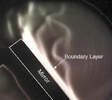
Another area of concern which indicates a substantial lack of knowledge regarding modern reflector telescope design principles is Carpenter’s deliberate decision to leave the primary mirror enclosed within the existing unmodified “mirror bucket,” which is poorly ventilated at best. Even though a fused quartz mirror has a low coefficient of thermal expansion and will retain a good optical figure through a large range of temperature changes (if properly mounted and supported), it is still a rather large piece of material and has a thermal mass that will radiate heat to the surrounding air. This creates turbulence in the mirror-to-air boundary layer and above as this heated air rises and will affect the visibility of fine detail on any extended objects such as planets and the moon.
|
|
|
To reduce this turbulence and the cool-down time of large thin telescope mirrors - no matter what the substrate - the best practices are to have the mirror in the open as much as possible or more importantly, small fans are universally employed to assist in reducing the cool down time, track falling nighttime temperatures, and flush the boundary layer. A 40 degree F (20 C) day-night temperature change is typical in the summer months at the Goldendale Observatory.
|
|
Leaving the new mirror almost totally enclosed in the unmodified and poorly-ventilated thick metal mirror bucket only insulates the mirror in a static blanket of surrounding ambient air, and can significantly extend its cool-down time. This could have been easily mitigated by simply ventilating the existing mirror bucket with fans as shown above middle and right. Instead, Carpenter - again demonstrating his near-total lack of knowledge about telescope design and alleged expertise - stated his "favorite part of the [mirror] story" is that he - in collaboration with Washington State Park Ranger Andy Kallinen who has no telescope expertise of any kind - decided they "could leave it as it was" and that "no new holes" were needed, and the telescope was "dramatically improved without chopping it up."
|
Built by amateur astronomers, the Warren Rupp Observatory in Ohio features one of the largest telescopes available to the public in the world, and is run by the local amateur astronomy club. It features a 36 inch Newtonian reflector telescope as the main instrument.
The mirror cell/tube extension holds the 36" mirror, and a large number of back and side cooling fans. The three hand-wheels are for the mirror collimation adjustment. Note the small white rollers on the left and right sides of the mirror - these are part of the mirror's edge support, which is formed by whiffletrees that go all the way around the mirror, as seen to the right and described below. |
|
While Carpenter alleges he failed to initially consider obtaining one of the "worlds best" primary mirrors from one the most well-known telescope mirror makers in the USA because of a made up reason that he assumed it was made in “Africa or Italy or something,” he had no problem getting other critical components abroad.
However, given the foregoing issues, there is reason to question the design of the mirror’s supporting cell, described as being a “plate” (singular) made in England, when state-of-the-art primary mirror cell makers are well known and available nearby in the USA, and 18 point multiple-plate floatation mirror support cells are the standard for a 25 inch mirror. This is especially important for a large thin mirror as is now employed in the GOSP telescope, in order that it doesn't deform under its own weight. Carpenter appears to believe that because fused silica is "harder than regular glass" it therefore is totally immune to flexure, which is not the case. Fused silica is 12% stiffer than Pyrex (borosilicate glass), but 20% heavier per cubic mm, so it would flex more under its own weight because the identical mass of the mirror would be thicker with Pyrex. Next to the primary mirror quality itself, proper support of the primary mirror is the most important consideration - and critical to its optical performance. Shown at right is the prototype of a new state-of-the art equatorial telescope mirror cell made in Prineville, Oregon, USA. Note this employs the same critical whiffletree edge supports (5) used in the University of Arizona's 24 inch Space Situational Awareness instrument shown above, and employs a counter-balanced eighteen-point flotation design. Such a mirror cell could have been easily afforded (currently a 24" mirror cell ~ $7,700 - $8,200) with the $12,000 savings from the opportunity cost of the "NASA" cellular mirror, let alone the $50,000 dubiously spent on a temporary concrete deck for the Observatory. Unfortunately, Carpenter's stated choice of a fused quartz mirror 25 inches in diameter versus the original mirror's 24.5 inch aperture was not only inappropriate due the telescope's smaller front truss ring flange inside diameter* (an "aperture stop" that nullifies the increased aperture) - the larger mirror now makes using such a mirror cell with whiffletree roller lateral support almost if not completely impossible using the existing mirror bucket support structure. There likely is simply not enough clearance between the mirror and the bucket wall. Otherwise, given the new mirror is 4 inches less thick than the original mirror, there would have been more than enough room in the existing "mirror bucket" for the requisite fans and a best-practices mirror support structure. |
|
* The front secondary support truss ring should be large enough to allow a cone of light that subtends at least +0.5 degree on the optical axis to pass through the entrance of the telescope without obstruction. For a 25 inch f/5 primary mirror, this would be about 26.5 inches. Given the telescope's smaller diameter truss flange ring(s), a 24 inch ~ f/4 mirror would have been the most appropriate diameter/focal length mirror for the telescope's existing structure. |
Optimized 20 inch (0.5 meter) equatorial Newtonian reflecting telescope with a high CFM fan-ventilated primary mirror cell, correctly sized secondary mirror and thin four-vane "spider" support, and an optimized low profile coma corrector & focuser. Designed & built by Bob Yoesle.
|
The Edward R. Byers Co., with over 60 years of telescope building experience, was strongly recommended to Washington State Parks as a consultant for the Newtonian conversion at the beginning of the telescope upgrade process in 2014 - and then again in 2016 - particularly for the telescope secondary mirror support and rotating focuser implementation. Byers was a legend in the astronomy community, and built an excellent example of a large Newtonian telescope as seen here. Note the precision upper secondary mirror rotating assembly and low profile focuser. Without such expertise and skills, it is highly unlikely Carpenter's eyepiece rotating mechanism is capable of maintaining critical optical alignment throughout 360 degrees of rotation at various sky-pointing locations.
However, Carpenter - with no previous telescope design or building experience whatsoever - felt he could MacGyver a solution, proving once again you get what you pay for. What is truly amazing is that Washington State Parks would pay $50,000 for a relatively small amount of concrete work, which it would then scrap shortly thereafter, and employ professional and expensive high-end architects for a building design, while skimping on the heritage telescope asset itself, and end up with the embarrassingly incompetent results detailed above. Just goes to show where their priorities were. |
|
|
August 20, 2014 "It's important to repeat that we already have in storage a [Casesegrainian] secondary mirror assembly that will work in a Newtonian configuration. The only custom work needing to be done is a provision for rotation (Teflon or roller-bearings) and finding a way to affix the new focuser to the side of the assembly. This can be accomplished in many different ways by anyone with metal (or possibly wood-working) skills. In other words, while I appreciate the genius expertise of guys like Ed Byers, it may be a waste of money to secure his services in this particular instance." Troy J Carpenter, Interpretive Specialist Goldendale Observatory State Park Washington State Parks & Recreation Commission |
|
Note the backhanded compliment directed towards Byers. And while Byers may or may not have been a "genius," he (and anyone else with any telescope design bona fides) would never have used a moveable surplus photographic enlarger bellows to support a telescope focuser. Only someone without any telescope design knowledge or experience would have come up with a moronic idea like that. On the other hand, as demonstrated above for the cellular primary mirror acquisition, Carpenter has well-established credentials in the "waste of money."
And while Carpenter boasts he’s the “Administrator of the Observatory with America’s best public telescope," this arrogant claim obviously isn't even close to reality.
Unfortunately, these costly and now more difficult-to-remedy GOSP telescope modification errors were inevitable given Washington State Park’s lack of familiarity with all things astronomical, compounded by a defective process for consulting an individual who appears to believe (and convinced others less knowledgeable) that he is a "subject matter expert" about all things astronomical, without any independent or objective verification of the requisite knowledge and skill sets.
This is exacerbated by an unwillingness to seek outside consultation on almost any aspect of specialized observatory operations and equipment for which there is little familiarity, let alone expertise. It clearly demonstrates the lack of organizational and project management competence, and reinforces the need for knowledgeable and qualified independent oversight when making important decisions regarding the Washington State taxpayer's Observatory and its celebrated telescope in order to avoid a similar "waste of money."
And while Carpenter boasts he’s the “Administrator of the Observatory with America’s best public telescope," this arrogant claim obviously isn't even close to reality.
Unfortunately, these costly and now more difficult-to-remedy GOSP telescope modification errors were inevitable given Washington State Park’s lack of familiarity with all things astronomical, compounded by a defective process for consulting an individual who appears to believe (and convinced others less knowledgeable) that he is a "subject matter expert" about all things astronomical, without any independent or objective verification of the requisite knowledge and skill sets.
This is exacerbated by an unwillingness to seek outside consultation on almost any aspect of specialized observatory operations and equipment for which there is little familiarity, let alone expertise. It clearly demonstrates the lack of organizational and project management competence, and reinforces the need for knowledgeable and qualified independent oversight when making important decisions regarding the Washington State taxpayer's Observatory and its celebrated telescope in order to avoid a similar "waste of money."
A Small Lesson Learned - And A Large Lesson Not:
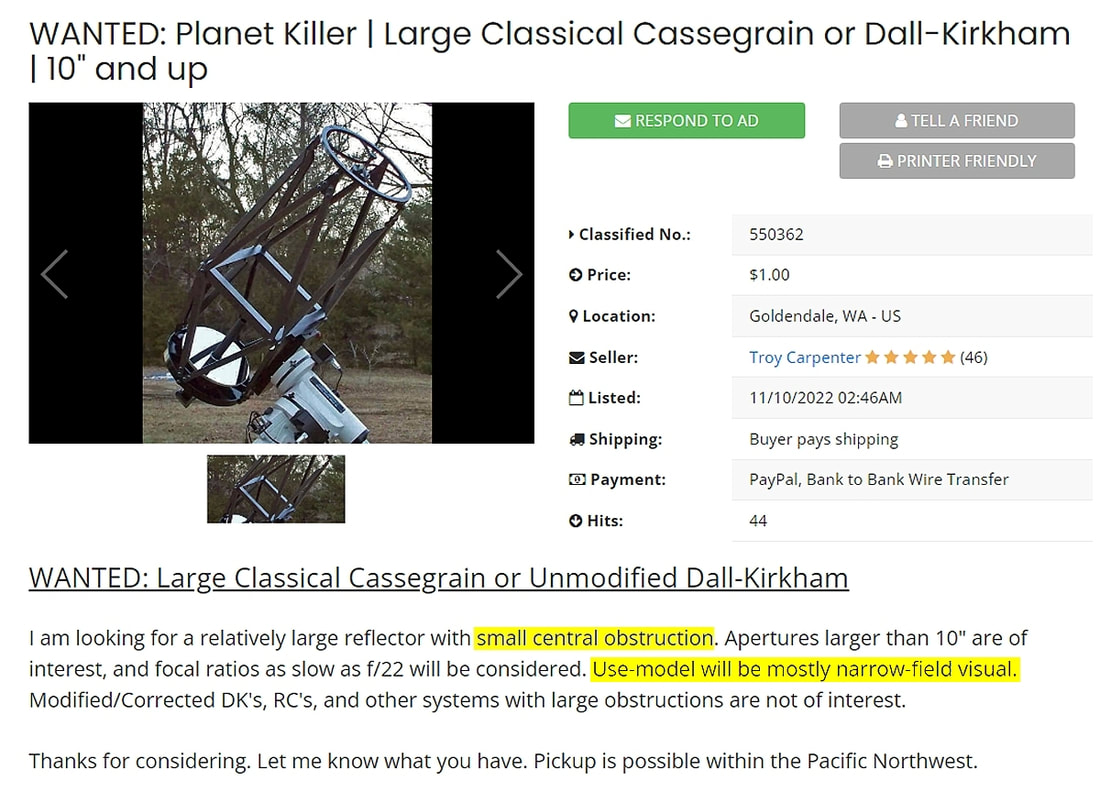
It is gratifying to see Carpenter has apparently gained some on-the-job training about telescope central obstructions thanks to this critique of the significantly flawed 24½ inch telescope "refurbishment."
Unfortunately, rather than admit past failures and remediate the problems with his 24½ inch reflector implementations, he now appears to want to throw more good money after bad by pursuing a “planet killer” Cassegrainian telescope with a “small central obstruction” for “narrow-field [i.e. high-magnification] visual use.”
First, there are few if any such commercially made large small-central-obstruction Cassegrain or Dall-Kirkham instruments, and it would generally have to be a custom-built set of optics and telescope employed for such a one-off telescope design – and therefore likely more expensive.
Second, for “narrow-field visual use” such as higher-magnification lunar and planetary observing, implementing a "small central obstruction" by using a 4 inch (instead of the current 6 inch) interchangeable Newtonian secondary diagonal mirror system (16% obstruction vs. the current 25%) could with additional effort be accomplished with the 24½ inch telescope – for far less money. This would take full advantage of the wasted high-contrast "planet killer" potential of the premium quality Zambuto primary mirror – which already cost a pretty penny. The use of a high-quality 2-4 x Barlow lens with this f5 primary mirror could readily accomplish the goal of having a ~ f10-20 focal ratio if desired. Once again, this implementation was apparently beyond Carpenter’s knowledge base and skill set, or was deliberately disregarded as an option, as initially occurred with the fused quartz telescope mirror acquisition.
Third, this situation again reveals Carpenter's 24½ inch primary mirror replacement and procurement was defective. The only legitimate reason to have the new Zambuto primary mirror at the original f4.9 would have been to use the original Cassegrainian secondary mirrors (and secondary mirror support) for a narrow-field Cassegrainian optical configuration. This would have required the new primary mirror to include a central hole provision prior to grinding and figuring. This would have allowed for the option of using the existing interchangeable small central obstruction secondary mirrors for the Cassegrainian configuration.
Ironically, the Cassegrainian telescope configuration with the primary mirror hole had been used from the beginning with the original mirror (note the central hole and small Cassegrainian secondary mirror in the Sky & Telescope Amateur Astronomers article's picture below), and therefore multiple Cassegrainian secondary mirrors were made and available, along with an elaborate professionally custom-made multi-port Cassegrain focuser system. This dual Newtonian-Cassegrainian configuration was a design feature of many of the 1960’s telescopes:
Unfortunately, rather than admit past failures and remediate the problems with his 24½ inch reflector implementations, he now appears to want to throw more good money after bad by pursuing a “planet killer” Cassegrainian telescope with a “small central obstruction” for “narrow-field [i.e. high-magnification] visual use.”
First, there are few if any such commercially made large small-central-obstruction Cassegrain or Dall-Kirkham instruments, and it would generally have to be a custom-built set of optics and telescope employed for such a one-off telescope design – and therefore likely more expensive.
Second, for “narrow-field visual use” such as higher-magnification lunar and planetary observing, implementing a "small central obstruction" by using a 4 inch (instead of the current 6 inch) interchangeable Newtonian secondary diagonal mirror system (16% obstruction vs. the current 25%) could with additional effort be accomplished with the 24½ inch telescope – for far less money. This would take full advantage of the wasted high-contrast "planet killer" potential of the premium quality Zambuto primary mirror – which already cost a pretty penny. The use of a high-quality 2-4 x Barlow lens with this f5 primary mirror could readily accomplish the goal of having a ~ f10-20 focal ratio if desired. Once again, this implementation was apparently beyond Carpenter’s knowledge base and skill set, or was deliberately disregarded as an option, as initially occurred with the fused quartz telescope mirror acquisition.
Third, this situation again reveals Carpenter's 24½ inch primary mirror replacement and procurement was defective. The only legitimate reason to have the new Zambuto primary mirror at the original f4.9 would have been to use the original Cassegrainian secondary mirrors (and secondary mirror support) for a narrow-field Cassegrainian optical configuration. This would have required the new primary mirror to include a central hole provision prior to grinding and figuring. This would have allowed for the option of using the existing interchangeable small central obstruction secondary mirrors for the Cassegrainian configuration.
Ironically, the Cassegrainian telescope configuration with the primary mirror hole had been used from the beginning with the original mirror (note the central hole and small Cassegrainian secondary mirror in the Sky & Telescope Amateur Astronomers article's picture below), and therefore multiple Cassegrainian secondary mirrors were made and available, along with an elaborate professionally custom-made multi-port Cassegrain focuser system. This dual Newtonian-Cassegrainian configuration was a design feature of many of the 1960’s telescopes:
Due to Carpenter's basic telescope design ignorance, the Cassegrainian configuration is now unavailable with the new Zambuto primary mirror, as any coring and removal of the central hole region would release small internal stresses in the fused quartz substrate, and would distort the mirror's excellent optical figure. This would require the mirror to be reground, polished and re-figured at almost the cost of a new primary mirror.
Lastly, the Goldendale Observatory already has a narrow-field high-power visual instrument larger than 10 inches in the well reviewed Celestron 14 telescope. While the C14 does have a 32% central obstruction, this is far better than most other commercially available Ritchey-Chretien, and Dall-Kirkham compound reflector telescopes. The C14 is also used by some of the best planetary imagers on the planet (see here, here, and here), and is used by many colleges and universities for education and astronomical research. Apparently Carpenter feels the C14 telescope is just a bit too ordinary for his tastes and need for attention-garnering "uniqueness."
The 24.5 inch telescope's current optical configuration is therefore a mediocre at best of all possible outcomes: a primary mirror deliberately made with a focal ratio too large for the optical tube assembly dimensions, making it more difficult for an optimized Newtonian configuration, which also utilizes an oversized improperly placed (and needlessly expensive) contrast-degrading Newtonian secondary mirror, and a ridiculous shade-tree mechanic focuser implementation which becomes obstructed and likely out of collimation at various rotational positions. Added to this is a primary mirror that is not properly ventilated, and no longer able of being used in the "small central obstruction narrow field" "planet killer" Cassegrain configuration that could have been easily accomplished: The money Carpenter wasted on the "NASA cellular mirror" could have gone to making another Cassegrainian secondary mirror for an f/4 centrally perforated primary mirror which could have been used with the existing professionally-made and now completely useless Cassegrain focusing system.
So much for Carpenter's delusions of being a "subject matter expert" and Administrator of "America's best public telescope."
Next up on Fantasy Island, and in pursuit of having no central obstruction, is the desire for a 6 to 11 inch f10 to f15 refractor objective, "preferably" “ED doublets or true [?] triplets” (i.e. a "true" apochromatic objective), the real purpose (as with the 24 inch cellular "NASA" primary and secondary mirrors fiasco) being its “uniqueness” for once again marketing the Observatory and himself as the Administrator with Americas best public telescope(s):
First, the Observatory already had a "classic" 1960's Jaegers achromatic 6 inch f15 refractor carried on the main 24 inch telescope.
Second, almost every apochromatic (APO) ED or triplet refractor will be f6 to f8. Indeed this is their claim to fame and purpose. These apochromatic short focal ratio (for a refractor) telescopes generally have much better (but not perfect) color correction compared to a comparable achromatic (ACHR) refractor telescope:
Also note that the larger the refractor objective lens (whether an achromatic or apochromatic), the longer the focal ratio has to be in order to suppress chromatic aberration to a comparable level of correction of a smaller objective lens:
Third, demonstrating Carpenter's lack of real-world telescope experience and relevant knowledge, large 6 to 11 inch f10 to f15 doublet or triplet apochromatic refractor objectives or telescopes are almost as rare as unicorns – and like the abandoned 24 inch cellular mirror, these larger long-focus apochromats are horrendously expensive. These would remain very expensive even if they could be found on the used market at about 80-90% of their new price. Indeed, many of these telescopes – such as those once made by Astro-Physics – sell for much more than their original inflation-adjusted list prices on the used market:
This 7 inch f8 Astro-Physics triplet APO refractor telescope originally sold for $3,600 when it was first introduced 30 years ago, and was priced much higher than the inflationary change that has taken place from then to now.
Similarly priced, here's another fine example of a "unique" long-focus apochromatic refractor telescope. Carpenter could opt for this very rare Carl Zeiss – one of the most respected names in optics – 6 inch f15 telescope of unparalleled optical quality to replace the Goldendale Observatory's existing 6 inch f15 refractor:
For the very best refractor telescopes that money can buy, for a 6 to 11 inch f10-16 refractor telescope you can't do better than the TEC 8 inch f11 with an APO fluorite doublet objective for $29,000:
These are the most expensive telescopes and telescope objectives per inch of aperture currently produced, or available used. And just as with the Dream Cellular mirror fiasco, quite a bit of taxpayer money to fulfill Carpenter's need for "uniqueness" in order to promote himself as the "Administrator of the Observatory with America's best public telescope(s)."
Note the above used Astro-Physics and Zeiss refractors cost more than the 24½ inch Zambuto replacement primary mirror. Unique and exquisite as they are, only an wealthy "cost no object" “refractor nut” – or a wealthy idiot with little knowledge of real-world telescope optics – would pursue such instruments. Real-world, a twice the aperture Celestron 14 f11 telescope ($6,500 new) will surpass them for "narrow-field visual use," as many of the best planetary imagers in the world do.
These are the most expensive telescopes and telescope objectives per inch of aperture currently produced, or available used. And just as with the Dream Cellular mirror fiasco, quite a bit of taxpayer money to fulfill Carpenter's need for "uniqueness" in order to promote himself as the "Administrator of the Observatory with America's best public telescope(s)."
Note the above used Astro-Physics and Zeiss refractors cost more than the 24½ inch Zambuto replacement primary mirror. Unique and exquisite as they are, only an wealthy "cost no object" “refractor nut” – or a wealthy idiot with little knowledge of real-world telescope optics – would pursue such instruments. Real-world, a twice the aperture Celestron 14 f11 telescope ($6,500 new) will surpass them for "narrow-field visual use," as many of the best planetary imagers in the world do.
If Carpenter is indeed considering a long-focus 6 to 11 inch f10 to f15 achromatic refractor objective to replace the existing 6 inch f15 telescope, the highly regarded ISTAR Optical achromatic objectives are readily available for much less money, and any residual chromatic aberration can be dealt with by appropriate filters.
It should also be noted that a well-made, long focal-length Newtonian reflector has many advantages over such a refractor. It has no chromatic aberration, and utilizing a curved or wire secondary mirror support or an optical window – combined with a small secondary mirror obstruction for low diffraction – can almost equal a similar aperture apochromatic refractor for a tenth of the cost. When the reflector aperture exceeds the refractor by as little as 10-15%, there is little if any difference, and above that, the long-focus Newtonian reflector wins hands down.
But all of the above alternatives for a perfectly color-free, unobstructed, long focal ratio, narrow-field telescope are completely unnecessary. All Carpenter would have to do is what NASA, professional astronomers, and many amateur astronomers do for large aperture unobstructed optics: employ an off-axis paraboloidal mirror. For the cost of a piece of cardboard, which can easily be added and removed whenever desired, Carpenter could have the equivalent of a $47,000 228 mm (9 inch) apochromatic refractor objective lens by simply using an off-axis mask for the 24 inch telescope:
But all of the above alternatives for a perfectly color-free, unobstructed, long focal ratio, narrow-field telescope are completely unnecessary. All Carpenter would have to do is what NASA, professional astronomers, and many amateur astronomers do for large aperture unobstructed optics: employ an off-axis paraboloidal mirror. For the cost of a piece of cardboard, which can easily be added and removed whenever desired, Carpenter could have the equivalent of a $47,000 228 mm (9 inch) apochromatic refractor objective lens by simply using an off-axis mask for the 24 inch telescope:
Again demonstrating a lack of knowledgeable, qualified, and otherwise competent oversight and management by Washington State Parks – akin to the previous attempted purchase of a hugely expensive and unnecessary ultra lightweight cellular primary mirror for the 24½ inch telescope – Carpenter is pursuing highly dubious and expensive telescope procurements only for their perceived attention-getting “pizzazz.” But this is what one would expect from an agency and individual devoted primarily to tourism generation, not observational astronomy education under a dark sky.
Washington taxpayers got a new and expensive observatory building that has won architectural recognition by hiring professional architectural and construction firms. Unfortunately, Washington State Parks apparently won’t do the same for what really matters most for an observatory – its telescopes.
The only priority for the Goldendale Observatory State Park under Carpenter – and therefore in a Washington State Parks universe that excludes external expertise and stakeholder input – is marketing hype. This is what one might expect from an individual who appears mostly concerned with promoting an image as a "subject matter expert" where no expertise exists – the Dunning-Kruger effect – and as demonstrated below – seems to prefer to be a wholly owned subsidiary of the Greater Goldendale Area Chamber of Commerce marketing universe.
The taxpayers of Washington State will once again pay dearly for this extravagance and exacerbation of the previous misappropriations and telescope procurement and modification mismanagement.
Again demonstrating a lack of knowledgeable, qualified, and otherwise competent oversight and management by Washington State Parks – akin to the previous attempted purchase of a hugely expensive and unnecessary ultra lightweight cellular primary mirror for the 24½ inch telescope – Carpenter is pursuing highly dubious and expensive telescope procurements only for their perceived attention-getting “pizzazz.” But this is what one would expect from an agency and individual devoted primarily to tourism generation, not observational astronomy education under a dark sky.
Washington taxpayers got a new and expensive observatory building that has won architectural recognition by hiring professional architectural and construction firms. Unfortunately, Washington State Parks apparently won’t do the same for what really matters most for an observatory – its telescopes.
The only priority for the Goldendale Observatory State Park under Carpenter – and therefore in a Washington State Parks universe that excludes external expertise and stakeholder input – is marketing hype. This is what one might expect from an individual who appears mostly concerned with promoting an image as a "subject matter expert" where no expertise exists – the Dunning-Kruger effect – and as demonstrated below – seems to prefer to be a wholly owned subsidiary of the Greater Goldendale Area Chamber of Commerce marketing universe.
The taxpayers of Washington State will once again pay dearly for this extravagance and exacerbation of the previous misappropriations and telescope procurement and modification mismanagement.
Getting back to "wasting money" on "hippy-dippy" dark sky "activism."
DarkSkies Northwest IDA Chapter leader David Ingram, who attended Carpenter's 2016 Rose City Astronomers presentation, noted that while Carpenter spoke at length about the forthcoming building and telescope improvements - and took the opportunity to ridicule his predecessor Stout for his dark sky advocacy efforts - he completely failed to mention that Goldendale Observatory was an International Dark Sky Park - at the time the only one in the Pacific Northwest.
However, on December 30, 2016, Washington State Parks Director Don Hoch assured the IDA that Carpenter’s “low priority” views on light pollution were “not reflective of State Parks position on the issue.”
Carpenter apparently didn’t get the memo. In April 2017 - while the Dark Sky Park certification remained suspended pending Karlson's revised submission - Carpenter again publicly stated “It's true, dark skies are not a high personal priority for me,” this time citing what he perceives as the more important capital facilities and building improvements he sought to get lots of attention for. Yet it is difficult to understand why one would be incompatible with the other, as there are minimal budgetary or time allocation issues in meeting the IDA dark sky programming requirements (see SCRIBD document below). Regardless, at this point the IDA likely had little doubt concerning the sincerity with which Carpenter emphasized his complete lack of interest in dark sky programming or advocating for the protection for one of the more prestigious International Dark Sky Parks in the world.
DarkSkies Northwest IDA Chapter leader David Ingram, who attended Carpenter's 2016 Rose City Astronomers presentation, noted that while Carpenter spoke at length about the forthcoming building and telescope improvements - and took the opportunity to ridicule his predecessor Stout for his dark sky advocacy efforts - he completely failed to mention that Goldendale Observatory was an International Dark Sky Park - at the time the only one in the Pacific Northwest.
However, on December 30, 2016, Washington State Parks Director Don Hoch assured the IDA that Carpenter’s “low priority” views on light pollution were “not reflective of State Parks position on the issue.”
Carpenter apparently didn’t get the memo. In April 2017 - while the Dark Sky Park certification remained suspended pending Karlson's revised submission - Carpenter again publicly stated “It's true, dark skies are not a high personal priority for me,” this time citing what he perceives as the more important capital facilities and building improvements he sought to get lots of attention for. Yet it is difficult to understand why one would be incompatible with the other, as there are minimal budgetary or time allocation issues in meeting the IDA dark sky programming requirements (see SCRIBD document below). Regardless, at this point the IDA likely had little doubt concerning the sincerity with which Carpenter emphasized his complete lack of interest in dark sky programming or advocating for the protection for one of the more prestigious International Dark Sky Parks in the world.
|
Carpenter, who privately stated to me (and frequently referred to Goldendale as "Oldenstale") his main objective is to make a name for himself before moving on to greener pastures.
This may help to explain his lack of interest in long-term night sky protection for the Goldendale Observatory, along with the preoccupation with the capital facilities improvements he hopes to take much credit for (which includes the aborted "NASA mirror" debacle), as well as emphasis on a need of being "popular" via exaggerated visitor counts. He appears has little to no interest with formally involving amateur astronomers with the Goldendale Observatory - one of the original constituencies of the Observatory. Despite complaining about his "incompetent" ancillary Washington State Park Aides who lack astronomy or telescope familiarity (ironic given the foregoing telescope upgrade issues), when the President of the Rose City Astronomers offered to assist with providing volunteers at the Observatory in exchange for off-hours telescope time, Carpenter condescendingly stated the telescope was “not a toy." When RCA member's participation with Observatory events as docents was discussed at a meeting with RCA members and Washington Area Manager Pratt, Carpenter interjected that he didn’t want the Observatory “to become a club house.” Years latter Carpenter repeated these insulting remarks to local media. These derogatory comments were not befitting of these amateur astronomers, many whose decades-long knowledge and abilities in astronomy and handling of sophisticated telescope equipment far exceeds Carpenter's. The reality is that the telescope was originally and explicitly intended to be available for use by amateur astronomers, and was indeed built and then run by amateur astronomers. However, as will be shown, it's no surprise that Carpenter has convinced his superiors that amateur astronomers are an insignificant constituency, and therefore their concerns, which would include protecting the Observatory’s night sky, are essentially irrelevant to the Observatory's "amusement park" theme and Carpenter-centered entertainment operation. |
|
|
Sophisticated well-equipped amateur astronomers from Portland, Seattle, and the Tri-Cities could be advantageous as volunteers and docents in helping with Observatory programs and providing needed additional expertise, telescopes, and personnel to operate them during peak visitation periods.
|
Carpenter appears uninterested in (or perhaps intimidated by) such collaboration, even though participation of amateur astronomer volunteers was originally an integral part of the Observatory operations, and volunteers figure prominently in the State Parks Strategic Plan in order to "leverage resources and make parks welcoming to visitors."
|
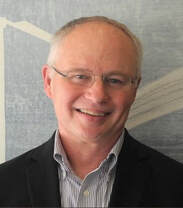
More troubling, Pratt and Carpenter allied with Greater Goldendale Area Chamber of Commerce Director Dana Peck in their opposition to promoting meaningful dark sky stewardship measures. Peck, who like Pratt has absolutely no knowledge of astronomy, telescopes, or observatories, was invited as an interviewer on the hiring committee at the Observatory. Although he champions the Observatory for tourism, Peck is a devout anti-regulation and pro-economic development reactionary political operative who outright and explicitly rejects enforcement of Goldendale and Klickitat County lighting codes intended to protect the Observatory’s night sky. Peck has served on the Klickitat County Economic Development Authority, and he and Washington State Parks Area Manager Pratt were natural allies.

The Chamber’s value for the Goldendale Observatory was summarized by its Vice President Jonathan Lewis, who equated the Goldendale Observatory to an “amusement park," and when asked if he had an interest in astronomy, stated “...no, I like looking at the stars from my backyard... My connection has more been from the Chamber, and looking at the tourism. I’ve been on a little committee of one of the Chamber/FOGO liaison. The Chamber sees the Observatory as key to getting people to stay at the hotels.” Coincidentally, the Chamber is funded by local hotel occupancy taxes. Therefore it is no surprise that Carpenter listed Lewis as the FOGO contact on Carpenter's delinquent and falsified 2016 IDA annual recertification report (see SCRIBD document at the bottom of the page). Lewis now serves as Vice President on the Board the the Friends of Gorge Area Parks.
|
Peck and Lewis know where their bread is buttered. The Goldendale Quality Inn Hotel is operated by Washington State Representative Gina Mosbrucker, a former VP and Executive Director of the Goldendale Chamber of Commerce. Mosbrucker personally intervened (see below) to remove widely accepted Dark Sky Community outdoor lighting standards from Goldendale's proposed 2017 lighting code revision that could have better protected the night sky of the Goldendale Observatory State Park.
|
Mosbrucker strongly opposes allegedly "burdensome" regulations on businesses such as lighting codes, and publicly stated as a "property rights person" she believes "you should be able to do what you want with your own land."*
* See Mosbrucker's hilariously inept and evasive reply at the October 7, 2022 Candidate Night, from 1:31:34 to 1:32:44.
We can't wait to hear from Representative Mosbrucker when an adjacent property owner decides to put an odiferous water polluting pig farm next to her hotel.
* See Mosbrucker's hilariously inept and evasive reply at the October 7, 2022 Candidate Night, from 1:31:34 to 1:32:44.
We can't wait to hear from Representative Mosbrucker when an adjacent property owner decides to put an odiferous water polluting pig farm next to her hotel.
Peck and Lewis are little more than a con man and minion for Klickitat County political and business interests. Even though the Goldendale Observatory has belonged to the State and all its citizens since 1980, in 2003 amateur astronomers not residing in Goldendale or Klickitat County were disparaged by a few locals as “outsiders” due to their advocacy for implementation of long-ignored city and county lighting codes to protect the Observatory’s night sky, especially by those concerned with building of the Calpine (now Puget Sound Energy) gas turbine power plant.
According to the Friends President at the time, in 2003 Peck (then Director of Klickitat County Economic Development) participated in (and per a local reporter takes prideful credit for organizing) a coup of Goldendale locals that removed the amateur astronomers from the Friends Board of Directors, which thereafter left Peck in place as a the only remaining member and the FOGO Board President. The Friends group was immediately disbanded by Peck and his allies. Peck’s Machiavellian ends-justify-the-means behavior and unwillingness to be an authentic advocate for night-sky protection is therefore well known in the amateur astronomy community.
|
|
Before being shut down by Peck and his associates, Washington State Parks Interpretive Specialist Steven Stout and Friends of Goldendale Observatory members met with Calpine officials to help ensure the use of full cutoff ("fully shielded") lighting fixtures which complied with the Goldendale and Klickitat Co. lighting codes. Although still excessively bright, the result was a reduction in scattered light and resulting skyglow, as seen above on the right compared to the unshielded and partially shielded out-of-compliance lighting fixtures found throughout Goldendale and Klickitat County. Downtown Goldendale in center, Hwy 97 & Simcoe Road business complex on left in 2014. Photo by Bob Yoesle.
|
|
Instead of Washington State Parks advocating for enforcement of lighting codes in order to protect the night sky of the Observatory, it appears Pratt and Carpenter influenced Washington State Parks Director Don Hoch to naively inform the IDA that the Goldendale Chamber of Commerce would be part of a "partnership network" to provide advocacy for regulatory compliance with lighting codes.
Under Peck this was equivalent to stating the Klu Klux Klan will be a partner for promotion of enforcement of anti-racial discrimination laws - a ludicrous proposition at best.
Moreover, the IDA does not allow the re-assignment or contracting out of the responsibilities required for Dark Sky Park Certification, including that “participants serve as a beacon in their community for stewardship and passionate advocacy for the night sky.” Indeed, for Dark Sky Parks the IDA includes "cooperation with at least two nearby municipalities that results in adoption of lighting policies that improve sky conditions in the Park." One would think this would include encouraging support for regulatory compliance with the already existing outdoor lighting codes and best practices, which the IDA considers an important tool for protecting the night sky. Indeed, enforcement of lighting codes is critical to limit the adverse "off-site" impacts of outdoor lighting.
Under Peck this was equivalent to stating the Klu Klux Klan will be a partner for promotion of enforcement of anti-racial discrimination laws - a ludicrous proposition at best.
Moreover, the IDA does not allow the re-assignment or contracting out of the responsibilities required for Dark Sky Park Certification, including that “participants serve as a beacon in their community for stewardship and passionate advocacy for the night sky.” Indeed, for Dark Sky Parks the IDA includes "cooperation with at least two nearby municipalities that results in adoption of lighting policies that improve sky conditions in the Park." One would think this would include encouraging support for regulatory compliance with the already existing outdoor lighting codes and best practices, which the IDA considers an important tool for protecting the night sky. Indeed, enforcement of lighting codes is critical to limit the adverse "off-site" impacts of outdoor lighting.
More Lying & Trickery
Given that Washington State Parks under Pratt and Carpenter had abandoned all dark sky conservation advocacy and education required for the Certified International Dark Sky Park status, FOGO incorporated this activity into their presentations and website education, and also produced and printed the "Good Neighbor Lighting" brochure to educate the public about night sky conservation to protect the Observatory.
Apparently this was not acceptable to Pratt and Carpenter. Carpenter referred to this night sky conservation advocacy as "vandalism" of the FOGO website he helped to set up for FOGO and clandestinely owned in violation of Washington State Parks policy, a "waste of money," and "pandering to amateur astronomers."
Carpenter's interest for the FOGO website was to essentially duplicate the Washington State Parks Observatory webpage, stating he was frustrated with the "incompetent assholes" who were "slow and got things all messed up" regarding updating the Observatory's operating hours, etc. While the Friends website covered these issues in detail, Carpenter would later suggest to the Friends that they split-up the FOGO website and have a separate duplicate Observatory operations website for him (paid for by FOGO of course), and another for the Friends.
He eventually would get his wish.
Carpenter, who refers to himself as a "computer wiz" and offered FOGO's Treasurer Earlene Sullivan (a grandmother in her late 70's) "help" with setting up the reconstituted Friends group website and PayPal account in October 2015, admitted publicly that he, Peck, and Lewis – with Pratt's knowledge and approval – conspired in having the Chamber of Commerce take over the Friends website in April 2017.
Prior to this, Scott Griffith, Washington State Parks East Region Manager stated "our obligation is to not have Troy participating in that website development or access to it or ownership of it, so we’ll own that." Therefore, Carpenter was explicitly prohibited from "any involvement with or ownership" of the Friend's website (or financial accounts) per Griffith - who charged Pratt with the execution of this policy - but apparently failed to follow up with Pratt to ensure this had taken place.
This prohibition of involvement and ownership was also confirmed by former Washington State Parks Goldendale Observatory Interpretive Specialist Steve Stout, who had worked with the previous incarnation of the Friends, and submitted information to them regarding the Observatory for their website - without any direct involvement with the website itself. Carpenter publicly stated that "FOGO was a formality to get around a policy I had every intention of violating." One of the defining characteristics of individuals with a narcissistic personality disorder is that they believe they are entitled to breaking rules and violating accepted social norms. Because they believe themselves to be special and superior to most people, they see no issue with being the exception to following the rules.
Carpenter indeed secretly owned both the website domain and URL, and stated that East Region Manager Griffith was "oblivious to the details of it." This could imply overall knowledge, but would allow plausible deniability for Griffith. In any event, knowing he was prohibited from owning or operating the FOGO website, Carpenter stated that while he didn't initially want to have an Observatory Friends group, he came to value the idea "because I needed to have someone pay for the darn website" which he could set up and covertly own.
This is a stunning display of the lack of managerial oversight and policy enforcement by Washington State Parks. Without informing the Friends Board of Directors including the FOGO Treasurer responsible for the setting up the Friends PayPal and website accounts with Carpenters "help," Carpenter made himself the owner of the website domain and primary contact for the completely independent 501c3 non-profit corporation's PayPal account - and gave himself access to all account activities, records, and transactions, including the ability to generate invoices and receipts without the FOGO treasurers (or anyone else's) permission or approval. Carpenter later stated:
"I had complete absolute total access to every aspect of their finances. I had the credit card number, their signature, expiration date, a pin code, checking account number, and I even conducted transactions using their finances – with permission, of course – and I bought stuff... I had absolute, unfettered access to their finances, was generating multiple invoices on their behalf – I’ve generated about 12 invoices in 12 months. I was literally doing everything for FOGO… because they were unable to." Emphasis added.
|
Really? This statement appears to be a perfect example of narcissistic entitlement and blame shifting by Carpenter. In effect - "I'm so smart and they're so stupid I had to do it all." Narcissists typically demonstrate this type of arrogant grandiosity and superiority behavior - and rationalize that they have done nothing wrong, and that you are 100% the cause of the problem. This often leads to the flaunting of rules (even the explicit rules of one's employer) and norms - which are for inferior people - not the "special" person the narcissist sees themselves as and who is therefore above any rules and the law.

"People with NPD have a dissociative disorder that prevents them from assessing real memories. The past is viewed through magical thinking, delusions, and grandiosity that forces them to re-write history and create their own narrative about the past which is filtered through selective amnesia and inability to accept any blame for what they do.”
|

Top: The PayPal email address Carpenter set up for the Friends of Goldendale Observatory - note the name of the recipient, who was totally unaware that this had been done. Bottom: email address of Carpenter at the Goldendale Observatory State Park. |
Carpenter used the FOGO President's name (not the Treasurer's who was supposed to be responsible for FOGO's financial accounts) to set up a PayPal account that reported directly to his personal Goldendale Observatory email address - not the FOGO email address - without the President's (or treasurer's) knowledge or permission - for which Carpenter had "complete access" and control over. This generally would be considered a form of identity theft.
Note that Carpenter claimed that he had "permission" to be in charge of and manage FOGO finances. Permission from who - the Tooth Fairy? He certainly didn't have permission from the FOGO Board or President, or the new FOGO Treasurer who took over from Treasurer Earlene Sullivan after she resigned due to health issues. And if referring to Sullivan, she had no permission from the FOGO Board to delegate FOGO finances to Carpenter - and she publicly denied having done so.
And if Sullivan was "unable" to do FOGO PayPal management activities (being in her 70's and having just lost her husband), perhaps it was because Carpenter wanted it to be that way after he "helped" Sullivan with the initial FOGO PayPal and website set-up. And despite any perceived "permission" Carpenter imagined he had from Sullivan, it's clear he did not have permission from his employer Washington State Parks: Griffith explicitly stated "Troy should not have a backdoor to FOGO’s website or accounts. We'll fix that."
They didn't. Carpenter's statements show he apparently felt he was entitled to supervise and own all Friends activities and property, which he believed ultimately should benefit and belong to him and the Observatory and therefore be under his direct control.
Not only are Carpenter's statements a conflict of interest, they reveal Carpenter once again to be a liar. PayPal automatically generated FOGO membership dues receipts, donation receipts, and T-shirt sales, and PayPal records revealed Carpenter generated only one invoice.
FOGO and Carpenter (representing Washington State Parks) agreed to a group purchase of GOSP themed T-shirts in order to save on cost. Carpenter’s State-purchased supply would be directly sold to observatory visitors, and FOGO’s purchase would be sold through its website and FOGO outreach activities. Both supplies were supposedly stored separately at the Goldendale Observatory.
And if Sullivan was "unable" to do FOGO PayPal management activities (being in her 70's and having just lost her husband), perhaps it was because Carpenter wanted it to be that way after he "helped" Sullivan with the initial FOGO PayPal and website set-up. And despite any perceived "permission" Carpenter imagined he had from Sullivan, it's clear he did not have permission from his employer Washington State Parks: Griffith explicitly stated "Troy should not have a backdoor to FOGO’s website or accounts. We'll fix that."
They didn't. Carpenter's statements show he apparently felt he was entitled to supervise and own all Friends activities and property, which he believed ultimately should benefit and belong to him and the Observatory and therefore be under his direct control.
Not only are Carpenter's statements a conflict of interest, they reveal Carpenter once again to be a liar. PayPal automatically generated FOGO membership dues receipts, donation receipts, and T-shirt sales, and PayPal records revealed Carpenter generated only one invoice.
FOGO and Carpenter (representing Washington State Parks) agreed to a group purchase of GOSP themed T-shirts in order to save on cost. Carpenter’s State-purchased supply would be directly sold to observatory visitors, and FOGO’s purchase would be sold through its website and FOGO outreach activities. Both supplies were supposedly stored separately at the Goldendale Observatory.
FOGO verbally agreed to a request from Carpenter that if he ran out of T-shirts he would be able to "get a few more at cost" from FOGO to hold him over until he could purchase more. Carpenter apparently believed this entitled him to take whatever amount he wanted without asking. When Carpenter informed the FOGO President “we’re getting low on T-shirts,” FOGO's President verbally agreed to let Carpenter have half of the remaining FOGO supply at cost. In exchange, Carpenter verbally agreed to direct visitors to the FOGO website for the purchase of the remainder of FOGO’s supply.
Instead, Carpenter helped himself to almost the entire inventory of FOGO’s T-shirts, without asking or informing anyone.*
When this was disclosed to the FOGO President and objected to on July 4, 2016, Carpenter dismissively stated “too bad – it’s a done deal – maybe next time.” Like an ex-President of the United States and top secret documents belonging the government, apparently all Carpenter had to do is think it, and the FOGO T-shirts became his T-shirts, and that he would pay only cost for all the T shirts he took. The FOGO President informed Carpenter that it was not his decision to make, and that the Friends Board would meet to decide what would be done, and what the reimbursement to the Friends would be.
The next day, July 5 2016, without FOGO knowledge, authorization, or approval - Carpenter generated a fraudulent PayPal invoice from FOGO to State Parks in order to pay only cost for nearly all the FOGO T shirts stock he took without permission via his access to FOGO’s T-shirts, using his unauthorized Washington State Parks access to FOGO's PayPal account. This left only a very small amount of mostly unpopular sizes for FOGO to attempt to dispense, resulting in a net loss of FOGO’s funds.
Carpenter also lied to FOGO's Treasurer by stating he had to use PayPal for reimbursement and that he was unable to execute a check for reimbursement. Area manager Pratt stated this was completely untrue and that reimbursement by check was normal, and could easily have been for a "wholesale price," not cost.
* In all reality, when Carpenter made the "we're getting low on T-shirts" statement he likely wasn't just referring the the GOSP supply, he probably had already taken and sold most of the Friends supply as well. His verbal agreement to refer people to the FOGO website for T-shirt sales was very likely a lie to hide his already accomplished malfeasance. Again demonstrating the hallmarks of pathological lying, he would later falsely claim that the FOGO President asked him to sell FOGO T-shirts at the Observatory and set the sales money aside for FOGO - which he "obviously couldn't do."
Carpenter concurrently attempted to blame the unauthorized taking of FOGO's T-shirts on an attractive female Observatory employee who may have left after some kind of untoward event or interaction(s) between Carpenter and this subordinate. After she left, Carpenter would go out of his way to vitriolically disparage her as a "clueless giggling air-head" - even though she had a Bachelor of Science degree in Astrophysics with a minor in Mathematics from the Washington State University Department of Physics and Astronomy.
Carpenter has no formal degree in astronomy - or any other discipline. This claim also begs the question of why she would have taken the T-shirts belonging to FOGO and sold them as the Observatory's stock if they were properly kept stored separately and Carpenter had directed her otherwise? This more than likely untrue scenario would just point to Carpenter being an incompetent manager and supervisor.
The FOGO "cooperative agreement" - a legally binding contract with Washington State Parks - explicitly stated FOGO was entitled to purchase at its expense, sell, and keep the net proceeds of the materials it purchased and owned.
Carpenter’s behavior - typical of narcissistic entitlement - was ‘what’s mine is mine, and what’s yours is mine.’ His the-ends-justify-the-means statements following his taking and selling T-shirts belonging to the Friends as belonging to the Observatory included “you [FOGO] only exist to serve the Observatory, so what’s the big deal.”
And the last thing Carpenter wanted was for FOGO to use its funds in order to "waste money" on "unpopular" "hippy-dippy" "pandering to amateur astronomers" light pollution education activities and materials aimed at night sky conservation at the Goldendale Observatory State Park. These activities supported the original intent and requirements of the Observatory founders and intent of the lighting codes for night sky protection and education, as well as for the Observatory being an International Dark Sky Park, but which Carpenter refused to do because of their apparent currently being a "politically charged" "hot button" issue and "unpopular" with the local good old boys and girls.
The FOGO "cooperative agreement" - a legally binding contract with Washington State Parks - explicitly stated FOGO was entitled to purchase at its expense, sell, and keep the net proceeds of the materials it purchased and owned.
Carpenter’s behavior - typical of narcissistic entitlement - was ‘what’s mine is mine, and what’s yours is mine.’ His the-ends-justify-the-means statements following his taking and selling T-shirts belonging to the Friends as belonging to the Observatory included “you [FOGO] only exist to serve the Observatory, so what’s the big deal.”
And the last thing Carpenter wanted was for FOGO to use its funds in order to "waste money" on "unpopular" "hippy-dippy" "pandering to amateur astronomers" light pollution education activities and materials aimed at night sky conservation at the Goldendale Observatory State Park. These activities supported the original intent and requirements of the Observatory founders and intent of the lighting codes for night sky protection and education, as well as for the Observatory being an International Dark Sky Park, but which Carpenter refused to do because of their apparent currently being a "politically charged" "hot button" issue and "unpopular" with the local good old boys and girls.
While Carpenter stated verbally and in writing he had created multiple FOGO invoices before with the prior treasurer Earlene Sullivan's approval, this was revealed to be another lie through easily procured PayPal records, and the statements of the former treasurer herself that to her knowledge this had never taken place. This apparently was the first - and only - such invoice generated by the FOGO account per PayPal. What's clear is that Carpenter took advantage of Sullivan's ignorance of technical details and exploited her inexperience as a lay member of the public for his own advantage.
Immediately following this incident and learning of Carpenters subterfuge, FOGO's President directed the current FOGO Treasurer to secure the Friends PayPal and financial accounts from all access by Carpenter, and also advised Carpenter's immediate supervisor - Washington State Parks Ranger Andy Kallinen.
Kallinen stated he was unaware of Carpenter's involvement with FOGO's accounts, and that this was indeed prohibited for a Washington State Parks employee, and reiterated the need to immediately remove Carpenter's FOGO PayPal access. Kallinen also attempted to cover-up for Carpenter's behavior, stating Carpenter was under some vaguely described high amount of personal stress. This may possibly have been related to the recent departure of the aforementioned "clueless giggling air-head."
In consultation with Kallinen, the FOGO President charitably decided not to pursue a formal complaint against Carpenter, but appropriately informed Carpenter in writing that future business transactions and payments would need written approval in advance by the FOGO Board of Directors.
Due to removing Carpenter from what he believed was his God-given entitlement and right to control FOGO property and its finances, and having informed his immediate supervisor of his unethical behavior, Carpenter immediately resorted to retaliatory behaviors typically found in sociopaths and narcissists.
Carpenter became enraged. He played the victim. He told the FOGO President "your new name is Bob-Quixote," and accused him in writing of being an "enemy of the observatory" and "mentally ill." Thus he employed the tactics of name calling, a smear campaign, and enlisted his cult of followers as flying monkeys to support his gaslighting and entitlement versions of reality.
Even though they advised the FOGO President that an accountant they consulted had emphasized the importance that every FOGO transaction should be kept separate, properly documented in writing and approved, and had "all the 't's crossed and the 'i's dotted," Carpenter's groupies on the FOGO Board drank Carpenter's the-ends-justify-the-means Kool-Aid, and advised to not "rock the boat" and "just look the other way."
Unfamiliar with the details of what had actually occurred, and relentlessly lobbied by Carpenter, they hypocritically parroted Carpenter's projections that the discord between the FOGO President and the Observatory created by Carpenter's unethical behavior and statements was because "Bob wants to be in charge of the observatory - it's that simple."
Pot meet the kettle.
After several months of ongoing retaliatory smear activity against the FOGO President and crippling his credibility for his having appropriately performed his fiduciary responsibilities, and with the new publicly stated "fused quartz" telescope mirror deceptions made at the Rose City Astronomers meeting and the insulting of Stout, Washington State Parks management was made formally aware of these and other significant issues, including Carpenter's prohibited access to the FOGO website.
After a so-called "formal investigation" which was little more than a white-wash and coverup by Washington State Parks of Carpenter's behaviors, Carpenter stated he received a reprimand for his documented unprofessional name-calling - followed by a large pay raise and new title of "Observatory Administrator."
Carpenter's popularity as a public speaker and generator of Discover Pass sales for a financially stressed State Park system seems to have led to a textbook example of the normalization of deviance.
Immediately following this incident and learning of Carpenters subterfuge, FOGO's President directed the current FOGO Treasurer to secure the Friends PayPal and financial accounts from all access by Carpenter, and also advised Carpenter's immediate supervisor - Washington State Parks Ranger Andy Kallinen.
Kallinen stated he was unaware of Carpenter's involvement with FOGO's accounts, and that this was indeed prohibited for a Washington State Parks employee, and reiterated the need to immediately remove Carpenter's FOGO PayPal access. Kallinen also attempted to cover-up for Carpenter's behavior, stating Carpenter was under some vaguely described high amount of personal stress. This may possibly have been related to the recent departure of the aforementioned "clueless giggling air-head."
In consultation with Kallinen, the FOGO President charitably decided not to pursue a formal complaint against Carpenter, but appropriately informed Carpenter in writing that future business transactions and payments would need written approval in advance by the FOGO Board of Directors.
Due to removing Carpenter from what he believed was his God-given entitlement and right to control FOGO property and its finances, and having informed his immediate supervisor of his unethical behavior, Carpenter immediately resorted to retaliatory behaviors typically found in sociopaths and narcissists.
Carpenter became enraged. He played the victim. He told the FOGO President "your new name is Bob-Quixote," and accused him in writing of being an "enemy of the observatory" and "mentally ill." Thus he employed the tactics of name calling, a smear campaign, and enlisted his cult of followers as flying monkeys to support his gaslighting and entitlement versions of reality.
Even though they advised the FOGO President that an accountant they consulted had emphasized the importance that every FOGO transaction should be kept separate, properly documented in writing and approved, and had "all the 't's crossed and the 'i's dotted," Carpenter's groupies on the FOGO Board drank Carpenter's the-ends-justify-the-means Kool-Aid, and advised to not "rock the boat" and "just look the other way."
Unfamiliar with the details of what had actually occurred, and relentlessly lobbied by Carpenter, they hypocritically parroted Carpenter's projections that the discord between the FOGO President and the Observatory created by Carpenter's unethical behavior and statements was because "Bob wants to be in charge of the observatory - it's that simple."
Pot meet the kettle.
After several months of ongoing retaliatory smear activity against the FOGO President and crippling his credibility for his having appropriately performed his fiduciary responsibilities, and with the new publicly stated "fused quartz" telescope mirror deceptions made at the Rose City Astronomers meeting and the insulting of Stout, Washington State Parks management was made formally aware of these and other significant issues, including Carpenter's prohibited access to the FOGO website.
After a so-called "formal investigation" which was little more than a white-wash and coverup by Washington State Parks of Carpenter's behaviors, Carpenter stated he received a reprimand for his documented unprofessional name-calling - followed by a large pay raise and new title of "Observatory Administrator."
Carpenter's popularity as a public speaker and generator of Discover Pass sales for a financially stressed State Park system seems to have led to a textbook example of the normalization of deviance.
|
|
Normalization of Deviance - Diane Vaughan identified the process in which deviance from best practices, correct or proper behavior, or organizational rules becomes culturally accepted and normalized. Often driven by economic, scheduling, political, or other considerations, this normalization often goes unaddressed until a catastrophic incident occurs. Examples: Watergate break-in, Space Shuttle Challenger launch decision.
|
|
Apparently Goldendale Observatory Administrator Carpenter could stand in the middle of downtown Goldendale and shoot somebody, and he wouldn't suffer any significant consequence from Washington State Parks due to his great popularity with the general public driving increased Discover Pass sales. With regard to falsifying an invoice and access to sensitive FOGO PayPal and financial information, it apparently made little difference to Washington State Parks that Carpenter wasn't a Friends officer, was allegedly prohibited from any such involvement, or that Carpenter lied about having been allowed to generate invoices for a entity he was not permitted to be a part of.
Despite Carpenter's creating a fraudulent financial document being a primary issue, public disclosure records reveal that when an investigator asked if an inquiry regarding the falsified invoice should be pursued, it appears the only response by Washington State Parks was to suggest Griffith recommend to the Friends that "if THEY believe there is forgery, they should take it to the prosecutor. Not us." Emphasis original.
Of course, Washington State Parks Eastern Region Manager Griffith had already been told by the previous FOGO Treasurer Sullivan she didn't give Carpenter any permission to create invoices, so he obviously knew the invoice was fraudulent, and no such direction to pursue it with a prosecutor was ever made to the Friends by Griffith.
Therefore the issue of the fraudulent invoice apparently was never investigated. Even more incredibly, the actual complainant was never contacted or interviewed for the investigation. Nor was he given an opportunity to provide additional pertinent information - including the PayPal email identity theft, or respond to Carpenter's misinformation, lies, and diversionary responses. FOGO was not informed of any findings of fact or potential conclusions of law. Nor did Pratt, Griffith, or anyone else at Washington State Parks offer to make FOGO whole for the revenues FOGO lost due to Carpenter's untoward actions. These were all ignored and swept under the rug.
"State parks staff protects their own interests fiercely and are well immersed in covering for each other over and over again. I was treated harshly both in person and of course behind my back by several people. So much for my tax dollars at work!"
Former Board Member of Friends of Gorge Area Parks who resigned after encountering unethical behavior from Goldendale Observatory Administrator Troy Carpenter.
Former Board Member of Friends of Gorge Area Parks who resigned after encountering unethical behavior from Goldendale Observatory Administrator Troy Carpenter.
These incidents and their coverups indicate a defective organizational "culture of silence" and make Washington State Parks management and leadership complicit in Carpenters unethical, if not illegal, behaviors.
And despite the obvious deceptions regarding the primary telescope mirror procurement (resulting in the eventual loss of over $10,000 taxpayer dollars), Carpenter was reaffirmed as a "subject matter expert" by Washington State Parks and left to pursue the remainder of the dubious telescope modifications detailed above.
After all, it's just taxpayer money, not their personal funds.
In April 2017, FOGO discovered they were "locked out" from their website.
Carpenter's response to the "investigation" regarding his unethical and unprofessional behaviors and the defective telescope upgrade issues was to retaliate by removing the Friends access to their website by supposedly allowing it to transfer from himself to Peck and the Greater Goldendale Area Chamber of Commerce.
Soon thereafter the FOGO President met with Washington State Parks East Region Manager Scott Griffith at Sportsman State Park in Yakima to directly inform him of Carpenter's ownership of the FOGO domain name and website - which Griffith previously stated months earlier was impermissible and would be rectified. Griffith was presented with documentation showing Carpenters illicit ownership from the beginning. Griffith was non-committal about the investigation findings, the evidence showing Carpenter's website and domain and website ownership presented to him that wasn't part of the investigation since no contact with the FOGO complainant was previously made, or Carpenter's other devious behaviors.
When confronted in writing with the theft of the FOGO website and domain name, Peck - again demonstrating his own "dark triad" behaviors and Machiavellian ends-justify-the-means lack of ethics - lied by falsely implying FOGO had let the website domain "expire" and therefore it had become publicly available, and he had no choice but to "rescue" it for himself and the Goldendale Chamber of Commerce. When confronted with documentation that Carpenter owned the website, Peck later admitted the domain name and website "always belonged to Troy," but rationalized that it was FOGO that was responsible for creating discord between the two organizations (classic blaming the victim), which warranted Carpenter's and the Chamber's removal of FOGO's access to the domain and the goldendaleobservatory.com website.
The domain name was indeed registered to and owned from the outset by Carpenter, and therefore he received all notifications regarding the domain name status at his email address - not FOGO.
Furthermore, as the owner, the domain name never became available to anyone other than Carpenter during a standard formal domain expiration "grace period," and therefore Peck's alleged "rescue" was another lie. Talk about "birds of a feather flock together." Carpenter never informed the Friends of his ownership, and Peck and Carpenter admitted that their plan all along - with Pratt's knowledge and approval - was to remove the Friends access to the website FOGO believed they owned - and also had paid for.
More egregiously, Peck and Carpenter argued in February 2018 that the FOGO website was originally paid for and therefore owned by the Goldendale Chamber of Commerce, which was - wait for it - another lie.
The initial website funds were donated TO FOGO by the Chamber of Commerce - not Carpenter or Washington State Parks. These funds and the website therefore were intended to belong to FOGO. Additionally, there were funds which originally belonged the the Friends of Goldendale Observatory 501c3 organization in the early 2000's, and had been left in a dormant bank account after Peck successfully shut down the earlier incarnation of the Friends of Goldendale Observatory because of their dark sky advocacy.
These funds were also deemed to properly belong to and transferred to the resurrected Friends of Goldendale Observatory after Sullivan, who as the Director of the Chamber of Commerce acted to see that they were transferred in their entirety to the newly formed Friends 501c3 organizations' bank account. These funds were also used to support the FOGO website.
Sullivan herself explicitly stated on August 2, 2017 at a meeting with the WSPRC's Scott Griffith and others that the Chamber of Commerce agreed to make a donation to FOGO (not Carpenter or WSPRC) in order to initiate the Friends website prior to the availability of the original 2000's FOGO transferred funds:
"It was a donation the Chamber agreed to make to Friends of Goldendale Observatory to create the website. In the meantime, I went away and got new knees, so I’ve lost a lot of chapters. So, it seems to me things can get quite convoluted. But that’s straight away what we did. We said hey, Friends of Goldendale Observatory is on its way. We want to help the observatory and the Friends. Yes; the [Chamber] Board agreed to donate $79. And we did that two years in a row in order... and so how Troy got to be the owner of it, I still don’t understand."
Soon thereafter the FOGO President met with Washington State Parks East Region Manager Scott Griffith at Sportsman State Park in Yakima to directly inform him of Carpenter's ownership of the FOGO domain name and website - which Griffith previously stated months earlier was impermissible and would be rectified. Griffith was presented with documentation showing Carpenters illicit ownership from the beginning. Griffith was non-committal about the investigation findings, the evidence showing Carpenter's website and domain and website ownership presented to him that wasn't part of the investigation since no contact with the FOGO complainant was previously made, or Carpenter's other devious behaviors.
When confronted in writing with the theft of the FOGO website and domain name, Peck - again demonstrating his own "dark triad" behaviors and Machiavellian ends-justify-the-means lack of ethics - lied by falsely implying FOGO had let the website domain "expire" and therefore it had become publicly available, and he had no choice but to "rescue" it for himself and the Goldendale Chamber of Commerce. When confronted with documentation that Carpenter owned the website, Peck later admitted the domain name and website "always belonged to Troy," but rationalized that it was FOGO that was responsible for creating discord between the two organizations (classic blaming the victim), which warranted Carpenter's and the Chamber's removal of FOGO's access to the domain and the goldendaleobservatory.com website.
The domain name was indeed registered to and owned from the outset by Carpenter, and therefore he received all notifications regarding the domain name status at his email address - not FOGO.
Furthermore, as the owner, the domain name never became available to anyone other than Carpenter during a standard formal domain expiration "grace period," and therefore Peck's alleged "rescue" was another lie. Talk about "birds of a feather flock together." Carpenter never informed the Friends of his ownership, and Peck and Carpenter admitted that their plan all along - with Pratt's knowledge and approval - was to remove the Friends access to the website FOGO believed they owned - and also had paid for.
More egregiously, Peck and Carpenter argued in February 2018 that the FOGO website was originally paid for and therefore owned by the Goldendale Chamber of Commerce, which was - wait for it - another lie.
The initial website funds were donated TO FOGO by the Chamber of Commerce - not Carpenter or Washington State Parks. These funds and the website therefore were intended to belong to FOGO. Additionally, there were funds which originally belonged the the Friends of Goldendale Observatory 501c3 organization in the early 2000's, and had been left in a dormant bank account after Peck successfully shut down the earlier incarnation of the Friends of Goldendale Observatory because of their dark sky advocacy.
These funds were also deemed to properly belong to and transferred to the resurrected Friends of Goldendale Observatory after Sullivan, who as the Director of the Chamber of Commerce acted to see that they were transferred in their entirety to the newly formed Friends 501c3 organizations' bank account. These funds were also used to support the FOGO website.
Sullivan herself explicitly stated on August 2, 2017 at a meeting with the WSPRC's Scott Griffith and others that the Chamber of Commerce agreed to make a donation to FOGO (not Carpenter or WSPRC) in order to initiate the Friends website prior to the availability of the original 2000's FOGO transferred funds:
"It was a donation the Chamber agreed to make to Friends of Goldendale Observatory to create the website. In the meantime, I went away and got new knees, so I’ve lost a lot of chapters. So, it seems to me things can get quite convoluted. But that’s straight away what we did. We said hey, Friends of Goldendale Observatory is on its way. We want to help the observatory and the Friends. Yes; the [Chamber] Board agreed to donate $79. And we did that two years in a row in order... and so how Troy got to be the owner of it, I still don’t understand."
And of course it would make absolutely no sense that the Goldendale Chamber of Commerce would donate money to itself for creating and maintaining the website.
Subsequent fees that paid for the website through mid 2018 were paid directly by FOGO from its funds. Of course neither Carpenter, or the websites beneficiaries Washington State Parks and the Greater Goldendale Area Chamber of Commerce reimbursed FOGO for these fees after Washington State Parks' Carpenter and Pratt, and the Chamber of Commerce's Peck and Lewis, absconded with the FOGO website and domain in April of the previous year.
Most people - and most employers - would consider an employee (Carpenter) of one agency using another corporate entity's funds (FOGO's) to secretly and without authorization set up their own personally owned domain and website both unethical and a form of theft, just like taking another entity's property without asking and then generating a falsified invoice an act of fraud that directly benefited Carpenter and Washington State Parks financially at the expense of the defrauded party. But apparently not East Region Manager Scott Griffith - head of faux investigations and coverups - and Washington State Parks:
Carpenter's ownership of a domain and website concerning the Observatory was originally stated by Washington State Parks' 30 year veteran Steve Stout to be impermissible. This was reinforced by Washington State Parks East Region Manager Griffith, specifically with regard to the Friends of Goldendale Observatory website, who pledged to remove Carpenter from any involvement with all FOGOs accounts and its website.
Following their alleged "investigation," according to Carpenter Washington State Parks retroactively determined it was indeed permissible for such personal ownership by a state employee of a Goldendale Observatory website, which is now "sponsored" - e.g. paid for - by the Greater Goldendale Area Chamber of Commerce. Washington State Parks conveniently failed to investigate and ignored the circumstances by which such ownership came about, as this was an essential part of the cover up to protect Carpenter - an apparent king of popularity and Discover Pass sales who can do no wrong in the eyes of Washington State Parks.
Washington State Parks appears to have no formally adopted ethics rules or policies. Nevertheless, all Washington State employees are governed by the State Ethics in Public Service Act, RCW 42.52.020:
"No state officer or state employee may have an interest, financial or otherwise, direct or indirect, or engage in a business or transaction or professional activity, or incur an obligation of any nature, that is in conflict with the proper discharge of the state officer's or state employee's official duties."
The apparent acts of deception, fraud, and theft were seemingly considered by Carpenter as part of his "official duties." Their cover-up by Washington State Parks ultimately led to the termination of the Cooperative Agreement between the Friends of Goldendale Observatory and Washington State Parks.
It appears a large portion of the culture of Washington State Parks is significantly law enforcement oriented (Park Rangers) and they may cover for and shield themselves by a similar "blue wall of silence." On the other hand, Pratt's participation as a supervisor also might have resulted in his leaving Washington State Parks employment, even though he obviously was not the only Washington State Parks party guilty of potentially unethical acts which violated RCW 42.52. Indeed, he may have been the fall guy for covering the actions of Carpenter.
Carpenter and his flying monkey allies have since gone on to assert the Friends current website is a "scam" intended to look like "Carpenter's," when in reality "his" website was actually the Friends original website to from the beginning.
After blocking FOGO access to its original website, the Carpenter / Peck / Pratt / Lewis / Washington State Parks and Chamber of Commerce "partnership" immediately eliminated any mention of "politically charged" and allegedly "unpopular" "hot button" light pollution or dark sky education and conservation advocacy.
Carpenter publicly stated “we certainly don’t want to be directly associated with light pollution mitigation,” and characterized the Friends website's dark sky conservation education as "vandalism."
How can you vandalize something which you believe you own? Carpenter's statement again reveals his secret underlying ownership, and his opposition to night sky conservation education and advocacy - referred to by Carpenter as “amateur astronomer pandering.”
So while Washington State Parks Director Hock told the IDA that Washington State Parks supported and would be "providing educational experiences that help raise awareness of the impacts of light pollution on this valuable resource - the dark sky experience," Carpenter and the Greater Goldendale Area Chamber of Commerce clearly did not and would not provide this education, either onsite at the Goldendale Observatory State Park, online, or anywhere else.
Carpenter's self-admitted deviant behavior and public statements regarding light pollution and amateur astronomers are disturbing for a public employee. Moreover, it's hypocritical given that the Observatory wouldn’t exist without the massive 24½ inch telescope built by amateur astronomers, who along with the community college that owned and paid for it, sought a location outside of the Vancouver-Portland metropolitan area for the telescope specifically in order to get away from light pollution.
Apparently expressing the false belief that the facility still somehow be beholden to the City of Goldendale and the Chamber of Commerce instead of the Washington State citizens and taxpayers, Carpenter then stated "the town is the reason the facility exists."
This is complete nonsense - the amateur astronomers who built the observatory's telescope is the reason the facility exists. Moreover, the only way Goldendale was able to secure getting the telescope was by promising to protect its night sky from light pollution coming from Goldendale.
And you don't get a United States taxpayer funded 80% Federal grant to build an observatory without having a telescope (paid for by a community college and it students and taxpayers) to put in it. The additional 20% in matching funds were mostly loans which came from a local commercial bank, and were paid off by Washington State taxpayers when they rescued the facility from bankruptcy in 1979.
Therefore - in addition the community college and amateur astronomers who built the Observatory's telescope - it is the US and Washington State taxpayers who are the overwhelming reason the facility exists. And beyond all that, the Goldendale Observatory was originally intended to equally serve the public, educators and students, and amateur astronomers from across the state and beyond - not the puerile and myopic political and business interests of Goldendale and Klickitat County.
While Carpenter’s Chamber of Commerce "sponsored" website no longer "panders" to amateur astronomers, it does of course list/link and pander to the local hotels you should stay at:
Carpenter publicly stated “we certainly don’t want to be directly associated with light pollution mitigation,” and characterized the Friends website's dark sky conservation education as "vandalism."
How can you vandalize something which you believe you own? Carpenter's statement again reveals his secret underlying ownership, and his opposition to night sky conservation education and advocacy - referred to by Carpenter as “amateur astronomer pandering.”
So while Washington State Parks Director Hock told the IDA that Washington State Parks supported and would be "providing educational experiences that help raise awareness of the impacts of light pollution on this valuable resource - the dark sky experience," Carpenter and the Greater Goldendale Area Chamber of Commerce clearly did not and would not provide this education, either onsite at the Goldendale Observatory State Park, online, or anywhere else.
Carpenter's self-admitted deviant behavior and public statements regarding light pollution and amateur astronomers are disturbing for a public employee. Moreover, it's hypocritical given that the Observatory wouldn’t exist without the massive 24½ inch telescope built by amateur astronomers, who along with the community college that owned and paid for it, sought a location outside of the Vancouver-Portland metropolitan area for the telescope specifically in order to get away from light pollution.
Apparently expressing the false belief that the facility still somehow be beholden to the City of Goldendale and the Chamber of Commerce instead of the Washington State citizens and taxpayers, Carpenter then stated "the town is the reason the facility exists."
This is complete nonsense - the amateur astronomers who built the observatory's telescope is the reason the facility exists. Moreover, the only way Goldendale was able to secure getting the telescope was by promising to protect its night sky from light pollution coming from Goldendale.
And you don't get a United States taxpayer funded 80% Federal grant to build an observatory without having a telescope (paid for by a community college and it students and taxpayers) to put in it. The additional 20% in matching funds were mostly loans which came from a local commercial bank, and were paid off by Washington State taxpayers when they rescued the facility from bankruptcy in 1979.
Therefore - in addition the community college and amateur astronomers who built the Observatory's telescope - it is the US and Washington State taxpayers who are the overwhelming reason the facility exists. And beyond all that, the Goldendale Observatory was originally intended to equally serve the public, educators and students, and amateur astronomers from across the state and beyond - not the puerile and myopic political and business interests of Goldendale and Klickitat County.
While Carpenter’s Chamber of Commerce "sponsored" website no longer "panders" to amateur astronomers, it does of course list/link and pander to the local hotels you should stay at:
Both Carpenter's Goldendale Chamber of Commerce sponsored webpage about the Observatory, and the Chamber's website itself - lack any mention of the need to protect and conserve a dark night sky for the Observatory or its telescope - perhaps because they only consider it to be an "amusement park" for entertainment by a "rock star" - rather than a venue to experience the majesty of a dark night sky and the wonders of the universe lying therein through an observatory-class telescope.
“If you haven’t seen a total solar eclipse, you haven’t seen anything.” NASA
There are insufficient superlatives in the English language — or any language, for that matter — to adequately describe the experience of a total solar eclipse. I always tell people my fifth eclipse is when my hands stopped shaking during totality. I made a comment of that, and a guy who's seen more eclipses than I came back and said, "Really? Your hands stopped shaking?" Bill Kramer
You hear some people saying: "Oh my God, oh my God, oh my God," and they just say it for three minutes. Others are totally speechless. Some people might even be praying. Others, just tears of joy running down their cheek. Fred Espenak
I was completely unprepared for the vision I saw in the sky, and for how intense the feeling was of all of a sudden being lifted in my consciousness off the globe, off this two-dimensional life I was living. It opened up a three-dimensionality that I was not prepared for... In some sense, I've spent the past 26 years also trying to come to terms with that. David Makepeace
It's not like night. It's not like day. It's not like twilight. It's like nothing you've ever felt before. Rhonda Coleman
You hear some people saying: "Oh my God, oh my God, oh my God," and they just say it for three minutes. Others are totally speechless. Some people might even be praying. Others, just tears of joy running down their cheek. Fred Espenak
I was completely unprepared for the vision I saw in the sky, and for how intense the feeling was of all of a sudden being lifted in my consciousness off the globe, off this two-dimensional life I was living. It opened up a three-dimensionality that I was not prepared for... In some sense, I've spent the past 26 years also trying to come to terms with that. David Makepeace
It's not like night. It's not like day. It's not like twilight. It's like nothing you've ever felt before. Rhonda Coleman
There is no better example of a conflict of interest between experiencing the beauty and majesty of the heavens, and the venal commerce interests of the Washington State Parks - Goldendale Chamber of Commerce "entertainment & amusement park partnership." The latter encouraged people to travel to and stay in Goldendale to witness a garden-variety partial solar eclipse, versus the Friends (and every other legitimate astronomy education organization) encouraged people to experience the incredible rare beauty of "nature's grandest spectacle," the August 21, 2017 Great American Total Solar Eclipse.
For most people witnessing a total solar eclipse might a once-in-a-lifetime event (if ever), and this one could be seen less than 50 miles (80 km) south of Goldendale:
There is no better example of a conflict of interest between experiencing the beauty and majesty of the heavens, and the venal commerce interests of the Washington State Parks - Goldendale Chamber of Commerce "entertainment & amusement park partnership." The latter encouraged people to travel to and stay in Goldendale to witness a garden-variety partial solar eclipse, versus the Friends (and every other legitimate astronomy education organization) encouraged people to experience the incredible rare beauty of "nature's grandest spectacle," the August 21, 2017 Great American Total Solar Eclipse.
For most people witnessing a total solar eclipse might a once-in-a-lifetime event (if ever), and this one could be seen less than 50 miles (80 km) south of Goldendale:
"The most amazing experience of my life! I am lost for words."
Alexandra Hart of Cheshire UK, August 21, 2017 at Silver Falls State Park Oregon total eclipse site.
Alexandra Hart of Cheshire UK, August 21, 2017 at Silver Falls State Park Oregon total eclipse site.
"You will love it. It will change your life."
Gary Fouts, Goldendale Observatory Director 1979-1981
Gary Fouts, Goldendale Observatory Director 1979-1981
|
"It’s estimated that 215 million Americans saw the 2017 event, though most only saw a partial solar eclipse—a not-very-interesting sideshow, relatively speaking. Only around 12 million experienced a total solar eclipse from the path of totality. Viewers must be within the path of totality to see experience the remarkable effects unique to totality; dropping temperatures, gathering darkness, exquisite “diamond rings” around the moon, and a chance to see the tenuous white solar corona—the sun’s outer atmosphere—spilling into space. It's a hypnotically beautiful and addictive experience." Forbes magazine |
For almost everyone with a beating and feeling heart, witnessing a total solar eclipse is a life changing event.
Even really hard-nosed scientists can get very, very moved during totality, and it's not uncommon to see people afterward with tears and hugging and feeling very choked up. When you come across someone who says that they thought it was overrated, if you ask a bit about where they were, it turns out that they didn't see a total eclipse. They saw a partial eclipse, but they're convinced it was a total [because that's what it was called]. Kate Russo
Fred Espenak, an eclipse chaser and solar eclipse guru now retired from NASA, calls seeing a total solar eclipse the most beautiful natural phenomenon anyone can experience. "I have seen people witnessing their first eclipses. And after totality, they are down on their knees, weeping," says Espenak. "It's just an incredibly moving event."
No one who knows anything about solar eclipses would ever try to persuade people not to witness a total eclipse if it was at all possible:
"I would never tell someone, '99% is close enough.' That's definitely not the case with a solar eclipse," says Michelle Nichols, who directs public observing programs at the Adler Planetarium in Chicago.
"Drive those last few miles to get into the path of totality," she urges. "People go to total eclipses to get the full experience, and 99% will not get you the full experience."
"It's 100% or nothing," agrees Fred Espenak, a retired NASA astrophysicist who has experienced 30 total solar eclipses. "There's such a radical, dramatic difference between a 99% partial and a 100% total. There's no comparison."
But for Carpenter, who apparently needs undiluted constant attention and almost certainly has never seen a total solar eclipse, having people experience the 2017 total solar eclipse - so conveniently nearby - apparently was considered some sort of threat. Well-versed in sophistry and raising hyperbole to an art form - Carpenter called the Friends encouragement for people to witness the incredible "once in a lifetime" spectacle of the 2017 total solar eclipse if possible (instead of settling for a "not very interesting side show") "monstrous and terribly destructive to the Observatory."
So get it straight folks - advocating for seeing what for most people is a "once-in-a-lifetime" nearby spectacular total solar eclipse instead of a relatively uninteresting “side-show” partial solar eclipse bloviated about by Carpenter, was “terribly destructive” to the Goldendale Observatory State Park.
It also would not serve the interests of Washington State Parks Chamber of Commerce "partners," who depend on the Goldendale Observatory and Carpenter for "filling up restaurant parking spaces and hotel rooms."
Washington State Parks priorities:
Quality Inn and McDonalds - Yes.
Breathtaking and wondrous rarely seen display of nature - No.
On the other hand, ignoring, keeping quiet regarding, and lying about the impact of increasing light pollution from Goldendale and Klickitat County, and its deleterious impact on the nighttime sky at the Goldendale Observatory State Park, is perfectly acceptable.
Avoidance of discussion of light pollution of the Goldendale Observatory's night sky is essential, even if it meant first losing, and then walking away from regaining, the prestigious International Dark Sky Park designation, and betraying the reasons the Observatory's telescope was located in Goldendale to begin with - having a dark night sky.
Reasonable people would consider enabling increasing light pollution "terribly destructive" to a public observatory meant to reveal the treasures of a dark night sky.
Washington State Parks Observatory management and staff has made worsening light pollution easier for their local political and business community "partners" to ignore; and doesn't risk making the Washington State Parks "very unpopular" with these short-sighted parochial interests - their business/political "partners."
Reasonable people might consider this a "monstrous" conflict of interest by a public organization supposedly representing the interests of all Washingtonians.
So get it straight folks - advocating for seeing what for most people is a "once-in-a-lifetime" nearby spectacular total solar eclipse instead of a relatively uninteresting “side-show” partial solar eclipse bloviated about by Carpenter, was “terribly destructive” to the Goldendale Observatory State Park.
It also would not serve the interests of Washington State Parks Chamber of Commerce "partners," who depend on the Goldendale Observatory and Carpenter for "filling up restaurant parking spaces and hotel rooms."
Washington State Parks priorities:
Quality Inn and McDonalds - Yes.
Breathtaking and wondrous rarely seen display of nature - No.
On the other hand, ignoring, keeping quiet regarding, and lying about the impact of increasing light pollution from Goldendale and Klickitat County, and its deleterious impact on the nighttime sky at the Goldendale Observatory State Park, is perfectly acceptable.
Avoidance of discussion of light pollution of the Goldendale Observatory's night sky is essential, even if it meant first losing, and then walking away from regaining, the prestigious International Dark Sky Park designation, and betraying the reasons the Observatory's telescope was located in Goldendale to begin with - having a dark night sky.
Reasonable people would consider enabling increasing light pollution "terribly destructive" to a public observatory meant to reveal the treasures of a dark night sky.
Washington State Parks Observatory management and staff has made worsening light pollution easier for their local political and business community "partners" to ignore; and doesn't risk making the Washington State Parks "very unpopular" with these short-sighted parochial interests - their business/political "partners."
Reasonable people might consider this a "monstrous" conflict of interest by a public organization supposedly representing the interests of all Washingtonians.
April 8, 2024
Carpenter witnesses his first total solar eclipse. He's not very impressed.
"This event was very 'cool,' but I was not overcome with emotion nor driven to hoot and holler as many of those present seemed compelled to do. While this was a truly rare and unique experience, I certainly understand why most people are not motivated to travel hundreds or thousands of miles for eclipses. I hope no one was upset by internet astronomy nerds accosting people for not being sufficiently enthused in their grand estimation. I was encouraged by the number of internet posts from normal people truly enjoying partial eclipses from outside the centerline." Emphasis added.
The Goldendale Sentinel
Carpenter witnesses his first total solar eclipse. He's not very impressed.
"This event was very 'cool,' but I was not overcome with emotion nor driven to hoot and holler as many of those present seemed compelled to do. While this was a truly rare and unique experience, I certainly understand why most people are not motivated to travel hundreds or thousands of miles for eclipses. I hope no one was upset by internet astronomy nerds accosting people for not being sufficiently enthused in their grand estimation. I was encouraged by the number of internet posts from normal people truly enjoying partial eclipses from outside the centerline." Emphasis added.
The Goldendale Sentinel
Admitting a total solar eclipse is a magnificent natural event and worthwhile experience would negate Carpenter's past statements and behaviors that encouraged people to see the previous 2017 Great American Eclipse from the Goldendale Observatory - a mundane partial eclipse - rather than the total eclipse easily witnessed very nearby in northern Oregon.
Reflections on Carpenter’s Total Solar Eclipse Observations by others:
“Seems very full of himself.”
“There is no accounting for taste.”
“Interesting…
‘This event was very 'cool,' but I was not overcome with emotion nor driven to hoot and holler as many of those present seemed compelled to do.'
What does me mean by ‘emotion’? I certainly was overcome by something, but I’m not sure I’d call it emotion — at least not completely. I may have blurted out an “oh my gosh!” or “ooh, look at that!” to those around me, but I don't think I did any hootin’ and hollering.
‘While this was a truly rare and unique experience, I certainly understand why most people are not motivated to travel hundreds or thousands of miles for eclipses.’
Yes, it was a truly rare and unique experience. No, you don’t understand why people were not motivated to go to the trouble. There were *so many* who missed out on the eclipse but would have made a great effort to get to the centerline if they knew how special it is. On the other hand, many others who stayed home just wouldn’t have been interested enough to make the trip in any case. Mr. Carpenter may indeed understand this second group a little better.
‘I was encouraged by the number of internet posts from normal people truly enjoying partial eclipses from outside the centerline.’
What does this statement even mean? Encouraged by what? I would be disheartened if someone told me how cool the 98% eclipse was, while not knowing they missed out on a profoundly sublime experience.
He may just not appreciate the beauty of nature quite like many of us do. There is nothing wrong with that. Some of us are just wired differently. He does seem to be quite interested in the technical and mathematical aspects of astronomy. For all we know, the event may have had a diminished impact on him while he was busily operating his equipment for the duration. That’s why I limited my tech to iPhone video.
Since he has seen a total eclipse in person, I respect his response to it. What I wouldn’t respect is for someone to discourage others from making it to a TSE — *especially* if that person had never seen one."
“From the article:
‘During totality, the sky did not become as dark as I expected; I would describe it as bright civil twilight.’
No. He WANTED the sky to be darker. If he had done ANY proper research, he would have found out that the AVERAGE darkness of a totality is about that of civil twilight
‘This is pertinent, as there was some expectation of being able to see comet 12P/Pons-Brooks.’
No, there was no expectation. Articles written by experienced eclipse chasers stated that seeing the comet would be difficult, at best, and probably not worth spending any more than a few seconds looking for it
‘The corona did not appear as large as I expected to the naked eye’
What was he basing this on? Once again, articles and posts from experienced eclipse chasers stated the corona would extend for 2-3 solar diameters - and that’s what happened
How big was he thinking the corona would be?
My thought? He was relying on the mainstream media for his research, not experienced eclipse chasers
‘I certainly understand why most people are not motivated to travel hundreds or thousands of miles for eclipses.’
He is not distinguishing the significant difference between partial (not worth traveling for) and total (worth traveling for- not just for the totality itself, but for visiting the location that experiences the totality)
We can’t FORCE people to go see a totality, or to have the same enthusiasm we have, but we shouldn’t say anything that DISCOURAGES people from experiencing totality"
“Seems very full of himself.”
“There is no accounting for taste.”
“Interesting…
‘This event was very 'cool,' but I was not overcome with emotion nor driven to hoot and holler as many of those present seemed compelled to do.'
What does me mean by ‘emotion’? I certainly was overcome by something, but I’m not sure I’d call it emotion — at least not completely. I may have blurted out an “oh my gosh!” or “ooh, look at that!” to those around me, but I don't think I did any hootin’ and hollering.
‘While this was a truly rare and unique experience, I certainly understand why most people are not motivated to travel hundreds or thousands of miles for eclipses.’
Yes, it was a truly rare and unique experience. No, you don’t understand why people were not motivated to go to the trouble. There were *so many* who missed out on the eclipse but would have made a great effort to get to the centerline if they knew how special it is. On the other hand, many others who stayed home just wouldn’t have been interested enough to make the trip in any case. Mr. Carpenter may indeed understand this second group a little better.
‘I was encouraged by the number of internet posts from normal people truly enjoying partial eclipses from outside the centerline.’
What does this statement even mean? Encouraged by what? I would be disheartened if someone told me how cool the 98% eclipse was, while not knowing they missed out on a profoundly sublime experience.
He may just not appreciate the beauty of nature quite like many of us do. There is nothing wrong with that. Some of us are just wired differently. He does seem to be quite interested in the technical and mathematical aspects of astronomy. For all we know, the event may have had a diminished impact on him while he was busily operating his equipment for the duration. That’s why I limited my tech to iPhone video.
Since he has seen a total eclipse in person, I respect his response to it. What I wouldn’t respect is for someone to discourage others from making it to a TSE — *especially* if that person had never seen one."
“From the article:
‘During totality, the sky did not become as dark as I expected; I would describe it as bright civil twilight.’
No. He WANTED the sky to be darker. If he had done ANY proper research, he would have found out that the AVERAGE darkness of a totality is about that of civil twilight
‘This is pertinent, as there was some expectation of being able to see comet 12P/Pons-Brooks.’
No, there was no expectation. Articles written by experienced eclipse chasers stated that seeing the comet would be difficult, at best, and probably not worth spending any more than a few seconds looking for it
‘The corona did not appear as large as I expected to the naked eye’
What was he basing this on? Once again, articles and posts from experienced eclipse chasers stated the corona would extend for 2-3 solar diameters - and that’s what happened
How big was he thinking the corona would be?
My thought? He was relying on the mainstream media for his research, not experienced eclipse chasers
‘I certainly understand why most people are not motivated to travel hundreds or thousands of miles for eclipses.’
He is not distinguishing the significant difference between partial (not worth traveling for) and total (worth traveling for- not just for the totality itself, but for visiting the location that experiences the totality)
We can’t FORCE people to go see a totality, or to have the same enthusiasm we have, but we shouldn’t say anything that DISCOURAGES people from experiencing totality"
Because of an apparent lack of emotional capacity or engagement, Carpenter has to question why those many people he witnessed were more impressed than he was or "overcome with emotion," and who found a total solar eclipse worth traveling large distances to witness. He is compelled to denigrate those who advocate seeing total versus partial eclipses as "internet astronomy nerds." He then contrasts those who didn't bother with such travel and enjoyed witnessing only a partial eclipse as being "normal people" - like he apparently wishes to see himself. Further in the article states he's more impressed by the analytical precision of the eclipse predictions and their mathematics - pretty nerdy.
But if it weren't for "astronomy nerds" and thousands of others who traveled far and wide to Goldendale in February 1979 to witness a total solar eclipse in-person, which Carpenter likes to brag made the Goldendale Observatory famous, the Observatory might no longer exist.
With regard to experiencing emotion at witnessing a total solar eclipse, I would expect no significant emotional or empathetic response from Carpenter to just about anything in others. When he once saw me near tears thinking about a relative who had died, he asked what's wrong. When told, Carpenter stated he never feels sad when friends or relatives die because "it's no big deal - just a part of life."
On another occasion when I had him over for dinner, however, he appeared a bit downcast, stating a friend and love interest in New York he'd known for years wouldn't leave her "dumbshit" husband for him, and then went into great detail about how stupid the husband was. When I asked why she was attached to someone so undesirable, Carpenter stated matter-of-factly "she's a sociopath." When asked why he was interested in a romantic relationship with a sociopath, Carpenter couldn't answer.
On another occasion, Carpenter described a first date at the Observatory. It ended when the date complained that Carpenter did nothing but talk about himself and showed no apparent interest in her. Carpenter's response to her was "So?" He was dumbfounded that she immediately left.
Carpenter once also explained his great admiration for Steve Jobs after reading a new biography: "he was all about being the best and doing great things, and didn't let caring about people get in the way of that." Jobs is widely recognized as being brilliant, but also a sociopath and/or narcissist. Sociopaths (also called antisocial personality disorder) and narcissists are on a spectrum in the overall category of Group B personality disorders. They are not “illnesses” in the traditional sense of being able to be treated. Rather, defects in brain structure and function are increasingly found with both sociopathy and narcissism, and are therefore largely un-treatable.
Carpenter and Peck cited the Friends recommendation to see the total eclipse (less than a one hour drive away) as another reason (besides pro-night-sky-conservation education "vandalism") to take over the Friends website, and they immediately took down the solar eclipse web-page. The Chamber of Commerce was employed as a cover to remove the Friends access to the website Carpenter covertly owned, which he deliberately misled the Friends to believe they owned, and which they therefore had paid for.
For the Carpenter-Washington State Parks-Chamber of Commerce entertainment partnership the ends once again justified the means. They rationalized and publicly stated staying at a local motel and eating at Papa John's Pizza or McDonald's - instead of experiencing a "the most awe-inspiring spectacle in all of nature" - was and remains the real bottom line.
Peck stated in February 2018 that “my job is to try and fill up hotel rooms and restaurant spaces using the observatory as a marketing tool,” and "economic and commercial gain is our priority." Peck tellingly added "It's State Parks priority." Carpenter immediately interjected "it is our priority – overwhelmingly so. Absolutely." (Emphasis original). On the other hand, education about light pollution is a "unpopular" and "low priority," and definitely "not a high personal priority" for Carpenter.
These economic exploitation rationales and the resultant near-sighted focus on "amusement park" and entertainment experiences verses "the dark sky experience" - or viewing a "once in a lifetime" total solar eclipse - led to the Washington State Parks - Goldendale Chamber of Commerce "partnership" to eliminate meaningful consideration of night sky conservation. They embody both a conflict of interest and to be out of sync with the stated mission and core values of Washington State Parks, which importantly include providing stewardship for Washington’s cherished natural heritage for future generations, for an observatory telescope that was deliberately sited in a dark location and meant to literally focus on the natural environment encompassing the entire visible universe beyond the Earth.
In order to obtain the historic 24 inch telescope for the Goldendale Observatory, promises were made in 1971 to protect it from the damaging effects of light pollution. Despite the presence of Goldendale and Klickitat County lighting codes belatedly put in place in 1979, the night sky of Goldendale Observatory has deliberately not been protected from the damaging effects of light pollution. These promises therefore were little more than a bait-and-switch.
Who better to stress the importance of preserving and protecting the Observatory's - and moreover an International Dark Sky Park's - starry night sky than those directly overseeing it? Yet not only wouldn’t Pratt or Carpenter speak up for protecting the Observatory’s night sky – a formal written commitment made by Washington State Parks to the IDA in 2010 – they self-admittedly were in bed with Peck who opposes its meaningful protection via application of longstanding local lighting codes. Therefore they are in reality the champions of night sky degradation at the Goldendale Observatory State Park.
In Goldendale City Council Lighting Task Force meetings, if he attended, Pratt either remained silent (often sitting alongside an equally mute Peck) or disavowed support for proposed lighting code improvements to better protect the night sky of the Goldendale Observatory – all the while stating he was being “neutral.” Notwithstanding Pratt's "neutrality" position, to be an IDA Dark Sky Park requires support for protecting the night sky, not "neutrality." Pratt also stated that he and Carpenter were prohibited from expressing views promoting protection of the Observatory's night sky because they were politically sensitive “policy” issues. This conflicts with Washington State Law, which states “employees of the state…shall have the right to express their opinions on all political subjects...” RCW 41.06.250. Pratt similarly stated he was unable to discuss lighting code issues with elected officials, in contravention of RCW 42.52.8022, which specifically allows for “informational and educational meetings regarding legislative issues.”
Local business interests on the Lighting Task Force noted that “the Observatory has made it clear they’re happy with the way things are, and aren’t concerned with the existing amount of light [pollution].” As a result, the City of Goldendale’s Lighting Task Force removed many essential best-practice provisions – adapted from other successful Dark Sky Communities such as Dripping Springs Texas (population 3100) – which were included in the original revised lighting code draft. These best practices are minimum requirements for Dark Sky Community lighting ordinances.
In Goldendale City Council Lighting Task Force meetings, if he attended, Pratt either remained silent (often sitting alongside an equally mute Peck) or disavowed support for proposed lighting code improvements to better protect the night sky of the Goldendale Observatory – all the while stating he was being “neutral.” Notwithstanding Pratt's "neutrality" position, to be an IDA Dark Sky Park requires support for protecting the night sky, not "neutrality." Pratt also stated that he and Carpenter were prohibited from expressing views promoting protection of the Observatory's night sky because they were politically sensitive “policy” issues. This conflicts with Washington State Law, which states “employees of the state…shall have the right to express their opinions on all political subjects...” RCW 41.06.250. Pratt similarly stated he was unable to discuss lighting code issues with elected officials, in contravention of RCW 42.52.8022, which specifically allows for “informational and educational meetings regarding legislative issues.”
Local business interests on the Lighting Task Force noted that “the Observatory has made it clear they’re happy with the way things are, and aren’t concerned with the existing amount of light [pollution].” As a result, the City of Goldendale’s Lighting Task Force removed many essential best-practice provisions – adapted from other successful Dark Sky Communities such as Dripping Springs Texas (population 3100) – which were included in the original revised lighting code draft. These best practices are minimum requirements for Dark Sky Community lighting ordinances.
|
The first Dark Sky Community. Flagstaff Arizona is a city of over 70,000 people, but because of their well-regulated lighting, skies are dark enough to see the Milky Way from downtown. Regulation of outdoor lighting practices are essential to protect the night sky of the famous nearby historic Lowell Observatory, and also make the city a more pleasing place to live in and visit. |
While Observatory Administrator Carpenter had given away the IDA-supplied Unihedron Sky Quality Meter (SQM) and therefore made no sky quality measurements for three years, Karlson's May 31, 2017 Revised 2016 Annual Dark Sky Park Report to the IDA finally contained the required night-sky quality measurements. However, these readings were so poor that when averaged they indicated the Observatory no longer met any Dark Sky Park classification. The report states “Observatory staff” (Carpenter) obtained the measurements, which also required taxpayers to purchase a new $135 Sky Quality Meter to replace the identical one Carpenter had previously disposed of.
The IDA found that these readings were contradicted by recent satellite data, and subsequent independent measurements showed the Goldendale Observatory still met the original Silver Tier Dark Sky Park criteria for overhead night-sky quality. The IDA euphemistically attributed the anomalous sky quality data submitted by Carpenter to possibly "pilot error," which would be very surprising for such a simple to use device - point overhead, push button, read number – done.
"Pilot error" or deliberate deception - you be the judge. However, it should be clear by now to most impartial people that Carpenter appears severely truth and honesty-challenged:
While the online Light Pollution Atlas indicated the Goldendale Observatory met the Silver Tier Dark Sky Park quality requirements (21.00 - 21.74 mag./arc sec^2) – the sky quality meter readings as shown above submitted to the IDA by Carpenter (less than 20.00 mag./arc sec^2) indicated a huge deterioration of the darkness of the overhead night sky that would preclude the Goldendale Observatory State Park from consideration as even a Bronze Tier International Dark Sky Park:
As shown below, subsequent independently obtained Unihedron Sky Quality Meter measurements using the SQM that Carpenter had given away show the Goldendale Observatory still met the Silver Tier International Dark Sky Park criteria.
Carpenter's self-declared lack of interest in meeting Dark Sky Park certification requirements and publicly voiced antipathy for allegedly "unpopular" and "pandering" dark sky education, combined with Area Manger Pratt's opposition to the "environmentalist agenda" of dark sky conservation advocacy - and who allegedly wished to make the Dark Sky Park designation "go away" - makes deliberate malfeasance a more plausible explanation for the poor sky quality meter readings - likely taken with interfering moonlight, during twilight, near parking lot lights or other artificial light sources.
In word and deed Carpenter was independently and whole-heartedly engaged to sabotage Karlson's revised annual report to the IDA. In the case of these anomalous sky quality measurements, Carpenter the self-described "computer whiz" appears either incompetent to use the simplest of sky quality measuring devices, or purposely was trying to make the Dark Sky Park "go away."
Not a very competent master of deception, Carpenter used his deliberately erroneous SQM readings to justify a false reason for the IDA revoking the International Dark Sky Park, later rationalizing the Silver Tier status was "potentially too generous." Then schizophrenically, Carpenter also claims the night sky of the Goldendale Observatory State Park is "beautifully dark and getting darker" for the purposes of marketing and tourism.
If you've now lost count of Carpenter's lies and deceptions, you're not alone. But wait - there's more.
Despite their importance, the fact that these completely erroneous sky quality readings were submitted to the IDA without apparent review or concern again reveals the lack of any responsible managerial or astronomy related expertise overseeing the Observatory.
In word and deed Carpenter was independently and whole-heartedly engaged to sabotage Karlson's revised annual report to the IDA. In the case of these anomalous sky quality measurements, Carpenter the self-described "computer whiz" appears either incompetent to use the simplest of sky quality measuring devices, or purposely was trying to make the Dark Sky Park "go away."
Not a very competent master of deception, Carpenter used his deliberately erroneous SQM readings to justify a false reason for the IDA revoking the International Dark Sky Park, later rationalizing the Silver Tier status was "potentially too generous." Then schizophrenically, Carpenter also claims the night sky of the Goldendale Observatory State Park is "beautifully dark and getting darker" for the purposes of marketing and tourism.
If you've now lost count of Carpenter's lies and deceptions, you're not alone. But wait - there's more.
Despite their importance, the fact that these completely erroneous sky quality readings were submitted to the IDA without apparent review or concern again reveals the lack of any responsible managerial or astronomy related expertise overseeing the Observatory.
|
In addition to submitting grossly inaccurate data and misleading or false reports to the International Dark-Sky Association*, Carpenter published a highly manipulated picture of the night sky at the Goldendale Observatory. The Goldendale Observatory is no longer about scientific accuracy - it's all about popularity, marketing, and tourism.
Note the caption "with tungsten white balance,” which refers to a process to correct for “warm” lighting and renders a bluer “daylight” color to photos taken indoors with incandescent (tungsten filament) lighting. Observe how blue the night sky appears in Carpenter’s online published photograph (upper picture). This seems intended to convey to the public the Observatory’s southern sky quality by changing the appearance of the amount and character of light pollution from Goldendale and surrounding Klickitat County. It appears especially intended to minimize the glow from the nearby wind turbines, perhaps in deference to Peck who is now the "proud sponsor" of Carpenter's personal Goldendale Observatory website. Peck was the Klickitat County economic development Director "protecting... our region from regulatory threats" and brought these turbines to fruition. He then secured a lucrative position in the wind power industry before eventually returning to Klickitat County and becoming the Executive Director of the Goldendale Chamber of Commerce. |
As seen above and using a similar technique for correcting color balance, a more realistic portrayal of the night sky - and light pollution - can be reestablished for the photo and the appearance of the night sky (bottom). Note the sky is a more neutral grey-black, not bright blue (see also Carpenter's Milky Way photo below), and the aircraft warning lights on the wind turbines are corrected to being their real orange-red color instead of pink.
* See the SCRIBD review of Carpenter's late 2016 annual report to the IDA below. As an example of his deliberate deceptions, Carpenter claimed 31,000 annual visitors to the Goldendale Observatory State Park in 2016, with “~23,000” experiencing the requisite "dark sky" presentations. The reality was there were no dark sky presentations or programs, and this is simply his made up number reflecting people who attend the nighttime general astronomy presentations.
At that time the Goldendale Observatory had about 17 parking spaces, and a lecture hall that seated around 40 people. It’s open 4 days a week during six spring and summer months, and 3 days a week during 6 fall and winter months. This is a yearly average of 3.5 days per week, or 180 days a year (subtracting 2 days for various holidays). Carpenter's claim of 31,000 visitors in 2016, and 23,000 (75%) attending the evening program results in a daily average of 128 people per each and every evening program (3.2 times the number of available seats), and each and every possible parking space having a vehicle with 7.5 occupants, rain or shine.
This is highly unlikely, and another example of the lengths Carpenter will go to in order to inflate numbers to exaggerate his popularity among Washington State Parks management and the local business community.
At that time the Goldendale Observatory had about 17 parking spaces, and a lecture hall that seated around 40 people. It’s open 4 days a week during six spring and summer months, and 3 days a week during 6 fall and winter months. This is a yearly average of 3.5 days per week, or 180 days a year (subtracting 2 days for various holidays). Carpenter's claim of 31,000 visitors in 2016, and 23,000 (75%) attending the evening program results in a daily average of 128 people per each and every evening program (3.2 times the number of available seats), and each and every possible parking space having a vehicle with 7.5 occupants, rain or shine.
This is highly unlikely, and another example of the lengths Carpenter will go to in order to inflate numbers to exaggerate his popularity among Washington State Parks management and the local business community.
Carpenter, unlike his predecessor, apparently sees himself primarily as a self-appointed hustler-entertainer for the Goldendale Chamber of Commerce more than a truthful conduit for astronomy facts where light pollution is concerned. He habitually attempts to mislead the public about the long-deteriorating quality of the southern night sky at the Goldendale Observatory which every other knowledgeable long-time observer of its night sky has noted.
A portion of this light pollution is seen on the left in Carpenter’s Chamber of Commerce sponsored website photo below. Almost every photo by Carpenter from the Observatory seems to show the Milky Way east or west of the prime meridian due south, and/or with the south horizon blocked. For example, the picture below was taken pointed to the southwest and from below the horizon, and avoids showing how significant this light pollution in the south has become. This light pollution comes from the recently installed bright 3000K LED streetlights and unshielded non-compliant lighting which has been allowed to proliferate in violation of the lighting codes for over 40 years:
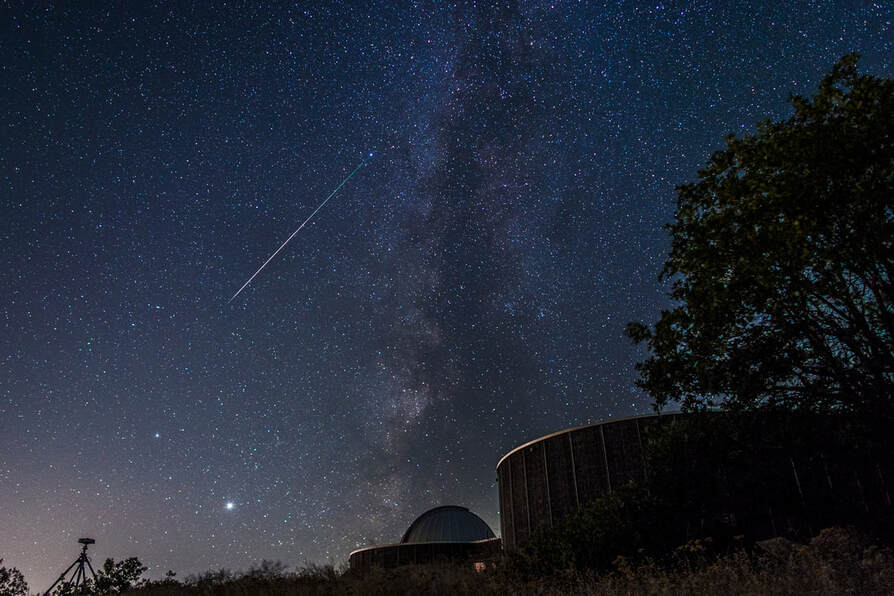
Taken at about midnight on August 24, 2020 and aimed about 35 degrees above the actual horizon and downslope from the Observatory, the center of the Milky Way has set in the southwest, and light pollution from Goldendale - off center to the left (south) and mostly out of the picture is seen illuminating the observatory itself. Many of the most impressive jewels of the night sky are adversely affected. Note the whiter color of the skyglow - a result of the brighter 3000K LED streetlights and unshielded white light LED business and residential outdoor lighting.
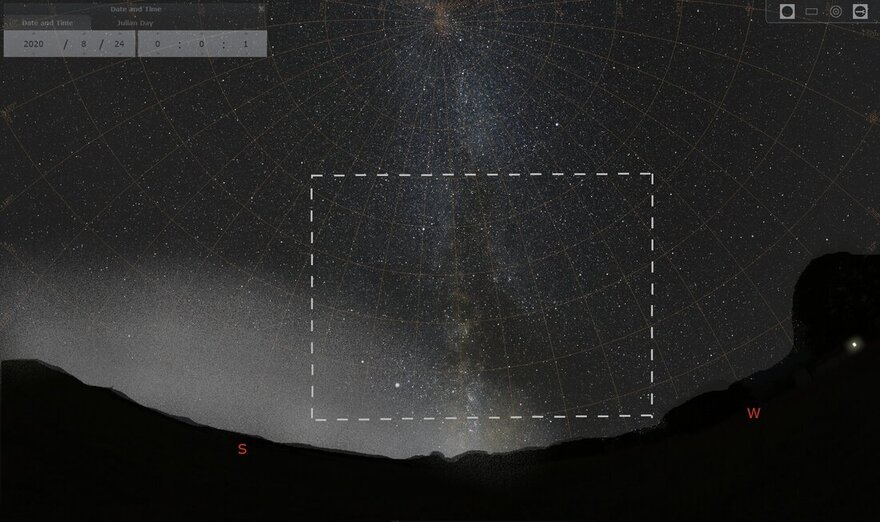
Stellarium light pollution simulation at Goldendale Observatory and approximate coverage of the above photo. The Zenith (directly overhead at light pollution level of Bortle class 4) is at the top of the simulation pane. "There is already too much light pollution from town to get a good view of deep space objects in the southern sky, like the center of our galaxy... " Troy Carpenter, 2014.

Demonstrating over a 40-plus year failure to consider, let alone adopt or implement a coherent night sky conservation management strategy of any kind for the Washington State taxpayer's substantial investment in a public observatory, Washington State Parks officials have also put forth conflicting statements on the importance of preserving the Goldendale Observatory’s essential dark night sky quality asset:
In an April 2017 newspaper interview and his May 31, 2017 Revised Annual Report to the IDA, Interpretive Program Manager Ryan Karlson commendably stated “Preserving the dark sky at the Goldendale Observatory is part of our mission… We will promote the value of preserving our dark skies and support educational outreach to reduce the impacts of light pollution and other threats to this vulnerable natural resource.” (Emphasis added).
In an April 2017 newspaper interview and his May 31, 2017 Revised Annual Report to the IDA, Interpretive Program Manager Ryan Karlson commendably stated “Preserving the dark sky at the Goldendale Observatory is part of our mission… We will promote the value of preserving our dark skies and support educational outreach to reduce the impacts of light pollution and other threats to this vulnerable natural resource.” (Emphasis added).
However, months later on August 2, 2017 (and immediately preceding IDA deliberations on the status of the Observatory's Dark Sky Park designation), Partnership & Planning Manager Steve Brand directly contradicted Karlson when he stated “State Parks supports the dark sky concept, but it isn’t our mission.” (Emphasis added). Note the use of the word "concept." Brand - who was a recipient of Kalson's revised Annual Report - then required the Friends to remove dark sky education outreach activity from their annual Operating Plan, stating “it isn’t part of operating the park.”
Making such a statement for an observatory, let alone an International Dark Sky Park with a pending recertification review and long promoted as "famous for its dark skies" and “a perfect star-gazing spot,” is truly dumbfounding.
The IDA was doubtlessly not impressed, especially as Carpenter (amazingly not a recipient of Kalson's revised Annual Report) continued his longstanding failure to provide a single dark sky education program during the months-long suspension period. This failure continued despite the commitment of Washington State Parks to provide such education as a condition of Dark Sky Park certification in 2010 and possessing an IDA slide set on the importance of night sky conservation since then, and the outline for a proposed dark sky program having been included in Karlson's Revised Annual Report. And most obviously, you don't have to operate an International Dark Sky Park to support protecting the night sky (especially at an astronomical observatory), you just have to be a conscientious human being.
Regardless of the completely erroneous sky quality measurements supplied by Carpenter, the IDA revoked the Dark Sky Park certification of Goldendale Observatory on September 30, 2017 due to “failing to meet the requirements for Dark Sky Park status," not a loss of dark sky quality. Carpenter, who went on to state the Silver Tier designation may have been "too generous," has contradictorily stated the night sky is "beautifully dark and getting darker." Based on independent data provided by the Friends of the Goldendale Observatory (also see SCRIBD article below), in 2017 the facility still met the original Silver Tier level of overhead sky quality (and remains relatively pristine to the west, north, and east).
Had Carpenter and Pratt been unsuccessful in their efforts to make the Dark Sky Park "go away" during the interim suspension period, it would have been fully reinstated under the IDA criteria in effect in 2010, and "grandfathered" when subsequent criteria became applicable. But this would also require provision of night sky education and public advocacy for night sky conservation.
This is something Washington State Parks and its Observatory Administrator are deathly afraid to do as protecting the Observatory's night sky goes against the grain of the local political and business establishment, despite being in the greater interest of the public and Washington State taxpayers, and which was promised to the community college and amateur astronomers who provided the Observatory's telescope.
Did the Washington State Parks & Recreation Commission come to believe that advocating for conservation and protection of the Observatory's night sky isn’t worth the trouble it could cause with a small group of political and business interests, one of whom is a State Representative? Would they feel that way if a State Park mountain stream or lake and its pristine yet vulnerable waters were being irrevocably degraded and its fish harmed by water pollution from a small nearby town, despite the presence of water pollution regulations specifically intended to protect it? What about providing stewardship for Washington’s cherished natural heritage for future generations?
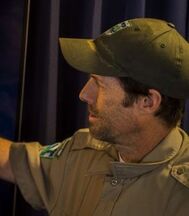
Reinforcing the abandonment of night sky conservation education and advocacy, or any interest in its previous International Dark Sky Park designation, former Washington State Parks employee and Goldendale Observatory interpretive staff James Day stated to a visitor from Seattle in August 2022 that an International Dark Sky Park status "is not within the mission or scope of Washington Parks." Emphasis added. Day is now President of the Friends of Gorge Area Parks. Demonstrating how little concern or genuine interest Washington State Parks has for its one and only astronomical facility, the decision to forfeit a Dark Sky Place designation was reached without public notice, let alone an iota of public input or discussion.
One would expect a State agency with a core value of "involving the public in our policy development and decision making," and spending millions of taxpayer dollars on its unique public Observatory, to solicit guidance from a broad community of experts in astronomy as well as stakeholders from across the State when considering appropriate stewardship activities for a State Park “famous for its dark skies.” Instead, acting unilaterally and without any public input, Washington State Parks personnel have shown they will only do what they are familiar with, is convenient for their bureaucracy, and acceptable to the special interests who just might affect their budget.
Washington State Parks original promises to meet Dark Sky Park requirements and responsibly educate and advocate for conservation of the public's night sky "vulnerable natural resource" outside the boundaries of a State Park, and protect the taxpayers observatory and telescope investment, apparently makes some Washington State Parks personnel squeamish. Instead, they seem to believe that installing dark-sky friendly lighting at the Observatory was their only obligation to be considered an International Dark Sky Park -- as if protecting the five acres of night sky immediately above the Observatory could actually accomplish meaningful "stewardship" for the night sky.
Demonstrating a complete breakdown of public accountability, instead of providing stewardship advocacy for future generations of Washington's "cherished" and "vulnerable" dark sky natural resource heritage, the Goldendale Observatory State Park "Heritage Site" management and staff instead are preoccupied with promoting themselves and the economic and commercial gain of a small group of local businesses interests, as Carpenter himself emphasized: "it is our priority – overwhelmingly so. Absolutely."
Washington State Parks original promises to meet Dark Sky Park requirements and responsibly educate and advocate for conservation of the public's night sky "vulnerable natural resource" outside the boundaries of a State Park, and protect the taxpayers observatory and telescope investment, apparently makes some Washington State Parks personnel squeamish. Instead, they seem to believe that installing dark-sky friendly lighting at the Observatory was their only obligation to be considered an International Dark Sky Park -- as if protecting the five acres of night sky immediately above the Observatory could actually accomplish meaningful "stewardship" for the night sky.
Demonstrating a complete breakdown of public accountability, instead of providing stewardship advocacy for future generations of Washington's "cherished" and "vulnerable" dark sky natural resource heritage, the Goldendale Observatory State Park "Heritage Site" management and staff instead are preoccupied with promoting themselves and the economic and commercial gain of a small group of local businesses interests, as Carpenter himself emphasized: "it is our priority – overwhelmingly so. Absolutely."
It is often said the United States has the best democracy money can buy. This occurs at local, state, and national levels, and is especially true in Klickitat County, which is often referred to by the locals as being "run like a plantation." Lets meet some of the local plutocrats Washington State Parks is beholden to:
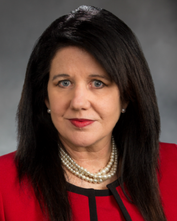
Goldendale native and conservative Washington State Representative Gina Mosbrucker (formerly McCabe) and her family own a number of Goldendale businesses including the Quality Inn Hotel, Chevron gas station, an RV park or two, a dance studio, a Papa John’s Pizza, and more. Mosbrucker is a fifth generation resident of Goldendale, a former VP and Executive Director of the Goldendale Chamber of Commerce, and is the CEO and General Manager of the Quality Inn Hotel in Goldendale. Mosbrucker's political mantra includes "government regulations have become out-of-control," and she pledges to “ease onerous and burdensome government regulations” and “fight against increased regulations… on business’" (sic).
Mosbrucker has owned and operated a dance studio in Goldendale that for over 30 years has violated the City of Goldendale lighting code intended to protect the night sky of the Goldendale Observatory. The ancient unshielded, inefficeint, and highly light-polluting mercury vapor "yard blaster" light outside her dance studio produces lumen-for-lumen the most damaging light pollution of just about any type of outdoor lighting -- emitting light almost entirely in the much more highly-scattered blue-green part of the visible spectrum.
Therefore it is no wonder that at the 2016 Gorge Night Sky Symposium, held in part at the Goldendale Observatory, Mosbrucker (McCabe) ironically made no mention whatsoever about the night sky, let alone the need to conserve and protect the night sky from light pollution for the benefit of the Goldendale Observatory. Protecting and conserving the night sky was the whole point of the event, and why the Goldendale Observatory International Dark Sky Park was selected as one of the venues for the two-day event.
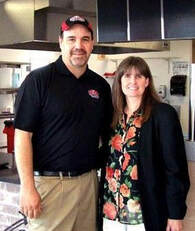
But as Mosbrucker's dance studio and other businesses demonstrate, the Mosbrucker family doesn't really give a damn about conserving the night sky for the Observatory. Just prior to the Night Sky Symposium, Mosbrucker met with her sister, Angela (Mosbrucker) Hoffman – an accountant who also oversees the family businesses – voicing opposition to the much needed proposed lighting code improvements that were based on city and county "dark sky community" lighting ordinances recognized as some of the best in the nation. Hoffman demanded that a local "Lighting Task Force" be formed. Of course the Mayor (who had succeeded Peck as the Director of Klickitat County Economic Development) acquiesced and hand-picked the Task Force members, most of whom had little to no knowledge of astronomy, outdoor lighting best practices, or International Dark Sky Park conservation requirements.
Of course Hoffman herself was appointed to the Task Force and argued with zeal and egregious disinformation* against many of the best-practice improvements that had been incorporated in the outdoor lighting code revision to better protect the night sky. She went so far as to hire an alleged lighting industry "expert" to support her disingenuous and ludicrous arguments.
Of course Hoffman herself was appointed to the Task Force and argued with zeal and egregious disinformation* against many of the best-practice improvements that had been incorporated in the outdoor lighting code revision to better protect the night sky. She went so far as to hire an alleged lighting industry "expert" to support her disingenuous and ludicrous arguments.
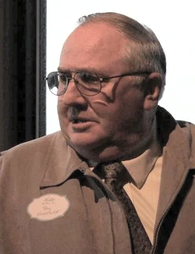
The patriarch of the Mosbrucker clan, then Klickitat County PUD Commissioner Ray Mosbrucker, made a cameo at a Lighting Task Force meeting to confer with his daughter. Hoffman then announced that the Goldendale Observatory and Washington State Parks were not the ones advocating for lighting code improvements. Washinton State Parks Area Manager Pratt at no time said anything in support of improving the conservation of the night sky of the Goldendale Observatory State Park. Demonstrating the degree to which Washington State Parks is beholden to the local plutocracy, he also explicitly stated Washington State Parks was not advocating for any improvements to the Goldendale lighting code. Widely recognized and accepted best-practice standards for night sky conservation , now IDA lighting ordinance requirements, were removed by a majority vote of the task force from the revised Goldendale lighting code.
Cyborg vs human vision: For humans chromatic adaptation means white always looks white by candlelight or in bright daylight.
|
|
* Hoffman stated a 3000 K color temperature requirement ("warm white") would "make it impossible to tell the difference between spilled coffee, oil, or blood" - a ludicrous and blatant misrepresentation, since even incandescent light bulbs (2700 K) make such an argument utter nonsense. Despite presenting facts to the Lighting Task Force about chromatic adaptation, the 3000 K requirement for new outdoor lighting was removed, and in spite of 3000 K having been adopted for Goldendale's new LED street lights.
Of course, service station lighting is purposefully designed to be excessive and "sparkly bright" with more environmental, human health, and sky-damaging blue wavelengths. This is done in order to attract motorists like moths. Coincidentally, Hoffman and her husband (shown above) own and operate the local Chevron station. Note how the 5000 K service station canopy lights far outshine the adjacent HPS streetlights and the lighting-code violating unshielded Mercury vapor driveway entrance streetlight: |
|
"I recently stayed in Goldendale only because the international Dark-Sky Association announced that the Observatory was named a silver-tier IDA Dark Sky Park. Prior to the IDA's press release, I had never heard of Goldendale... However, light pollution from the town was a bit bothersome... For your information, I stayed at the Quality Inn but did not patronize the nearby Chevron because of their obnoxioulsy bright lights."
Karen L Miller, MD
Salt Lake City, Utah
July 17, 2013 letter to the Greater Goldnedale Area Chamber of Commerce
Karen L Miller, MD
Salt Lake City, Utah
July 17, 2013 letter to the Greater Goldnedale Area Chamber of Commerce
|
|
Laughably, two years after the "lighting task force" – led by Hoffman – nuked effective night-sky protection in Goldendale, Mosbrucker and family decided to open a new "Stargazers" RV park next to their motel: |
|
The collusion between Washington State Park's Troy Carpenter and Lem Pratt, Dana Peck and Jonathan Lewis of the Goldendale Chamber of Commerce, and the Mosbrucker family's neutering of effective measures to protect the night sky of the Goldendale Observatory – unopposed by Pratt and Washington State Parks – was and remains obvious through words and actions.
It fully exposed Washington State Park's total disregard for and non-compliance with International Dark Sky Park education and advocacy requirements, and the complete disregard for protecting the Goldendale Observatory's night sky by Washington State Parks, Goldendale, Klickitat County, and the local business community.
It fully exposed Washington State Park's total disregard for and non-compliance with International Dark Sky Park education and advocacy requirements, and the complete disregard for protecting the Goldendale Observatory's night sky by Washington State Parks, Goldendale, Klickitat County, and the local business community.
The night sky is 100% recoverable, and light pollution is one of the easiest environmental problems to fix, which will usually pay for itself in the long run through increased energy efficiency and electricity bill savings, as well as enhancing effectiveness, safety, and visual appeal.
Goldendale's 2017 revised lighting code admirably requires use of full cutoff ("fully shielded") fixtures, and the use of motion sensors and timers for non and partially shielded outdoor lighting. However it has not been publicized, promoted, or enforced, and has a prolonged seven year "grandfathering" clause. Added to this is the explosion of bright white LED outdoor lighting throughout the city and county. Given the 40 years worth of pre-existing non-compliant lighting already present, the ordinance changes are grossly inadequate to restore the night sky to what it could and should be, even if it eventually is complied with. For example, thanks to business community objections, the Lighting Task Force eliminated well established best-practice provisions that would control excessive illumination via lumen limitations based on use or area (amount), color temperature (spectrum), and well established standards for illuminated outdoor sign lighting in order to reduce glare, over-lighting, and skyglow.
|
Worse than an unshielded streetlight. The specific exemption for internally-illuminated outdoor signs is a good example of the business community’s unwillingness to be regulated for these sources of light pollution. No serious dark sky ordinance includes such an exemption. The average citizen, if asked to comply with good outdoor lighting practices, and observing that businesses are not held to similar standards for their outdoor signs, might question night sky protection requirements due to the double-standard contained within the revised lighting code.
|
While the Goldendale Chamber's business interests provide enormous lip service for supporting the Goldendale Observatory, it is little wonder that local lighting codes have rarely - if ever - been applied in practice within Goldendale or Klickitat County. While a Dark Sky Park designation can enhance tourism, local business and political interests apparently can’t be bothered with pesky regulations to actually protect the dark night sky heritage nature has provided, which was a main reason the telescope was sited away from Portland/Vancouver.
The only motivator in the business community for the Goldendale Observatory is economic exploitation, not genuine appreciation of the night sky or observational astronomy.
The only motivator in the business community for the Goldendale Observatory is economic exploitation, not genuine appreciation of the night sky or observational astronomy.
If you listen carefully, you can hear the amateur astronomers who built the Observatory's telescope and purposely tried to locate it where it would have a dark night sky well into the future, rolling over in their graves.
|
|
“Light pollution from Goldendale, Wash. floods the sky on a cloudy night at the Goldendale Observatory State Park on Tuesday, Dec 9, 2014. The observatory, run by the Washington State Parks, is a dark sky destination for people from around the region, and is the only public observatory in the Northwest.”
Yakima Herald-Republic/Photo: Mason Trinca |
|
The Washington State Parks and Recreation Commission understandably has no familiarity with astronomical facilities, yet has failed to involve any knowledgeable and qualified expertise or broad-based stakeholder guidance for this unique astronomical asset. It therefore has not provided appropriate oversight for the development of best-practice management priorities – such as the need for the conservation of a dark night sky required for such a valuable astronomy resource of "international importance." Consequently no strategic vision or mission appears to have been established for the Observatory, which has led to the failure to properly define and develop goals and objectives that meet priorities on behalf of the state-wide public’s interests.
In this vacuum, the organizational culture of the State Park has been influenced by the opportunistic self-serving interests of the local staff and political-business community, while the broader interests of the public and taxpayers of Washington have been abandoned.
In this vacuum, the organizational culture of the State Park has been influenced by the opportunistic self-serving interests of the local staff and political-business community, while the broader interests of the public and taxpayers of Washington have been abandoned.
|
While Washington taxpayers have invested millions of operational dollars in the Goldendale Observatory since 1980, and additional millions of dollars for recent telescope and facility improvements, the Observatory’s irreplaceable night sky natural heritage asset continues to be slowly damaged for future generations through decades of ongoing neglect. Washington taxpayers are tragically being left holding the bag with a very costly Observatory, and a telescope with increasingly degraded views of the wonders in the night sky for which it was originally intended: |
In 1971 Clark College had the wisdom to seek "the professional advice of astronomers" when it came to how to protect the proposed observatory's night sky from Goldendale's lights - something Washington State Parks seems incapable of or unwilling to do. From this came the recommendation - and subsequent promises by Goldendale and Klickitat County - to protect the telescope's night sky through enactment of lighting codes and education to limit and reduce light pollution. Had these promises not been made, the telescope would not have been sited in - let alone anywhere near - the City of Goldendale.
|
The dedicated amateur astronomers who spent six years of their lives, and the generous community college which funded the building the Goldendale Observatory’s massive 24½ inch telescope have been thoroughly betrayed.
Decades of non-enforcement of Goldendale and Klickitat County lighting codes have resulted in the Observatory’s southern sky slowly brightening year after year. Views of many splendid astronomical marvels in the southern part of the sky are muddied, and the grandeur of the center of the Milky Way is being increasingly veiled by the faint glow of artificial light: |
The revocation of Goldendale Observatory State Park's status as an International Dark Sky Park was a self-inflicted black eye for Goldendale, Klickitat County, and Washington State.
Nonetheless, while acting appropriately to protect the integrity of its Dark Sky Places Program, the IDA graciously left open the possibility for re-designation of the Goldendale Observatory. The IDA has a relatively long association with Goldendale Observatory and appears to wish to encourage positive steps to fulfill Dark Sky Park principles in Washington.
In order to conserve and protect its dark sky natural heritage, Washington State Parks would have to lead by example and reverse their resistance to advocacy for conservation and protection of the Goldendale Observatory’s vulnerable and threatened night sky. Without such "passionate advocacy," the City of Goldendale and Klickitat County are totally incapable of doing the right thing by acting to enforce and improve the lighting codes they promised and adopted over 40 years ago to protect the Observatory's "valuable dark sky experience." Such action to conserve and protect the Observatory's night sky needs to be taken - before it becomes too late.
The revocation of Goldendale Observatory State Park's status as an International Dark Sky Park was a self-inflicted black eye for Goldendale, Klickitat County, and Washington State.
Nonetheless, while acting appropriately to protect the integrity of its Dark Sky Places Program, the IDA graciously left open the possibility for re-designation of the Goldendale Observatory. The IDA has a relatively long association with Goldendale Observatory and appears to wish to encourage positive steps to fulfill Dark Sky Park principles in Washington.
In order to conserve and protect its dark sky natural heritage, Washington State Parks would have to lead by example and reverse their resistance to advocacy for conservation and protection of the Goldendale Observatory’s vulnerable and threatened night sky. Without such "passionate advocacy," the City of Goldendale and Klickitat County are totally incapable of doing the right thing by acting to enforce and improve the lighting codes they promised and adopted over 40 years ago to protect the Observatory's "valuable dark sky experience." Such action to conserve and protect the Observatory's night sky needs to be taken - before it becomes too late.
Citizens, taxpayers, and the public concerned with how their State Observatory is being managed and cared for can contact the following:
Washington State Senators and Representatives
Washington State Parks & Recreation Commissioners (360) 902-8502 [email protected]
City of Goldendale
Klickitat County Board of Commissioners
Washington State Senators and Representatives
Washington State Parks & Recreation Commissioners (360) 902-8502 [email protected]
City of Goldendale
Klickitat County Board of Commissioners
The opinions expressed are solely those of the author, and may not represent those of the DSI, FDSC, or their affiliates and members.
About the Author of this Website
|
At the age of six I became hooked on astronomy after looking through my godfather’s telescope at craters on the Moon. Seeing my amazement, my parents got me a 2.4 inch refractor telescope for Christmas, and later took me to a planetarium where I could experience a dark “night sky” unencumbered by the bright suburban lights in the San Francisco Bay Area. The following summer, while camping near Mt. Lassen in Northern California, we saw the real Milky Way and I was lost and mesmerized by the starry vastness of the universe.
I built my first telescope in 7th grade - a six inch reflector, and have designed and built several others since then. I know first-hand what it is like to spend years devoted to doing so. In high school I was awarded Guest Fellowship at NASA Ames Research Center, and witnessed in real-time the Viking Mars landing and the first Pioneer flyby of Jupiter, and met Carl Sagan at a lecture. In 1979 I traveled to Goldendale with other amateur astronomers to see the total solar eclipse at the Goldendale Observatory, and it was a life-changing event, contributing to a deeper interest is solar observation. I was amazed that amateur astronomers had built such a professional observatory-class instrument as the Goldendale Observatory 24½ inch telescope. Like the builders of the Clark College 24.5 inch telescope, I moved to Klickitat Co. to escape light pollution of the Portland/Vancouver metro area, naively believing that the presence of the famous Goldendale Observatory and the adopted lighting codes meant to educate the public and protect the Observatory would naturally be supported. After volunteering at the Observatory I learned how completely erroneous my assumptions were. Prior to the revocation of the International Dark Sky Park designation, I was awarded a Dark Sky Defender award by the International Dark-Sky Association for efforts to protect the night sky of the Goldendale Observatory. I'm proud to have stood up to support upholding the promises made to the amateur astronomers who built the Goldendale Observatory's main telescope. I'm even more proud to have protected the legitimacy and integrity of the International Dark Sky Place designation from those individuals, organizations, and agencies who would dishonestly attempt to co-opt, exploit, and pervert it. Robert Yoesle, amateur astronomer & telescope maker, BS magna cum laude Business Management & Communication, AA Natural Sciences, retired paramedic. |
|
Your browser does not support viewing this document. Click here to download the document.
